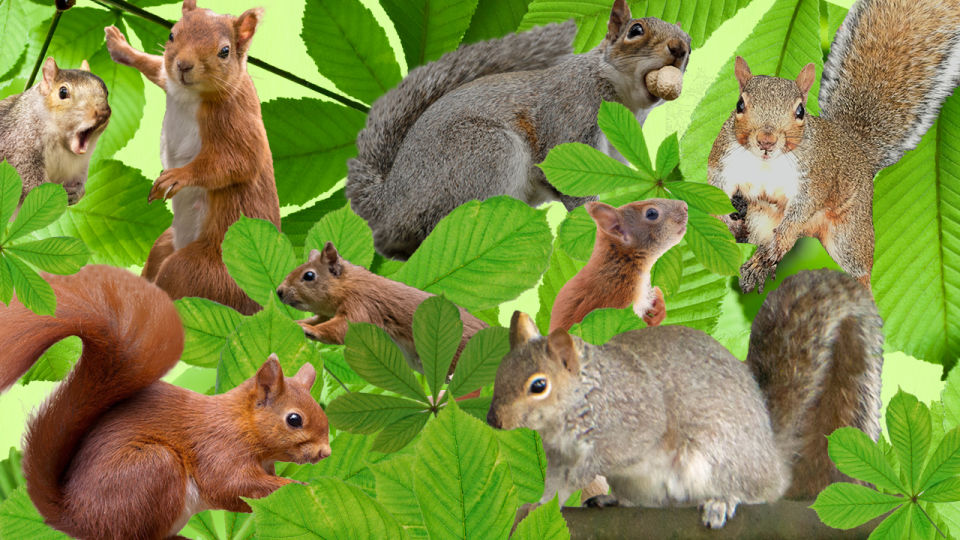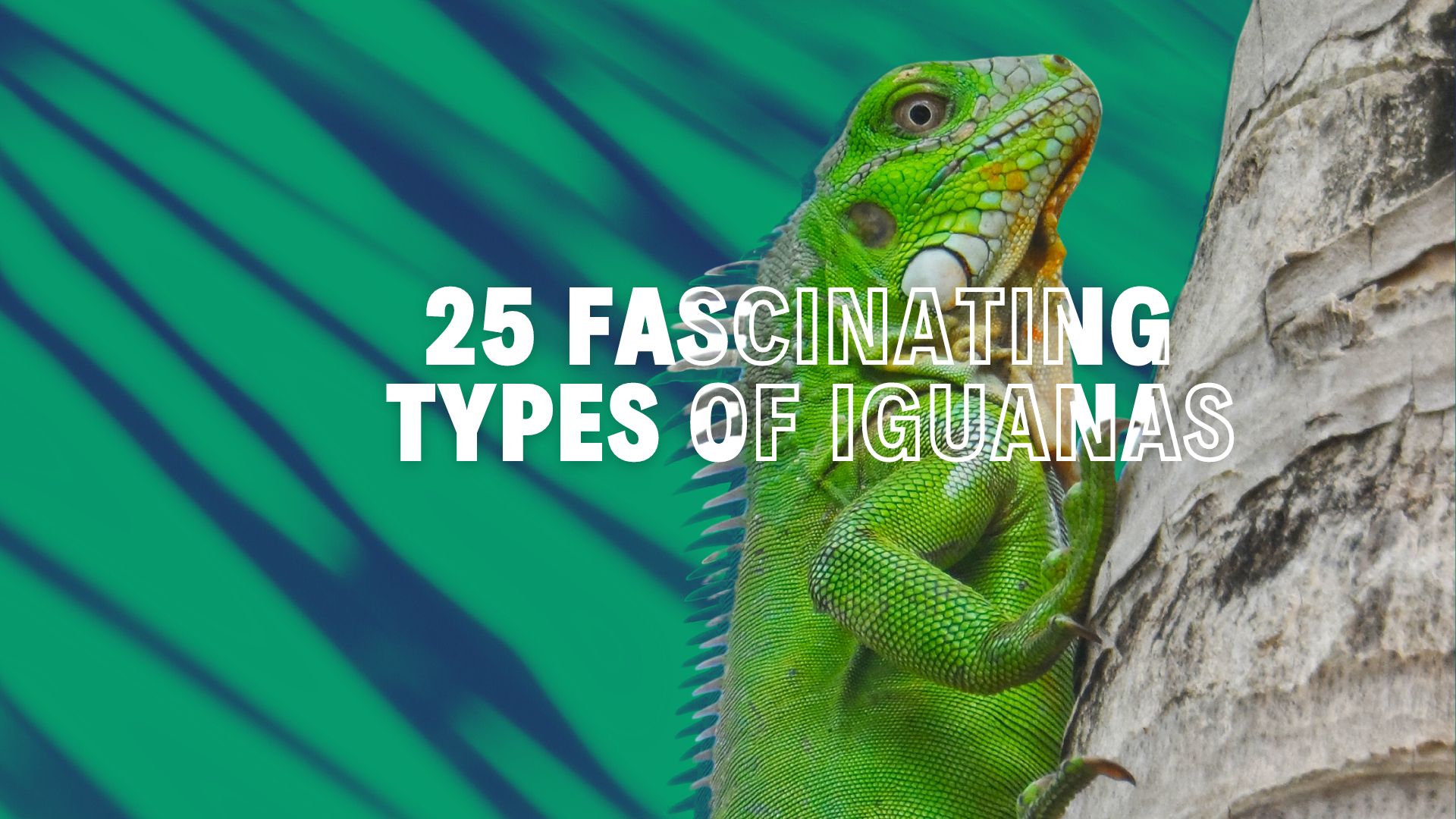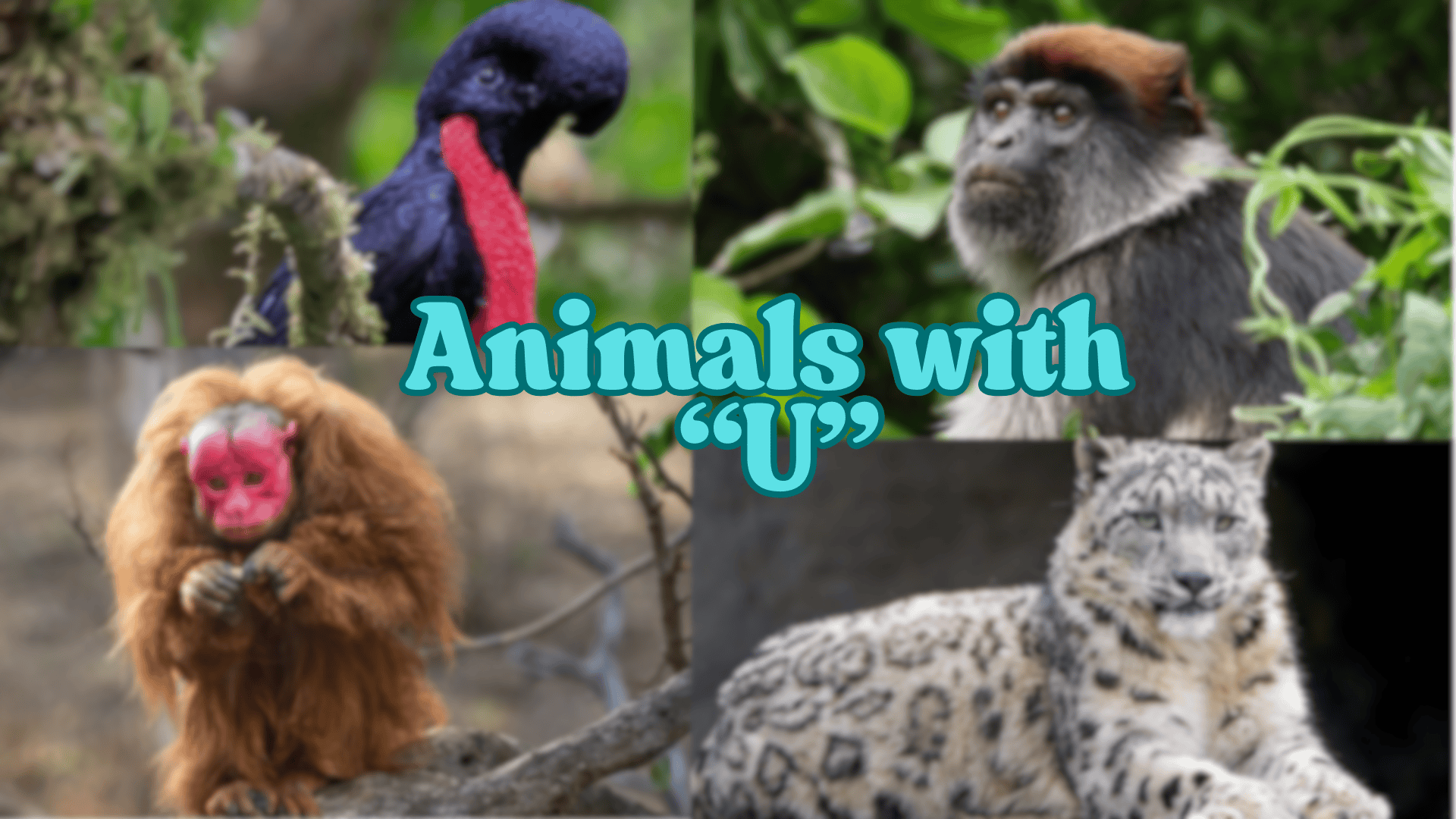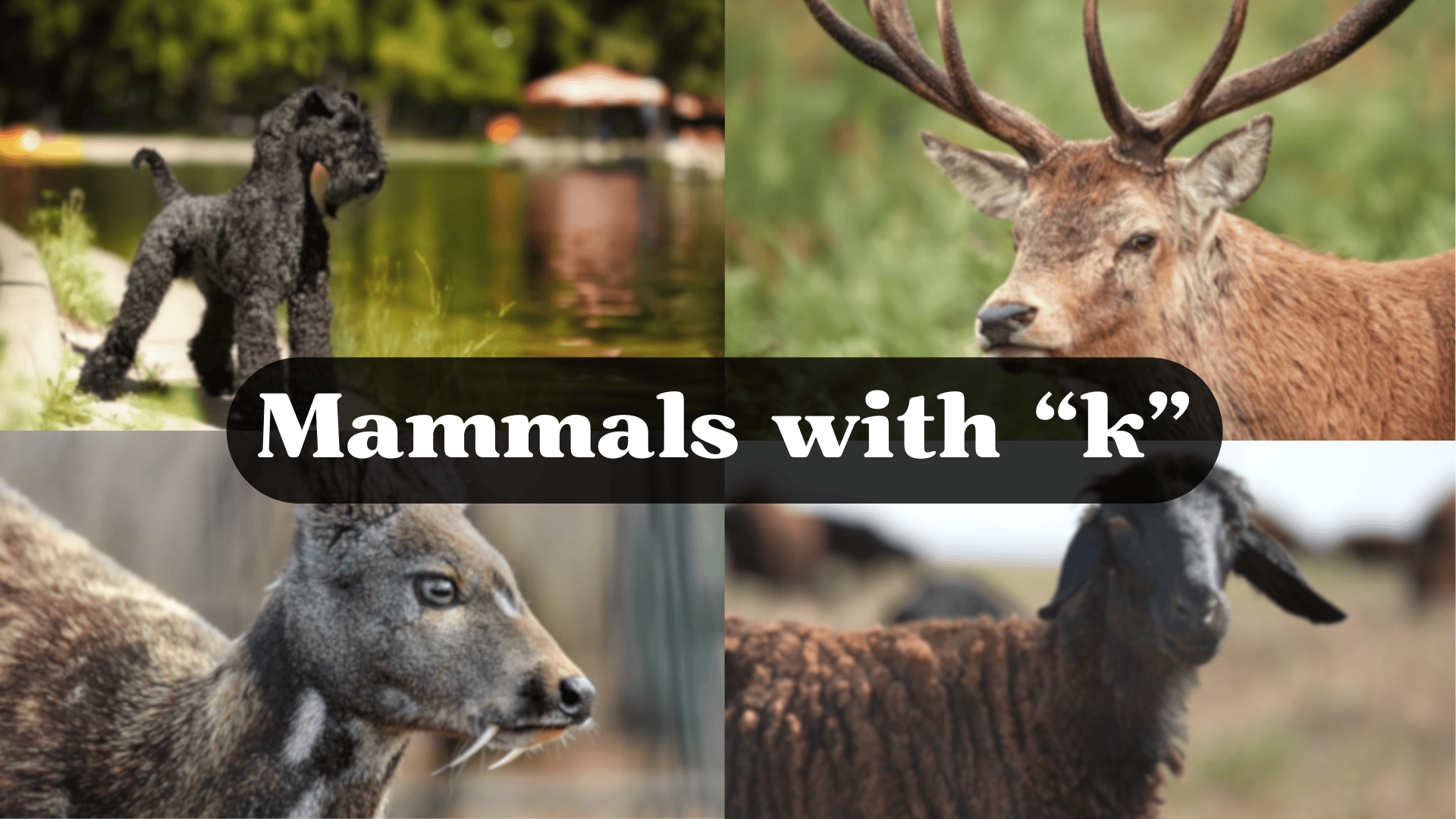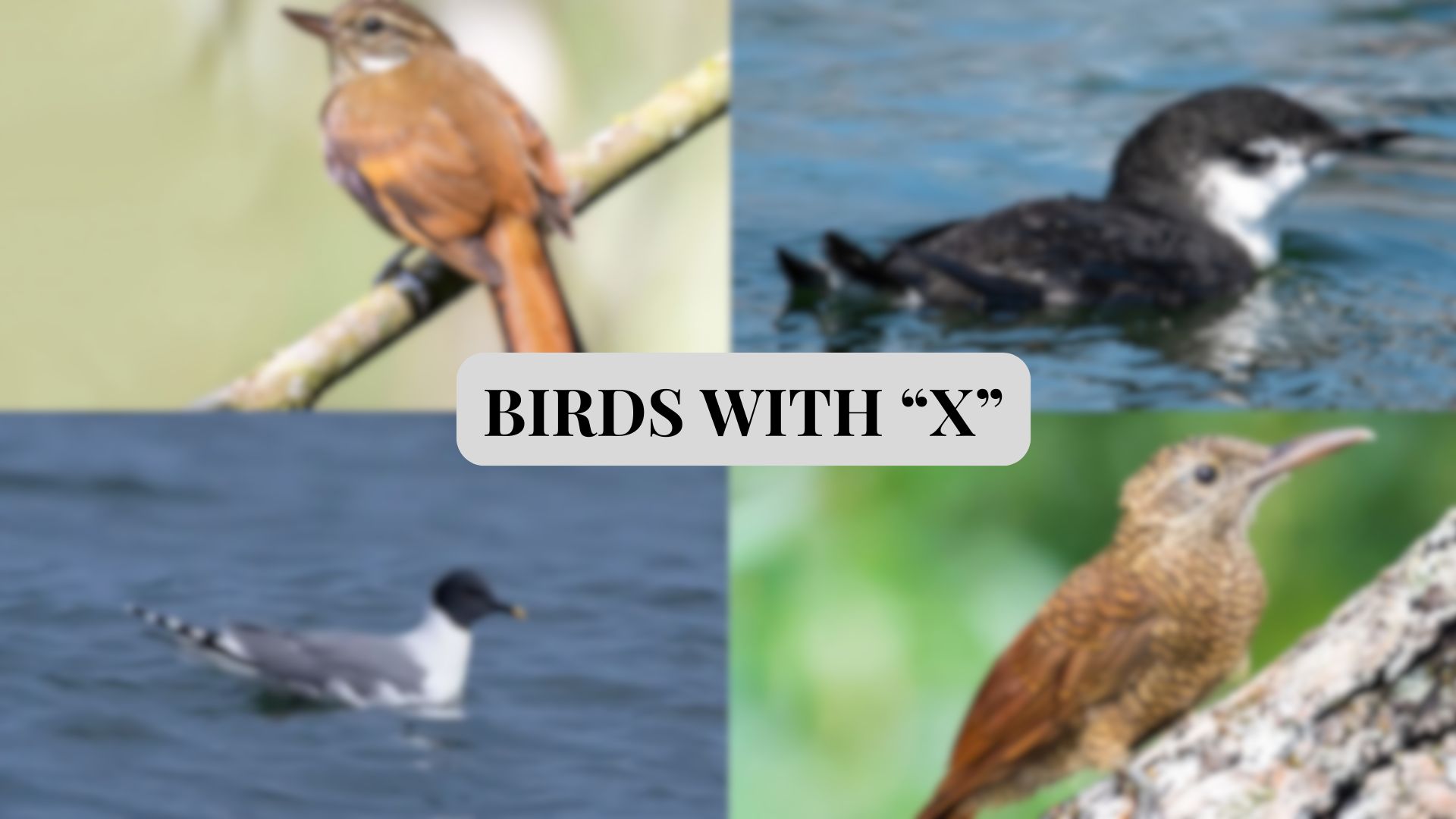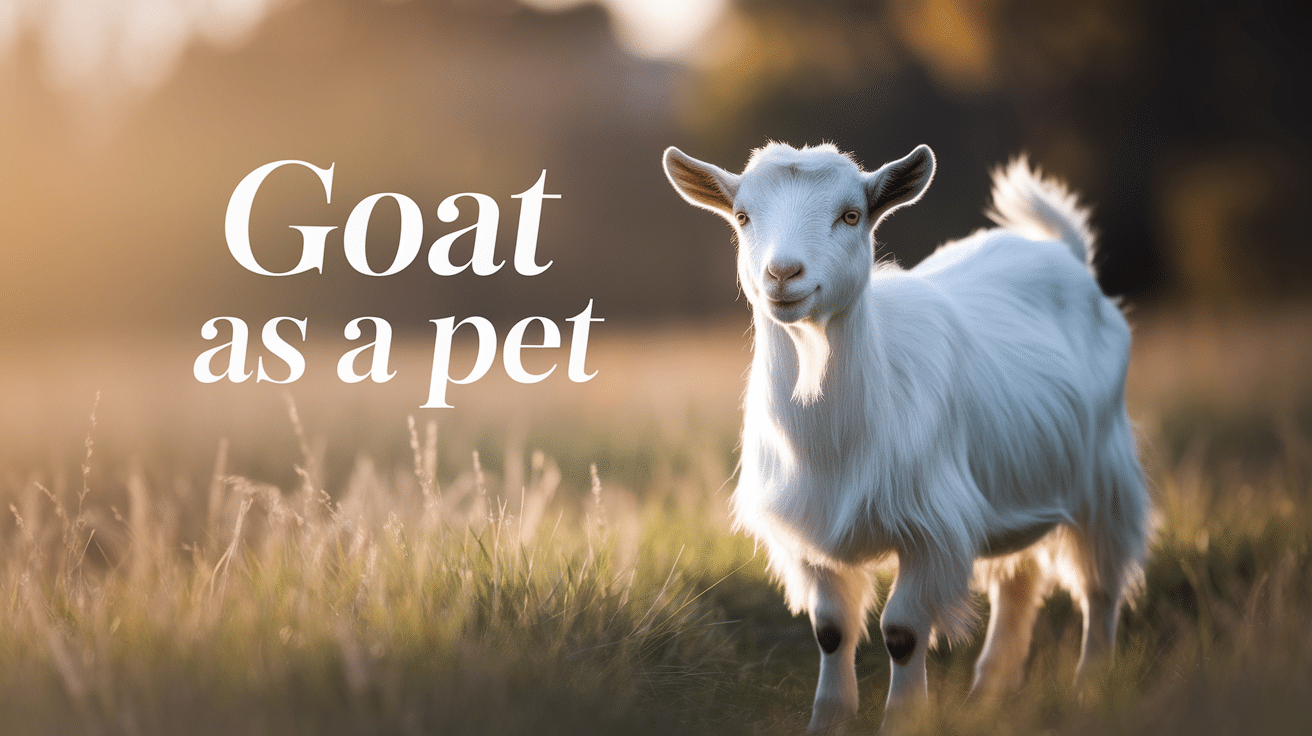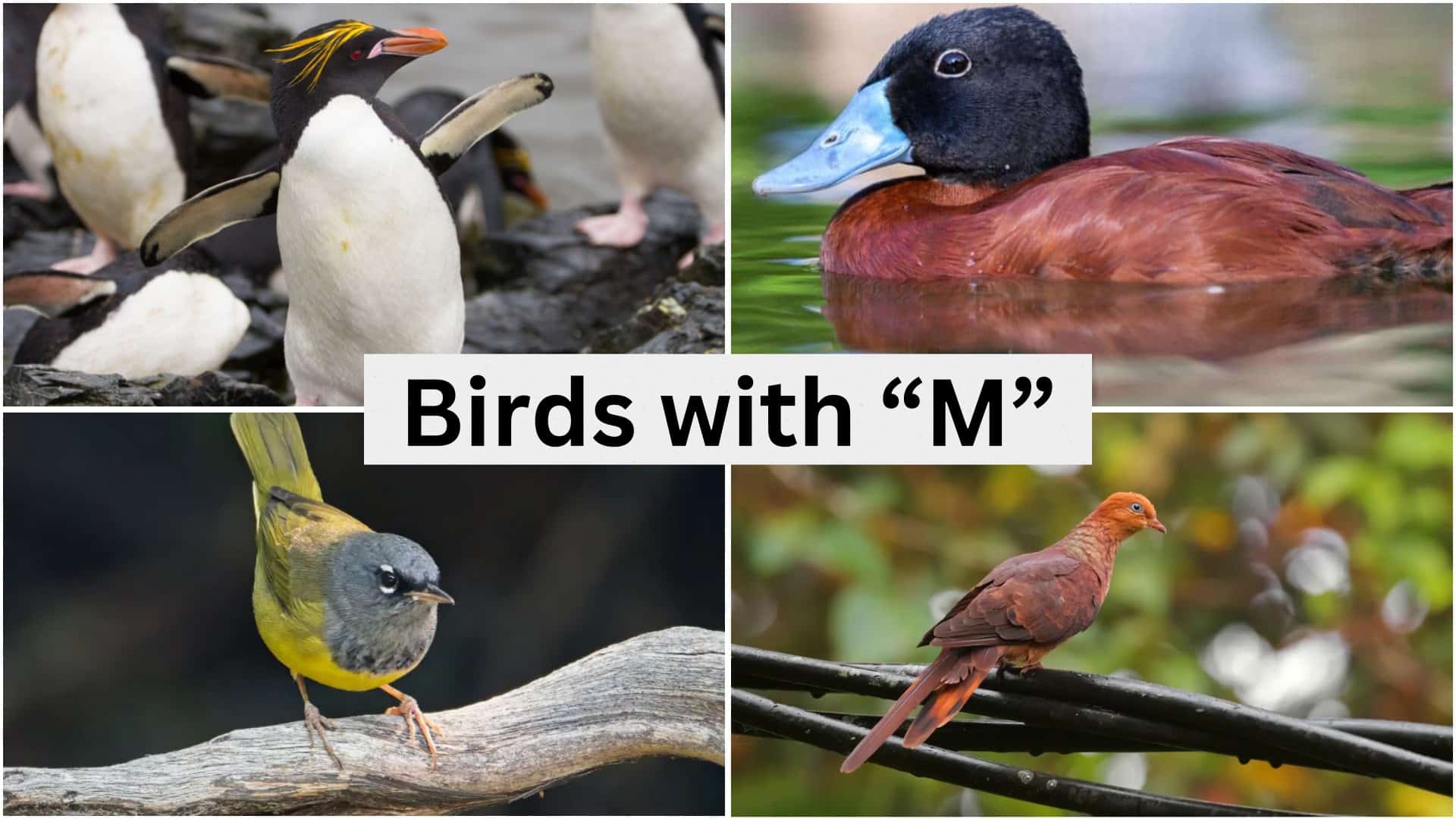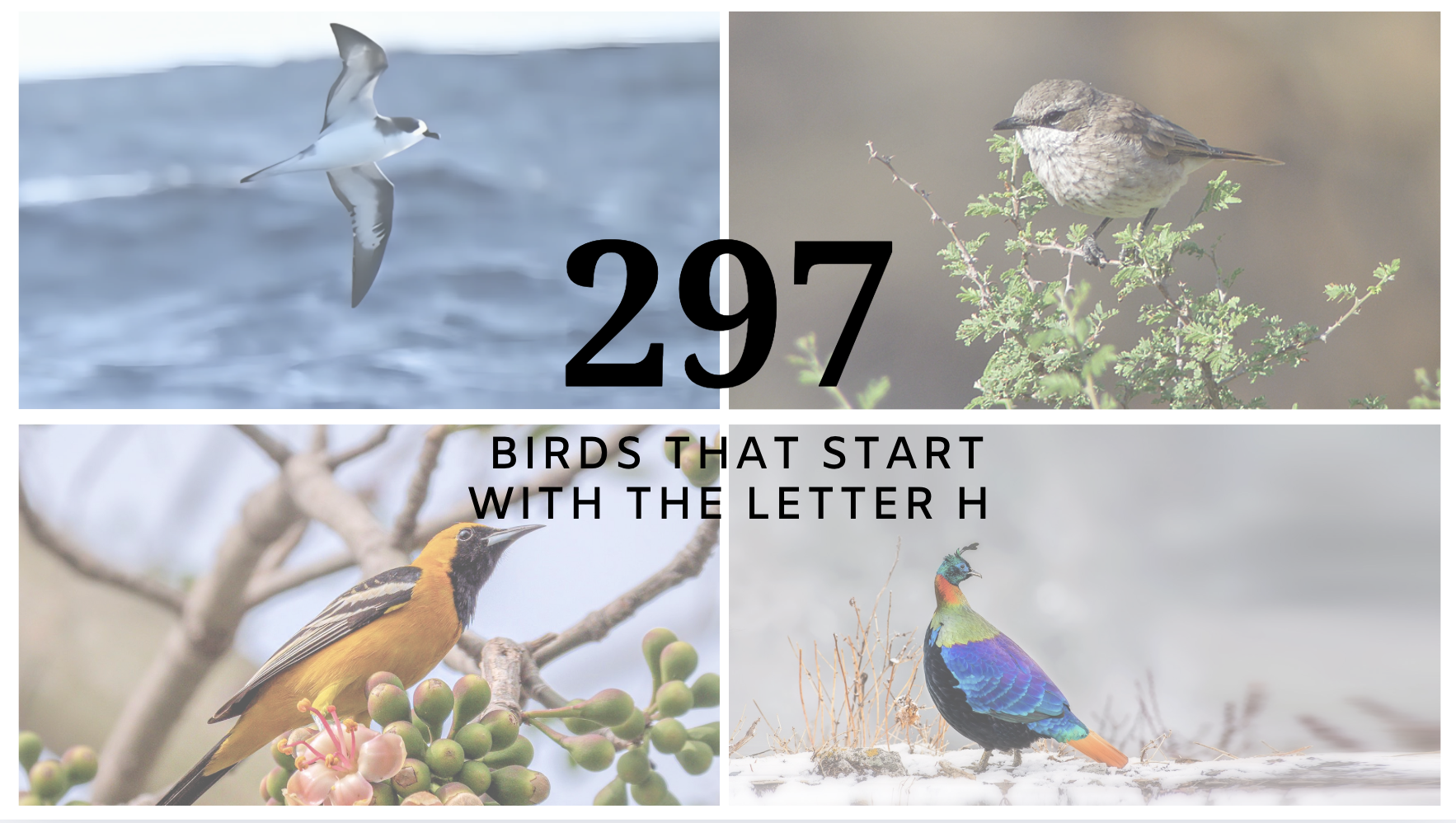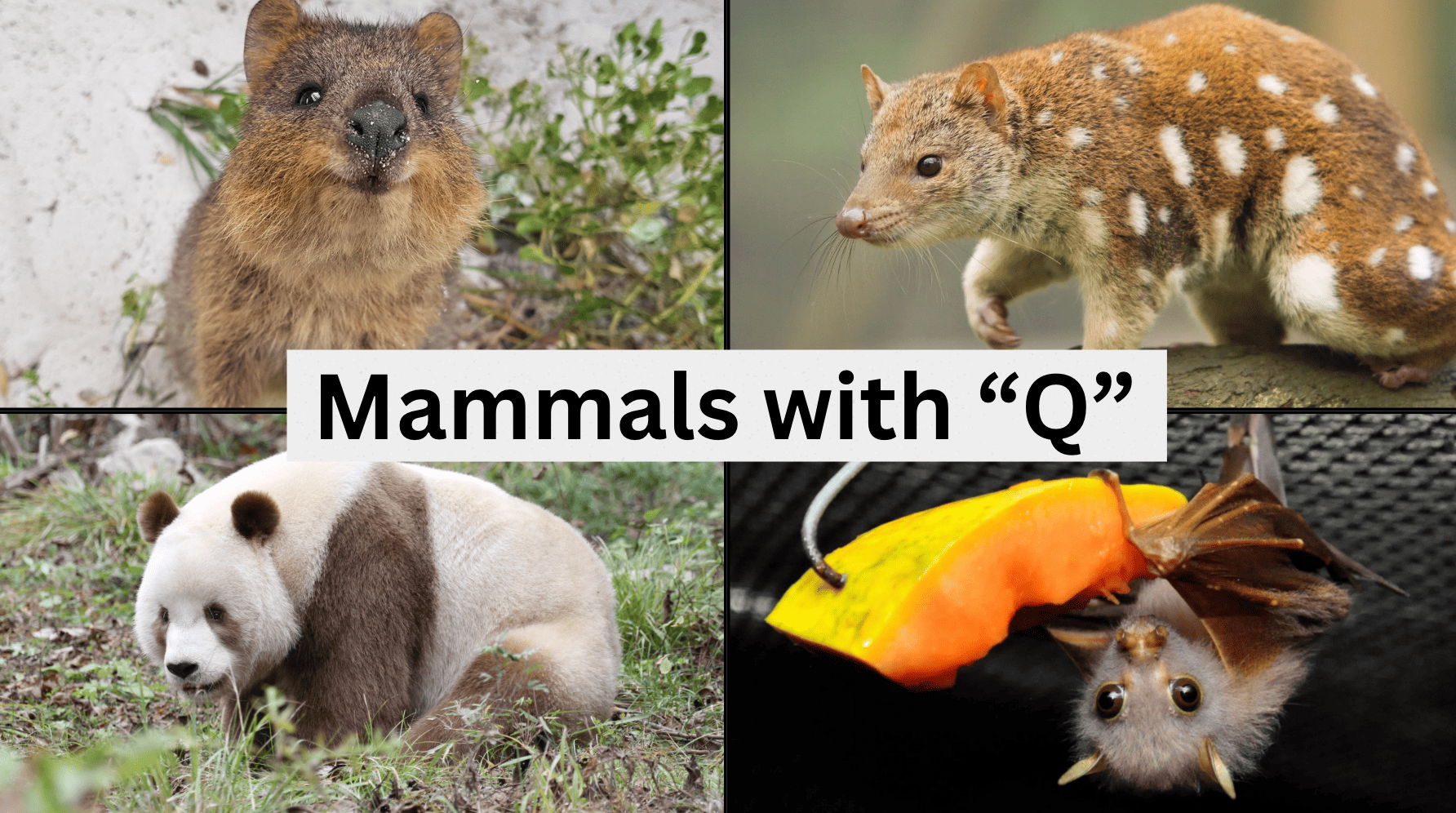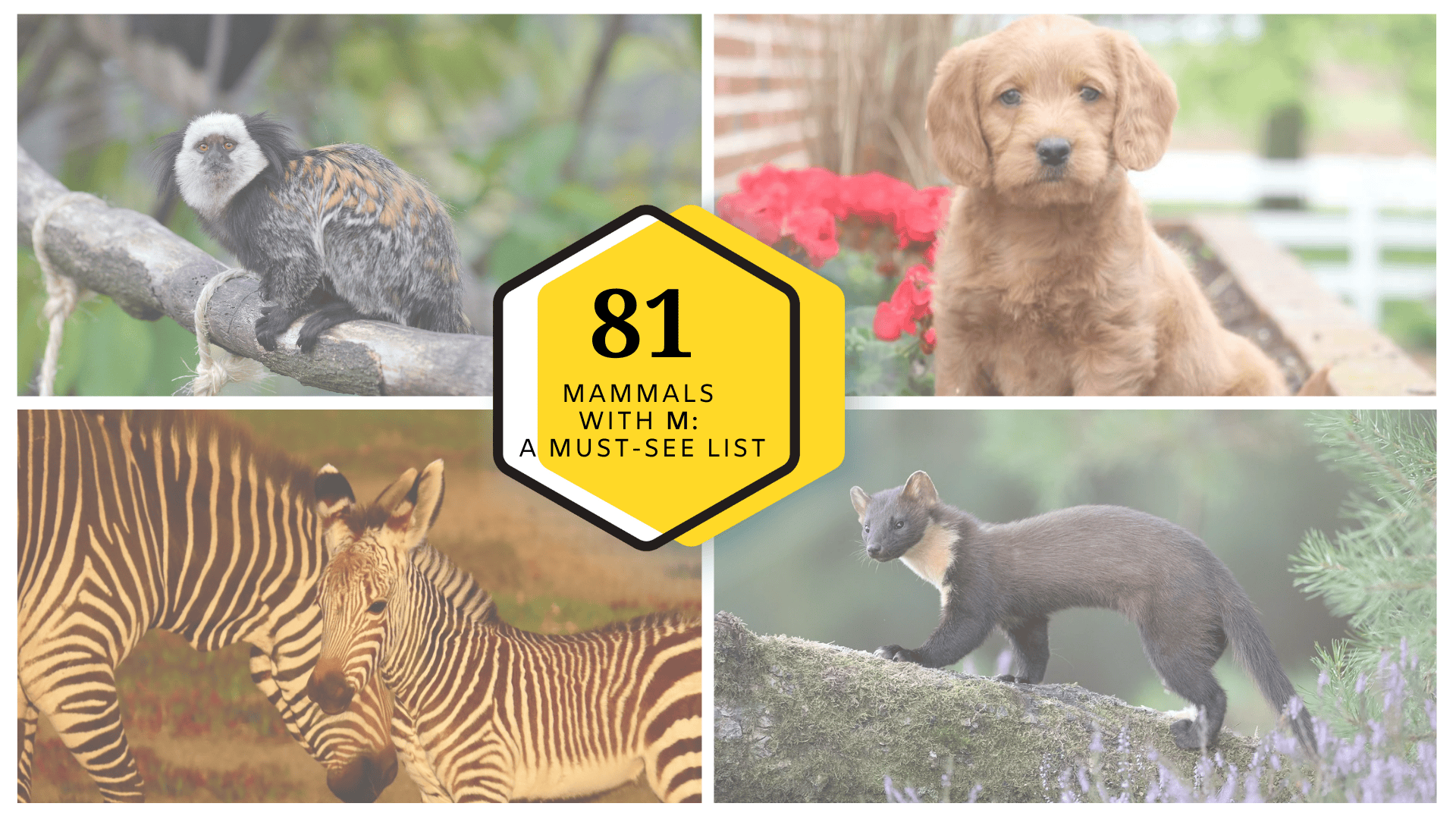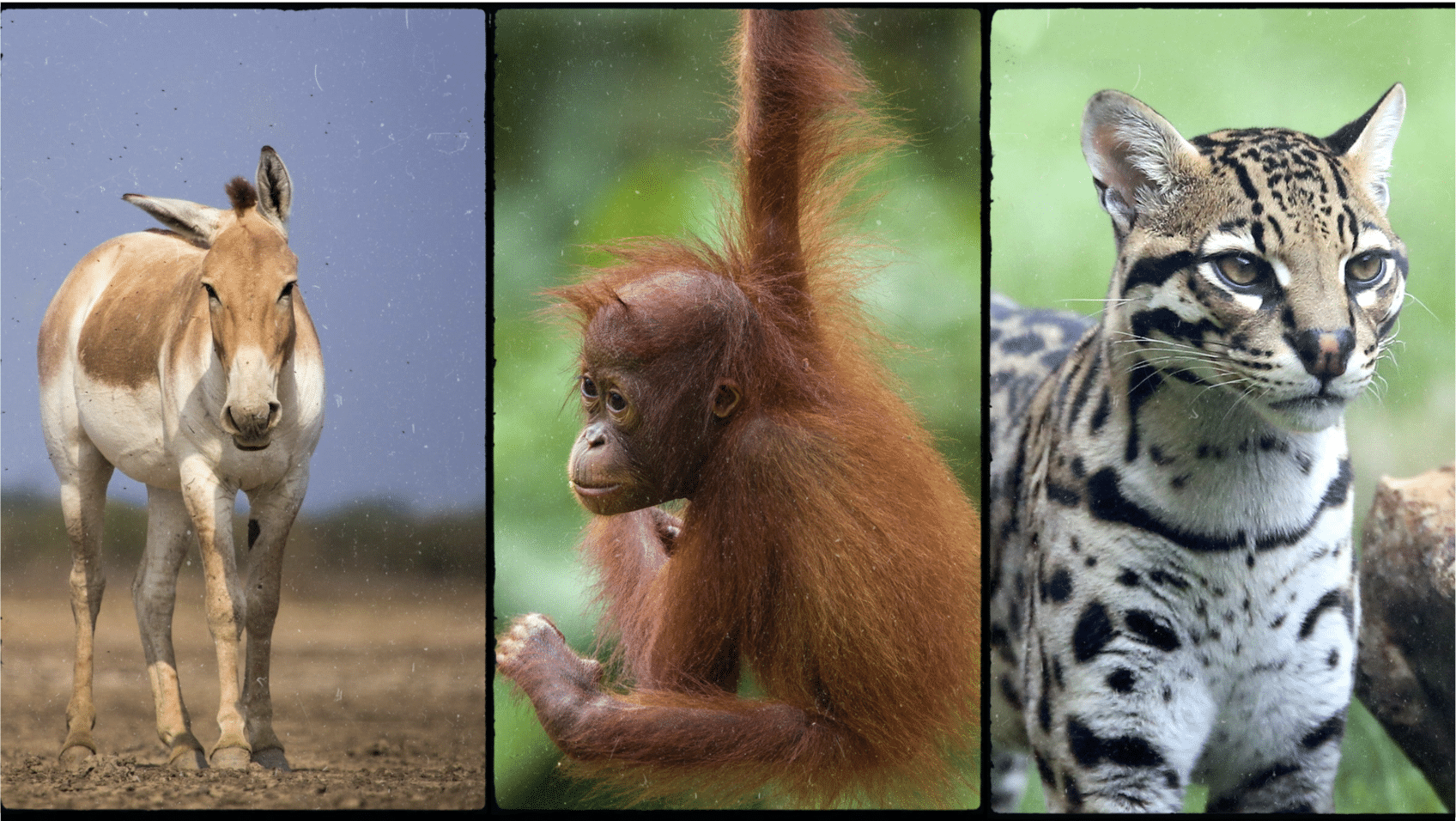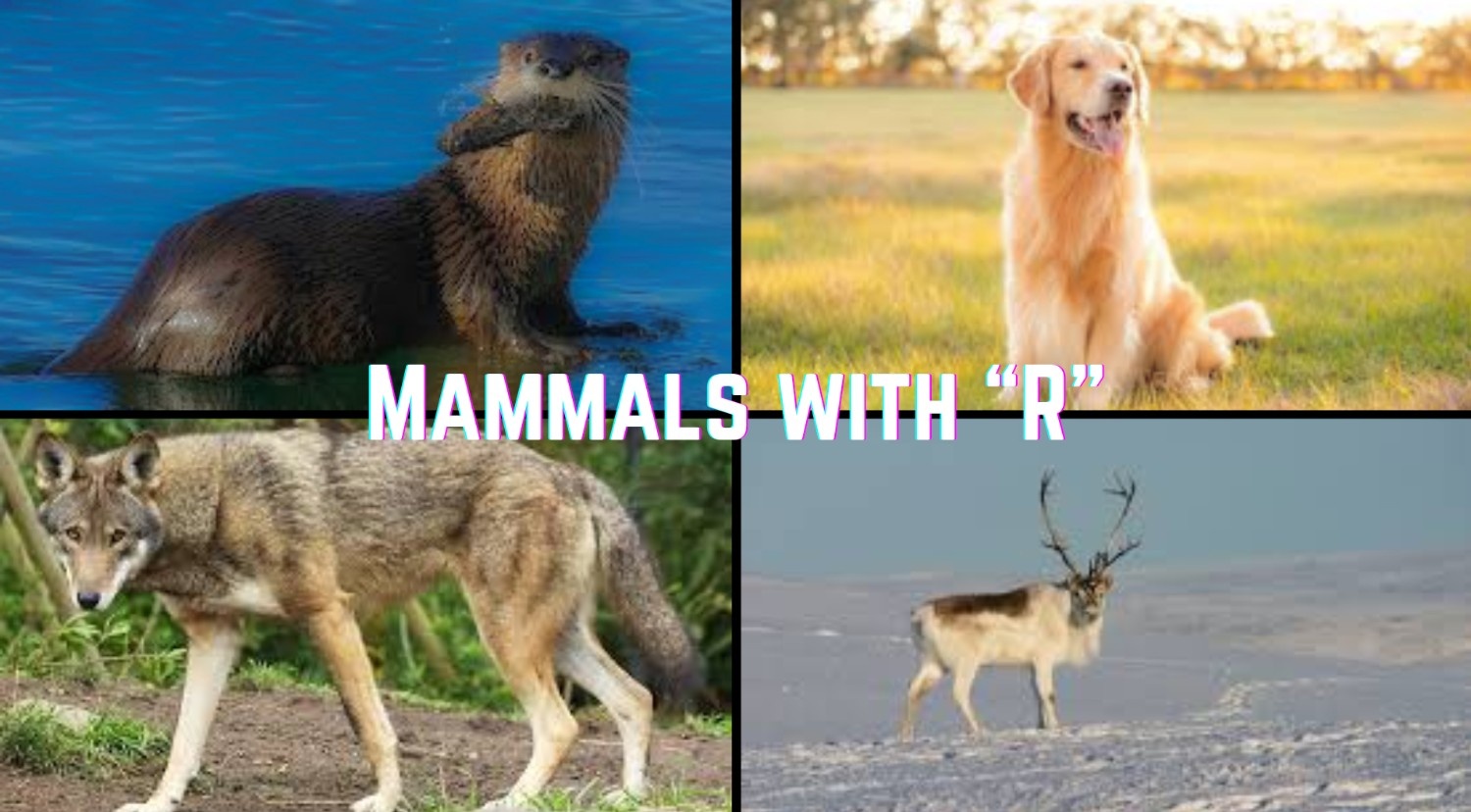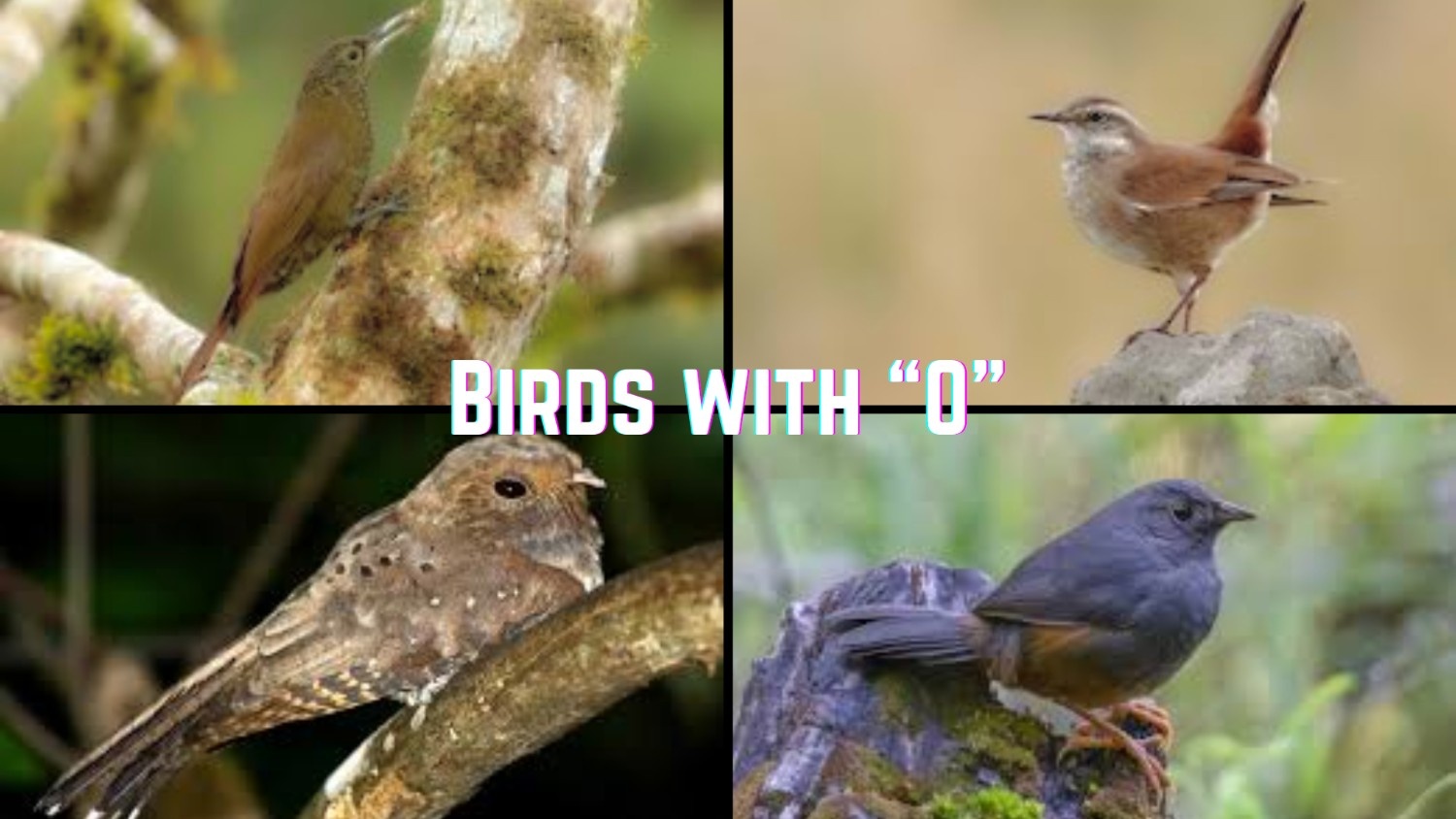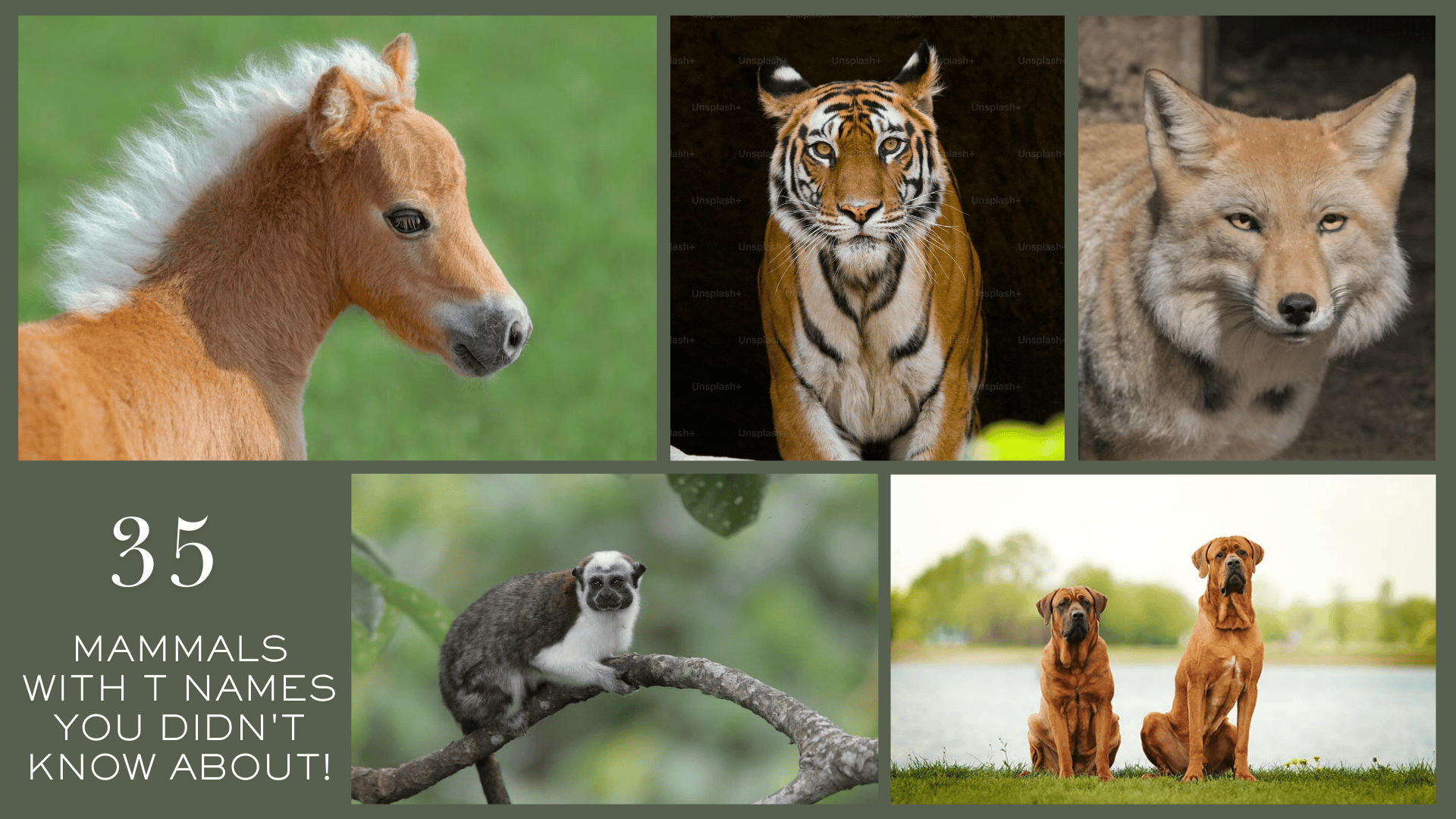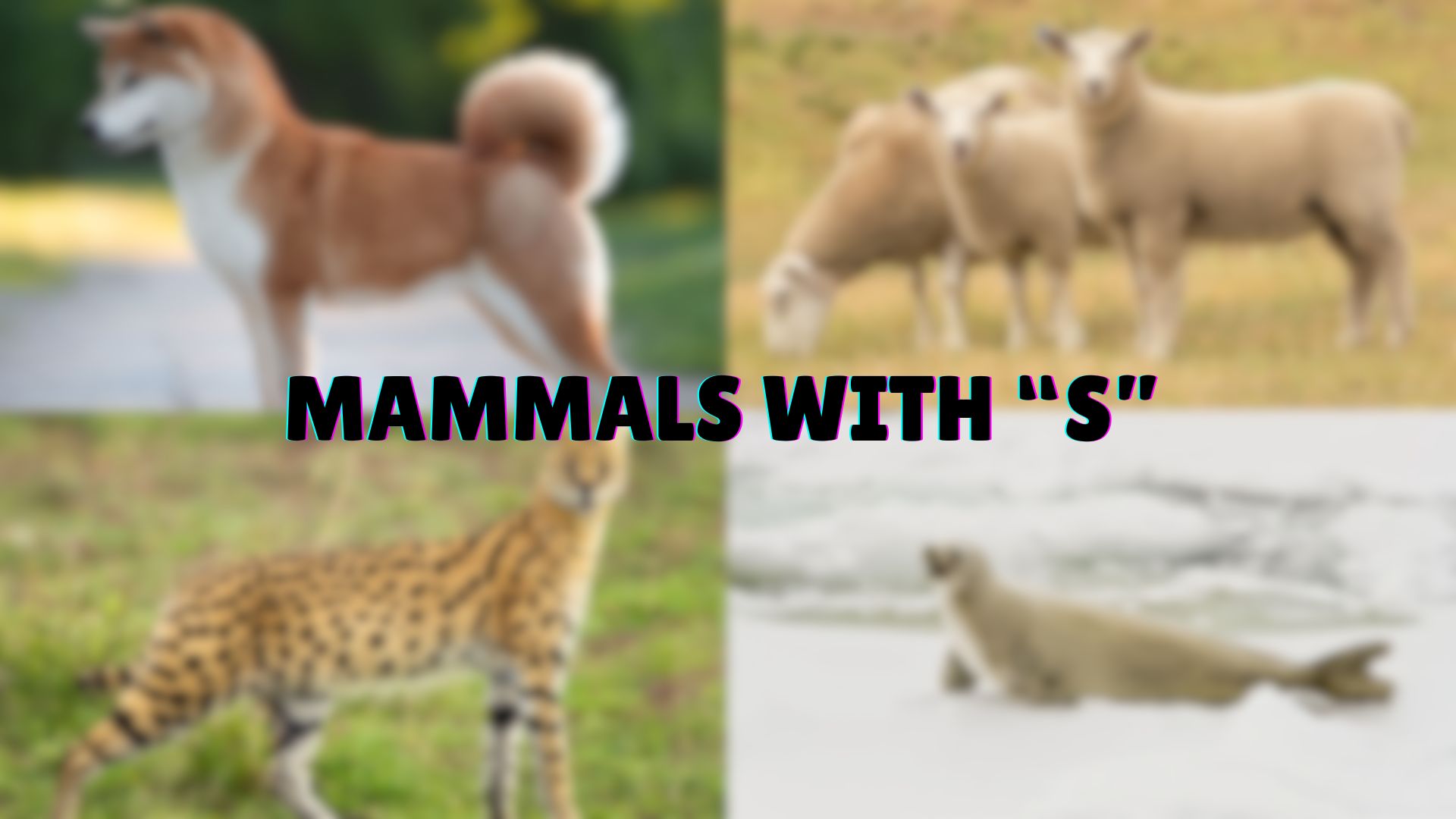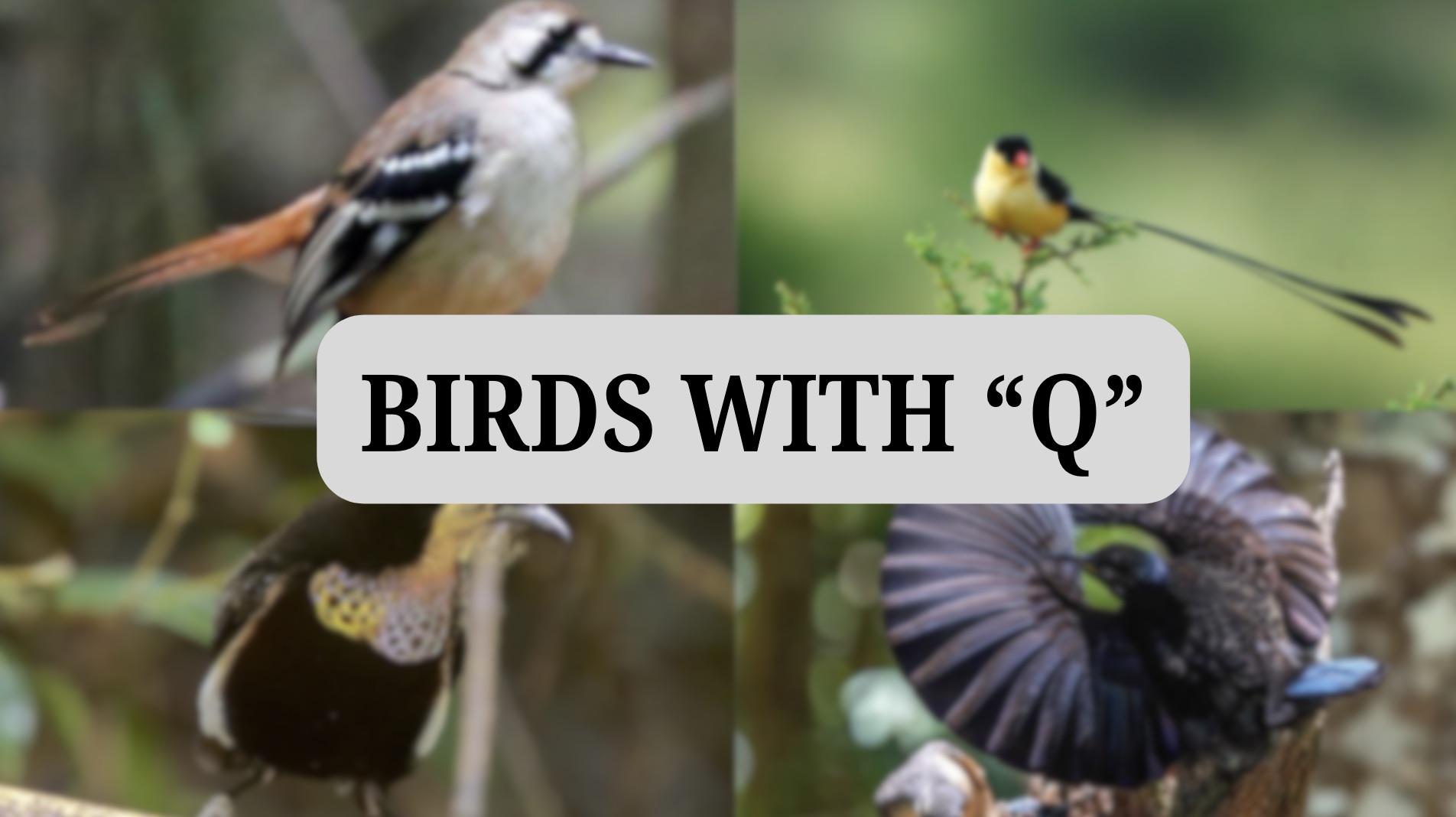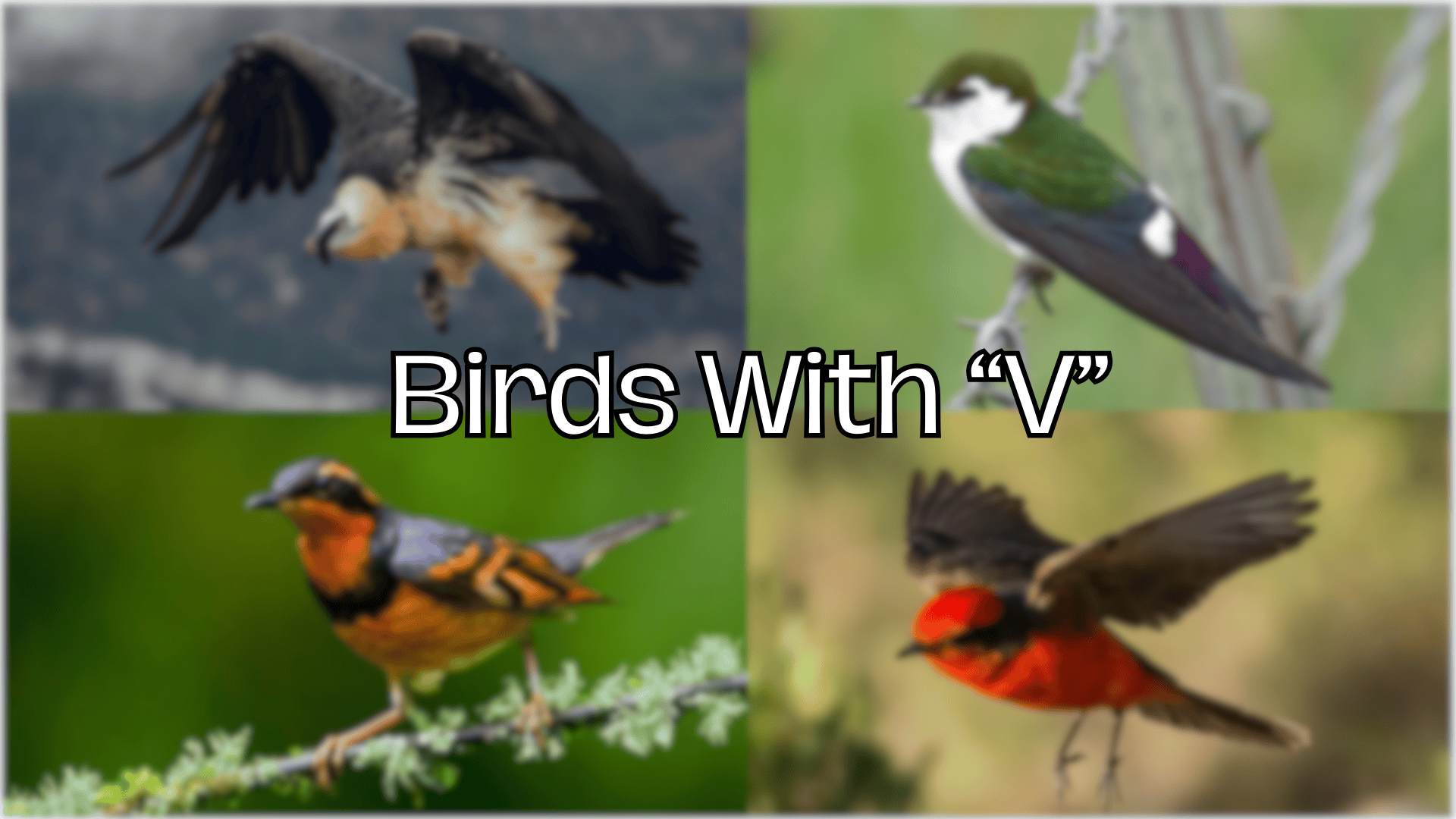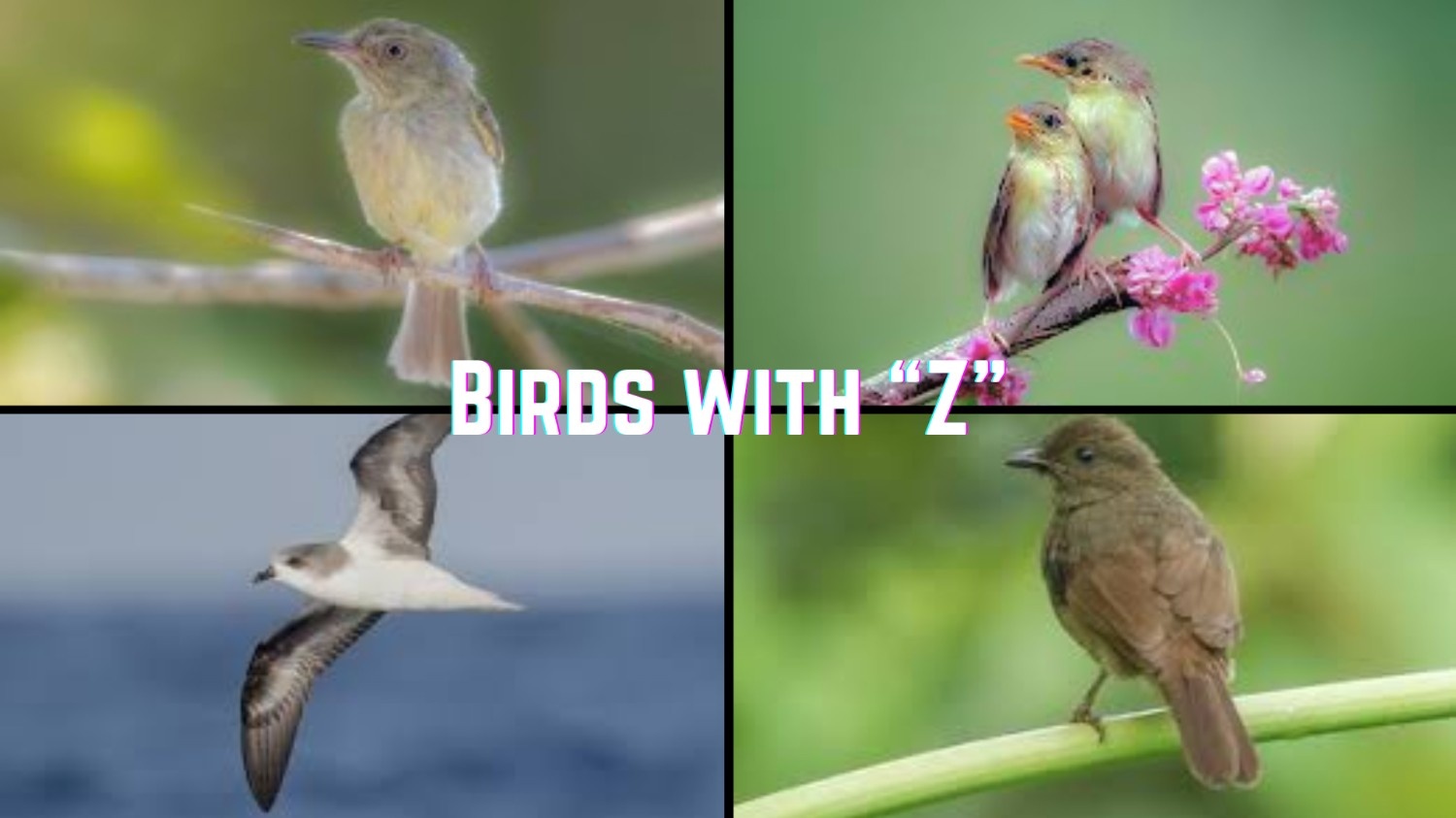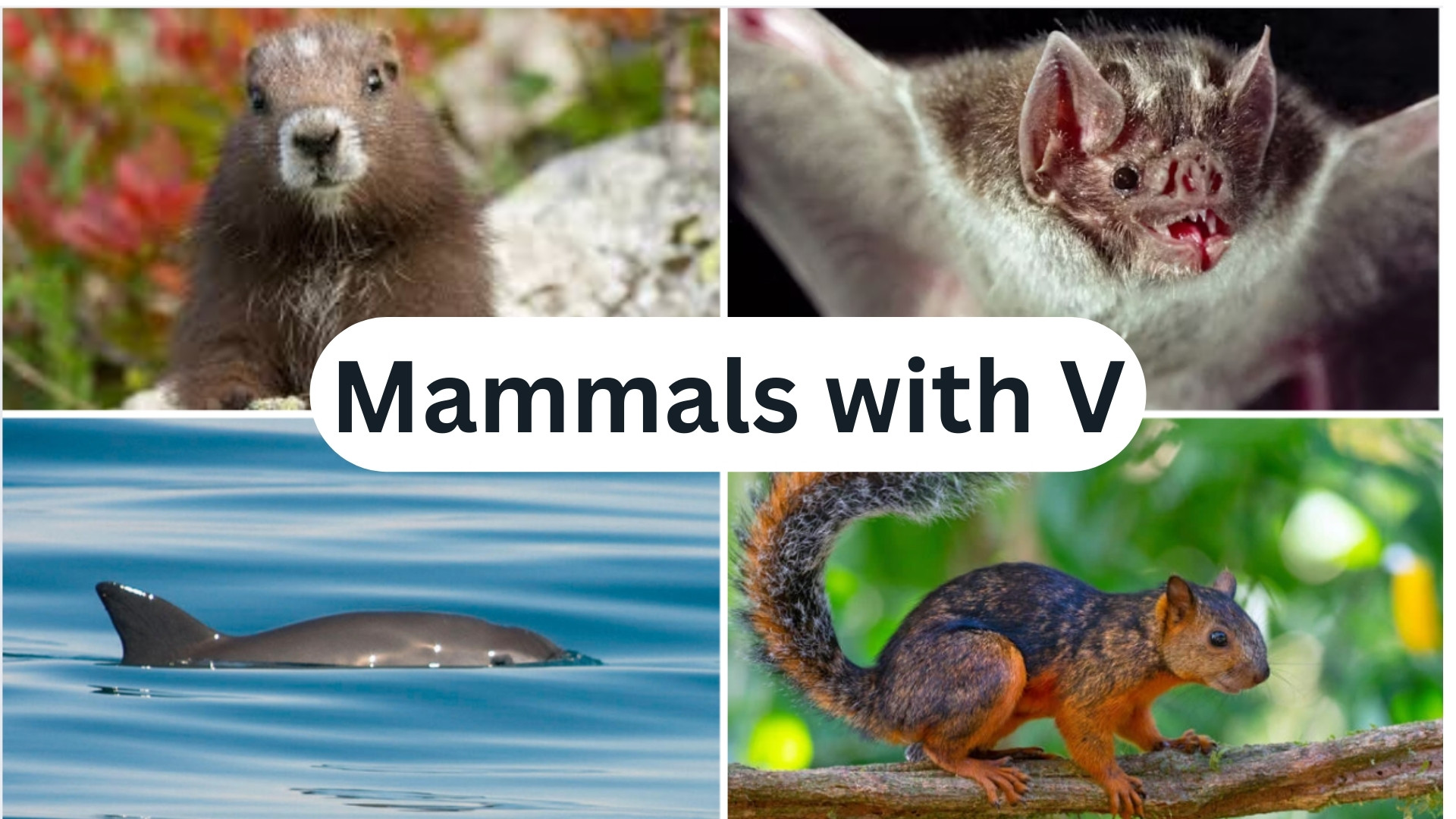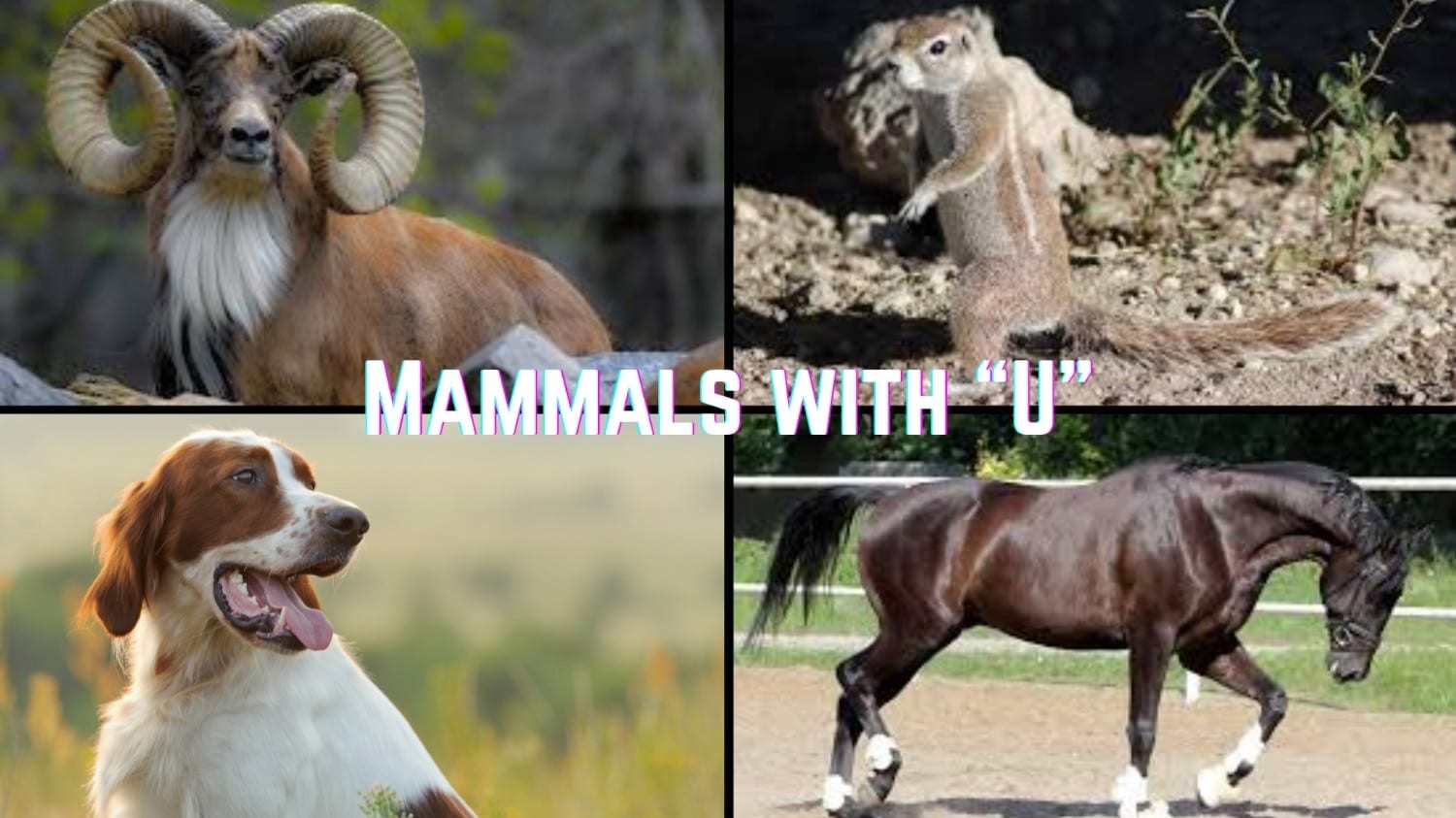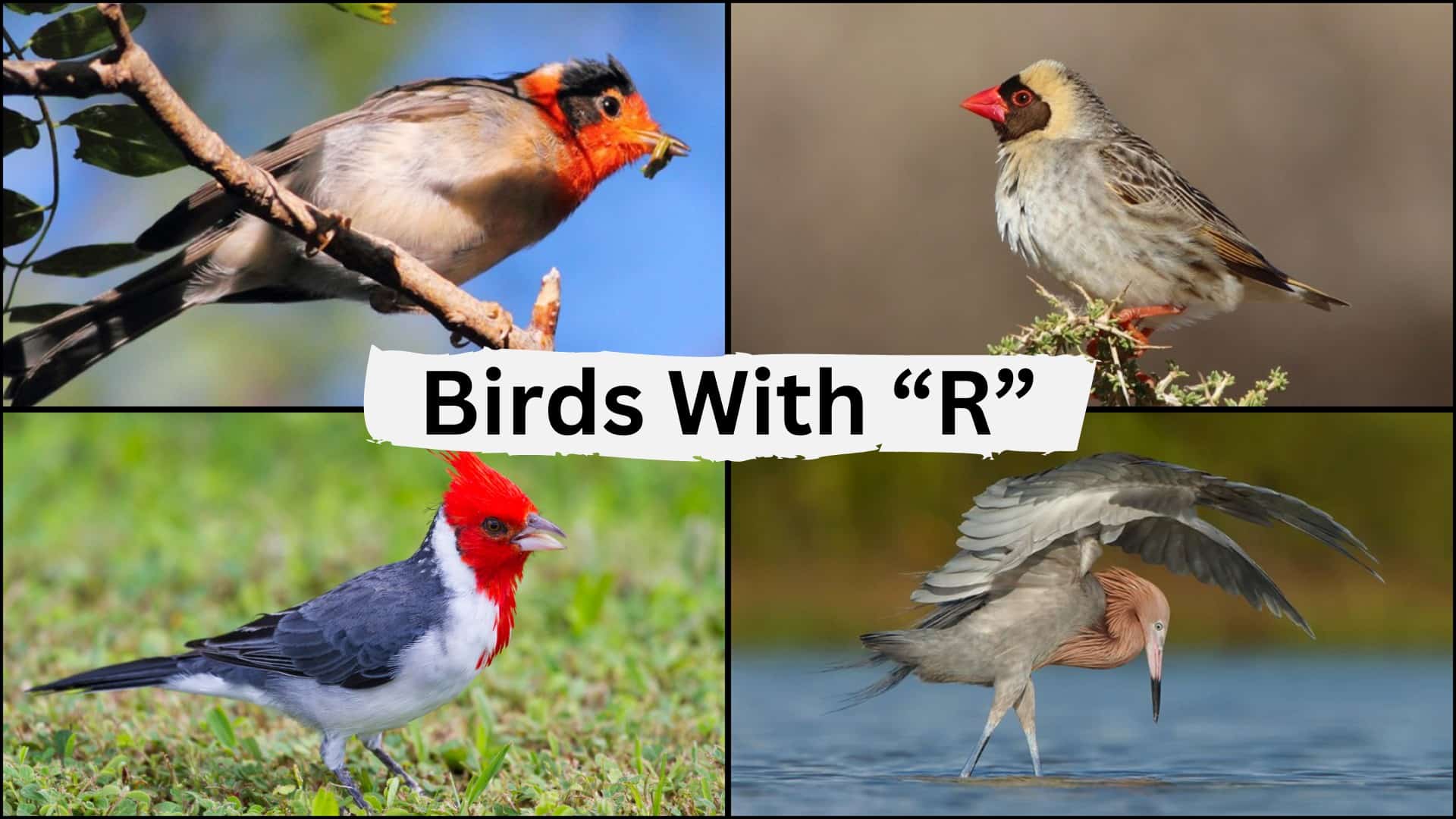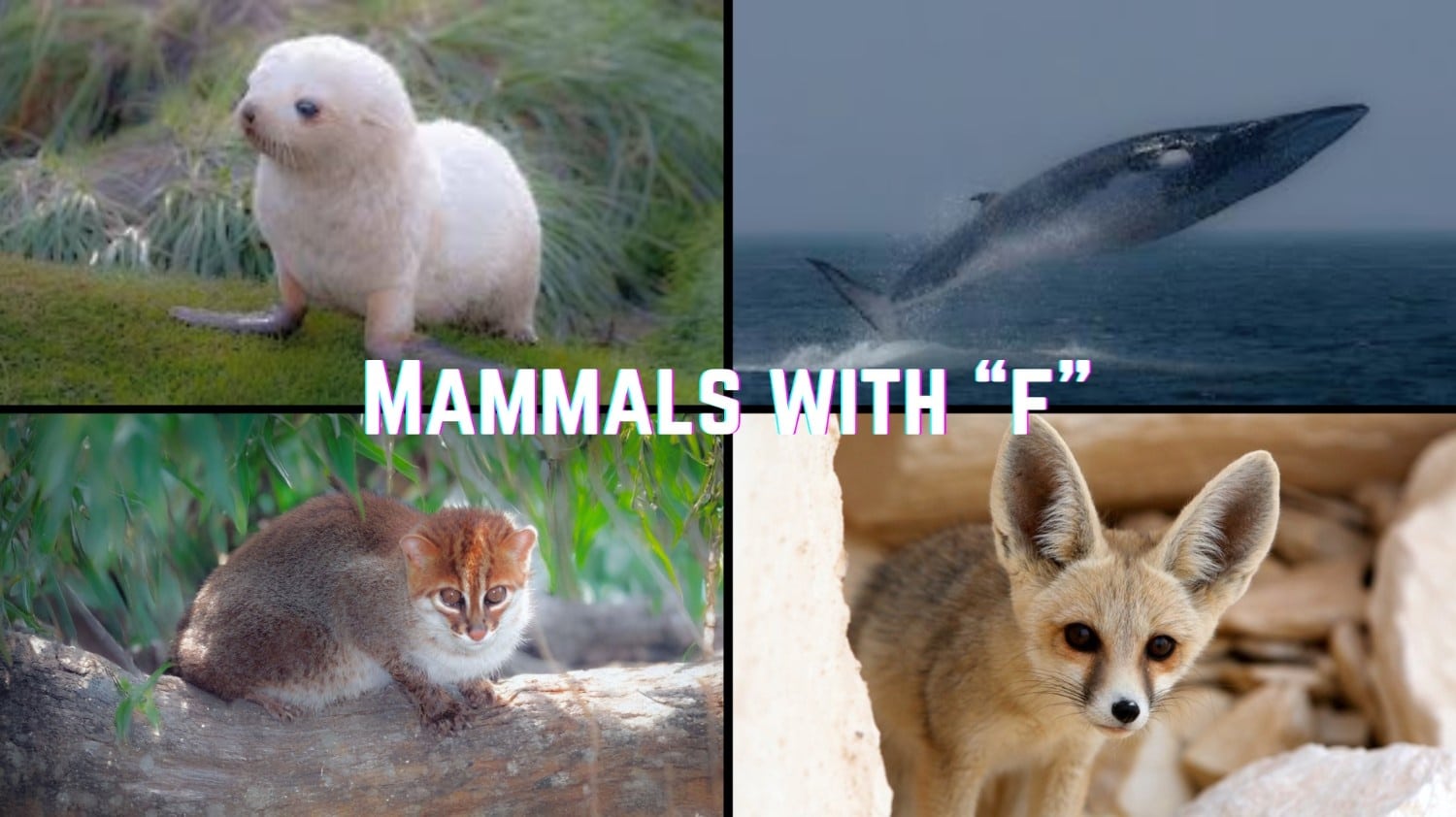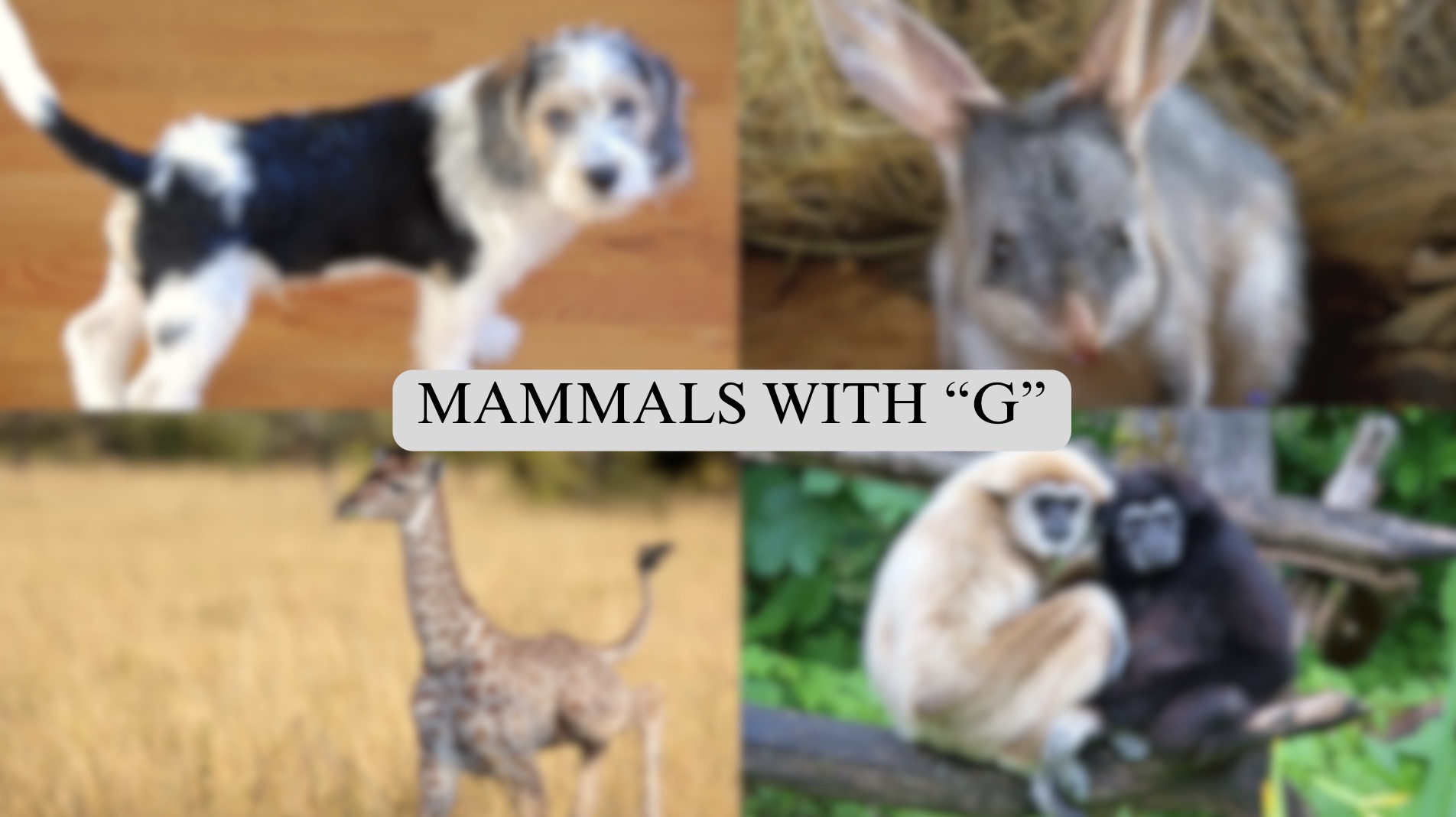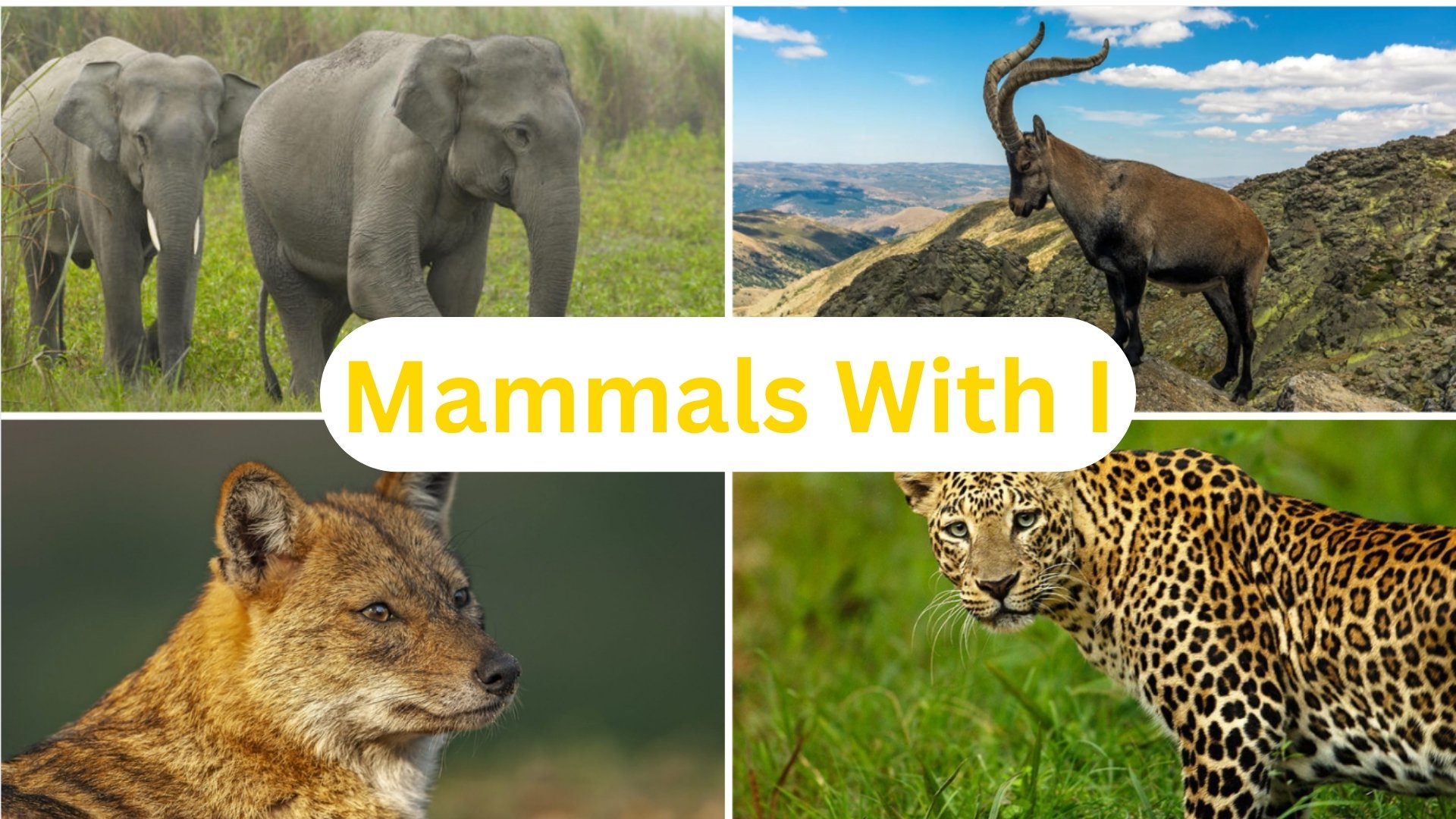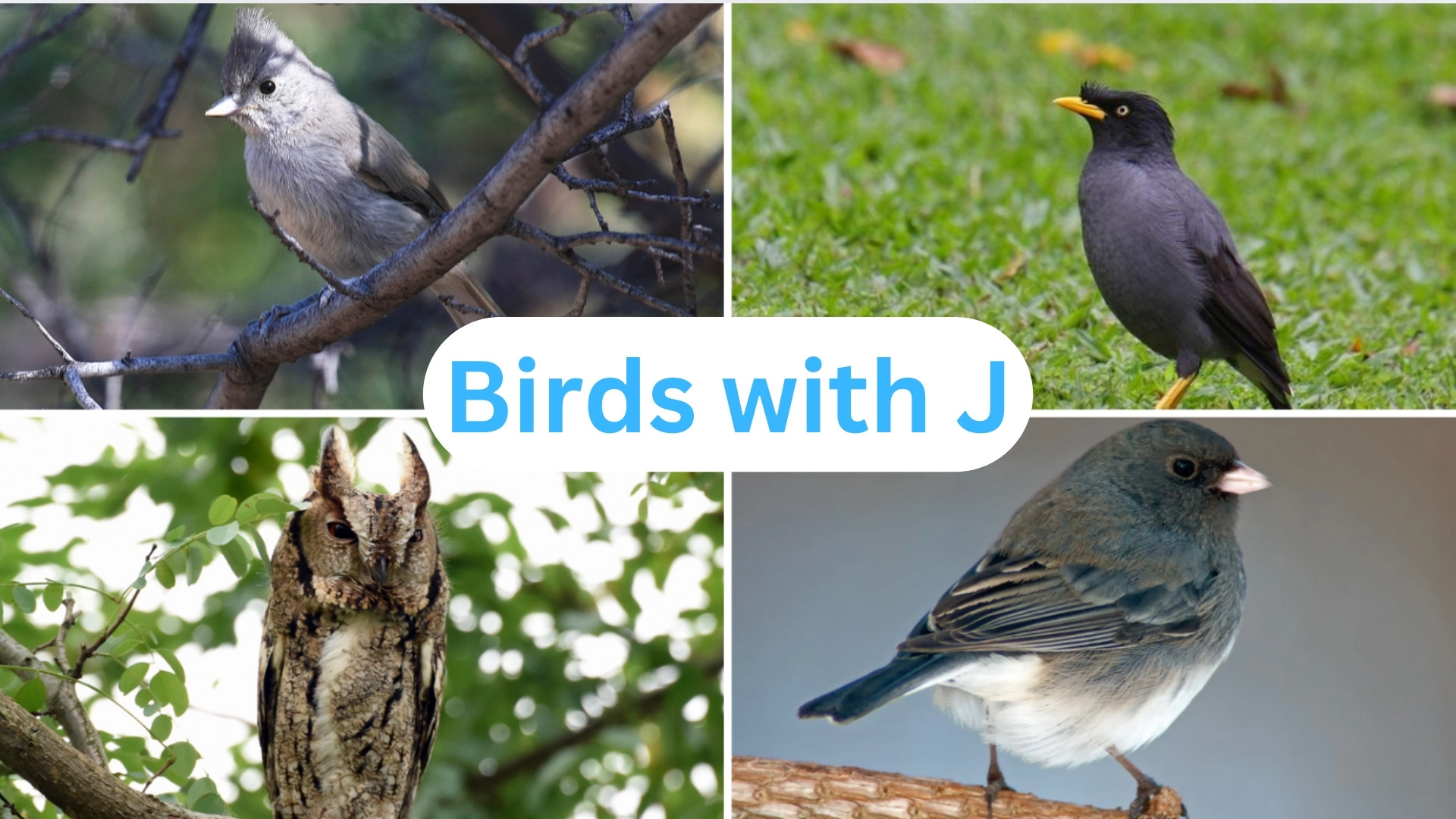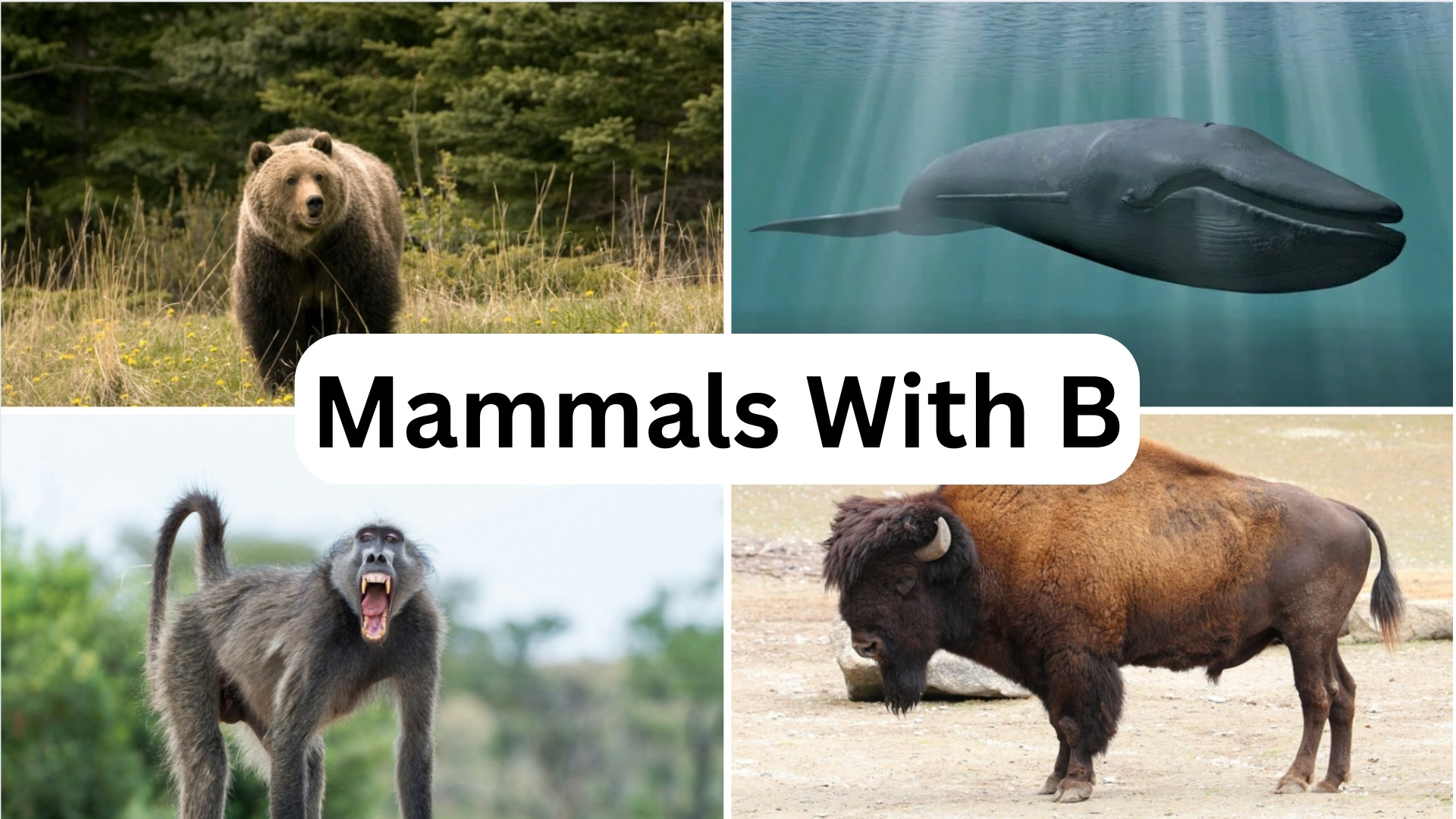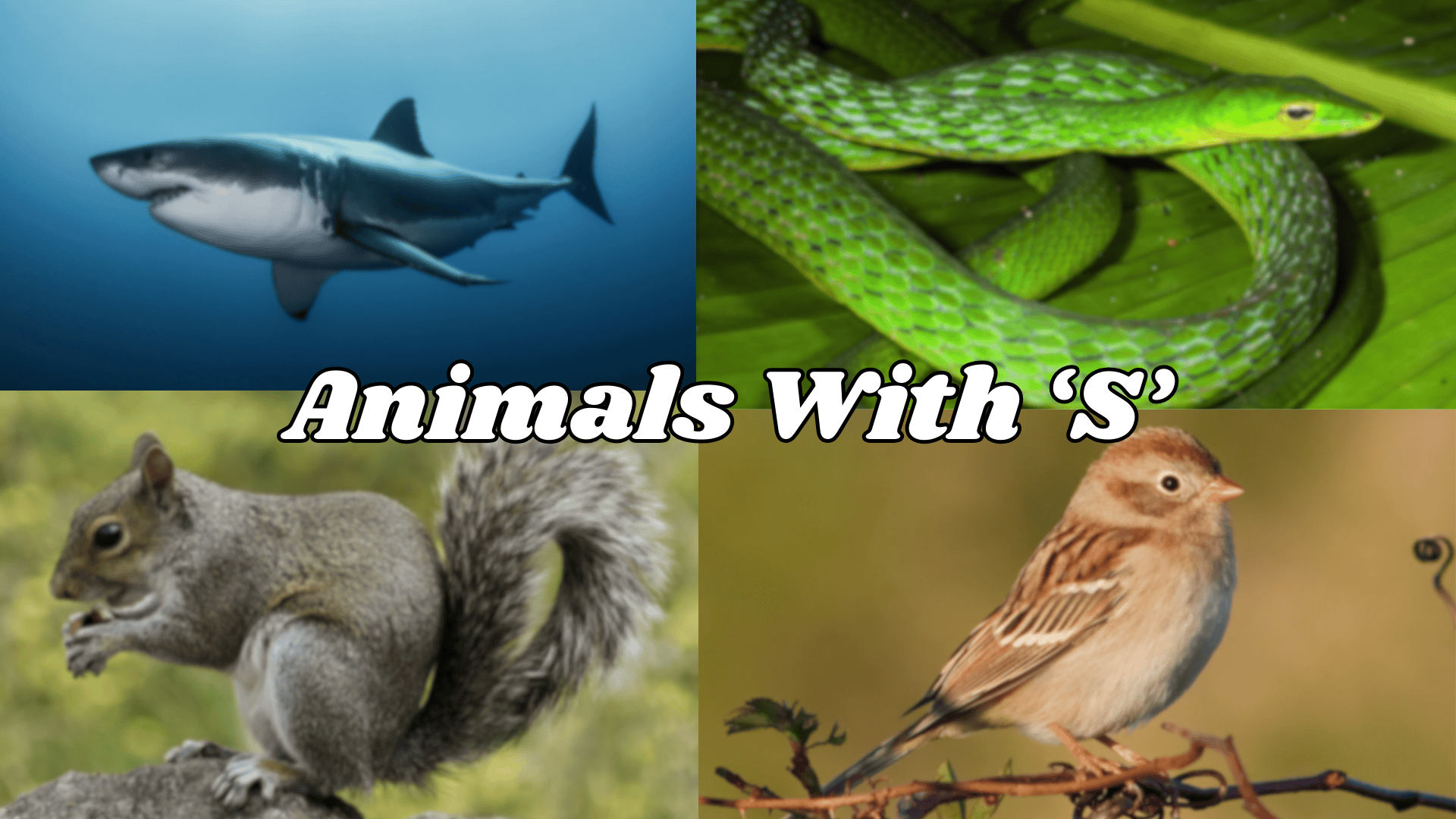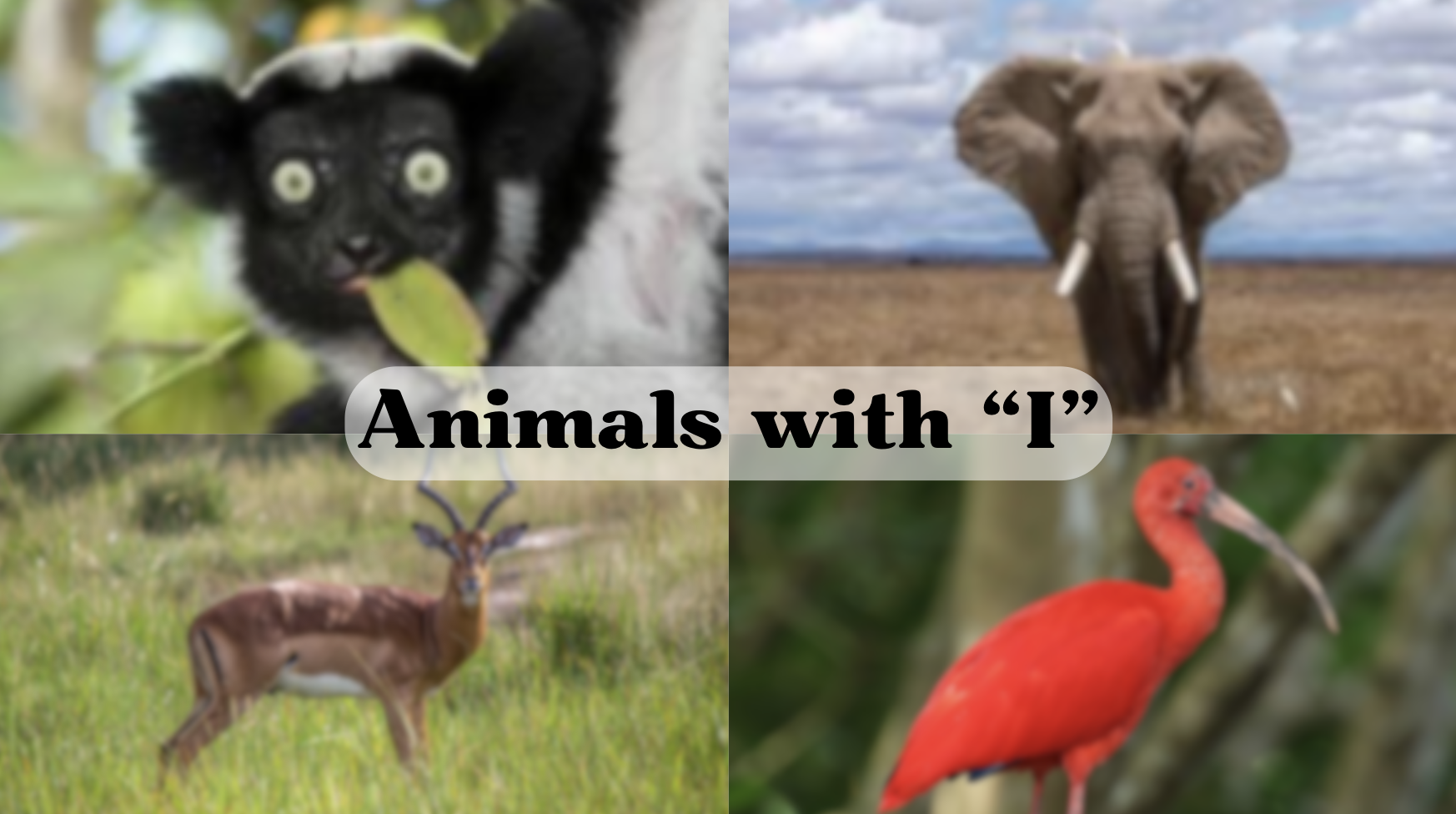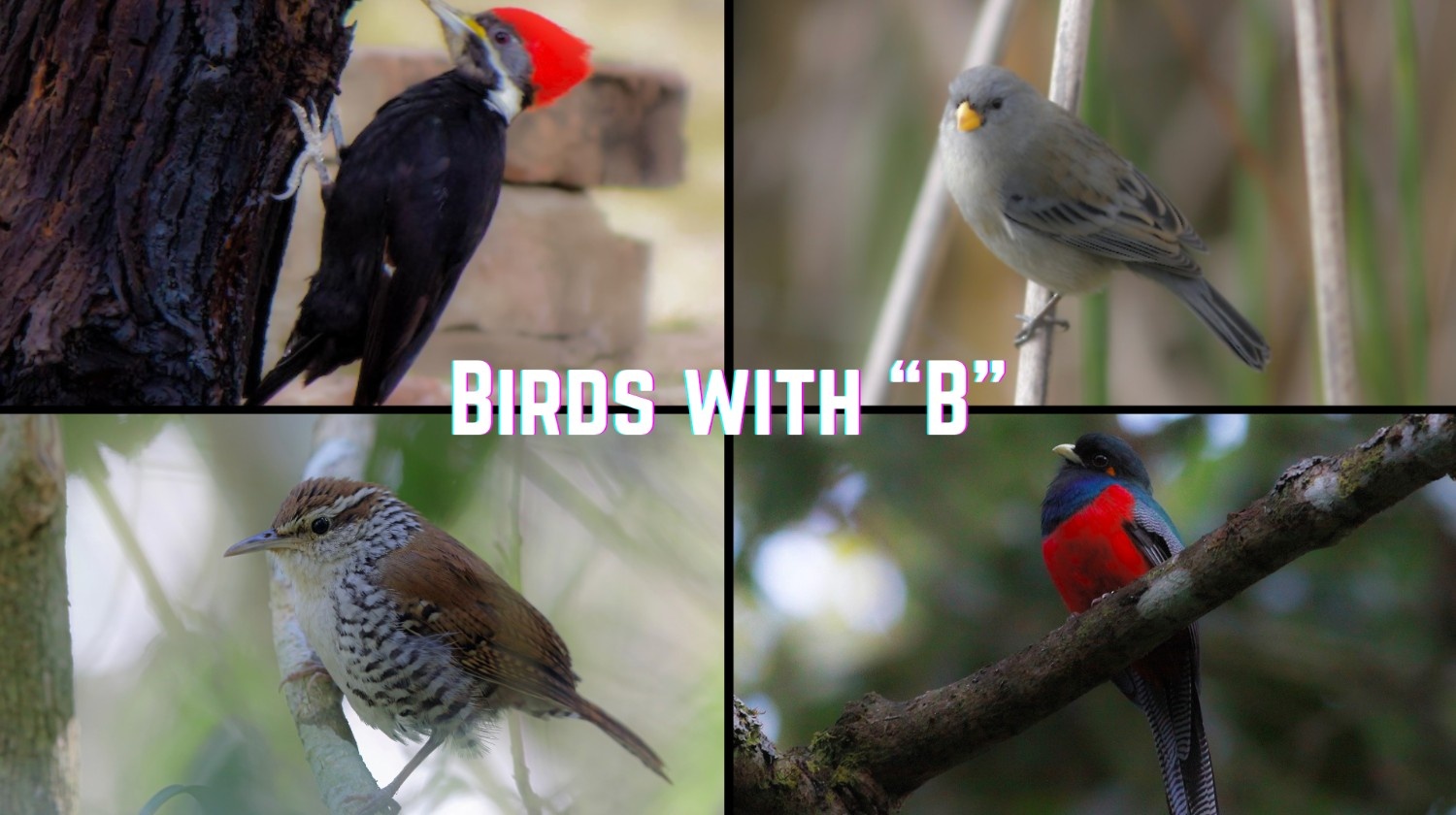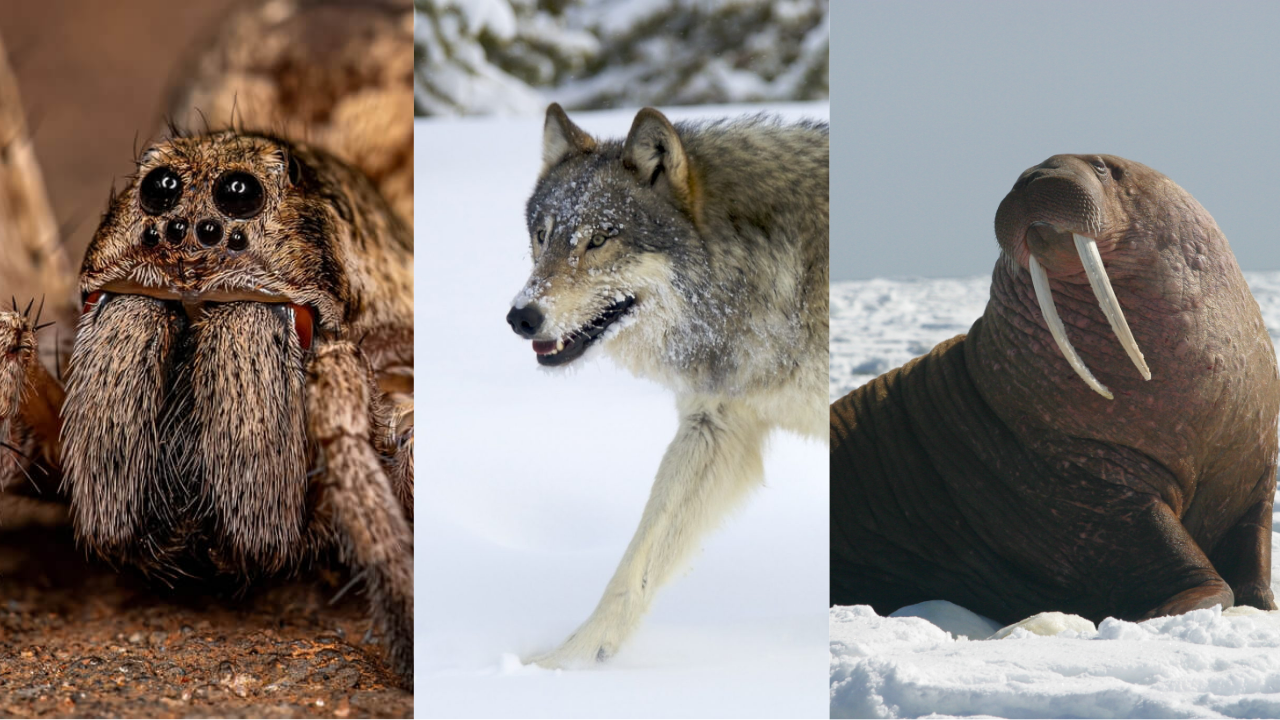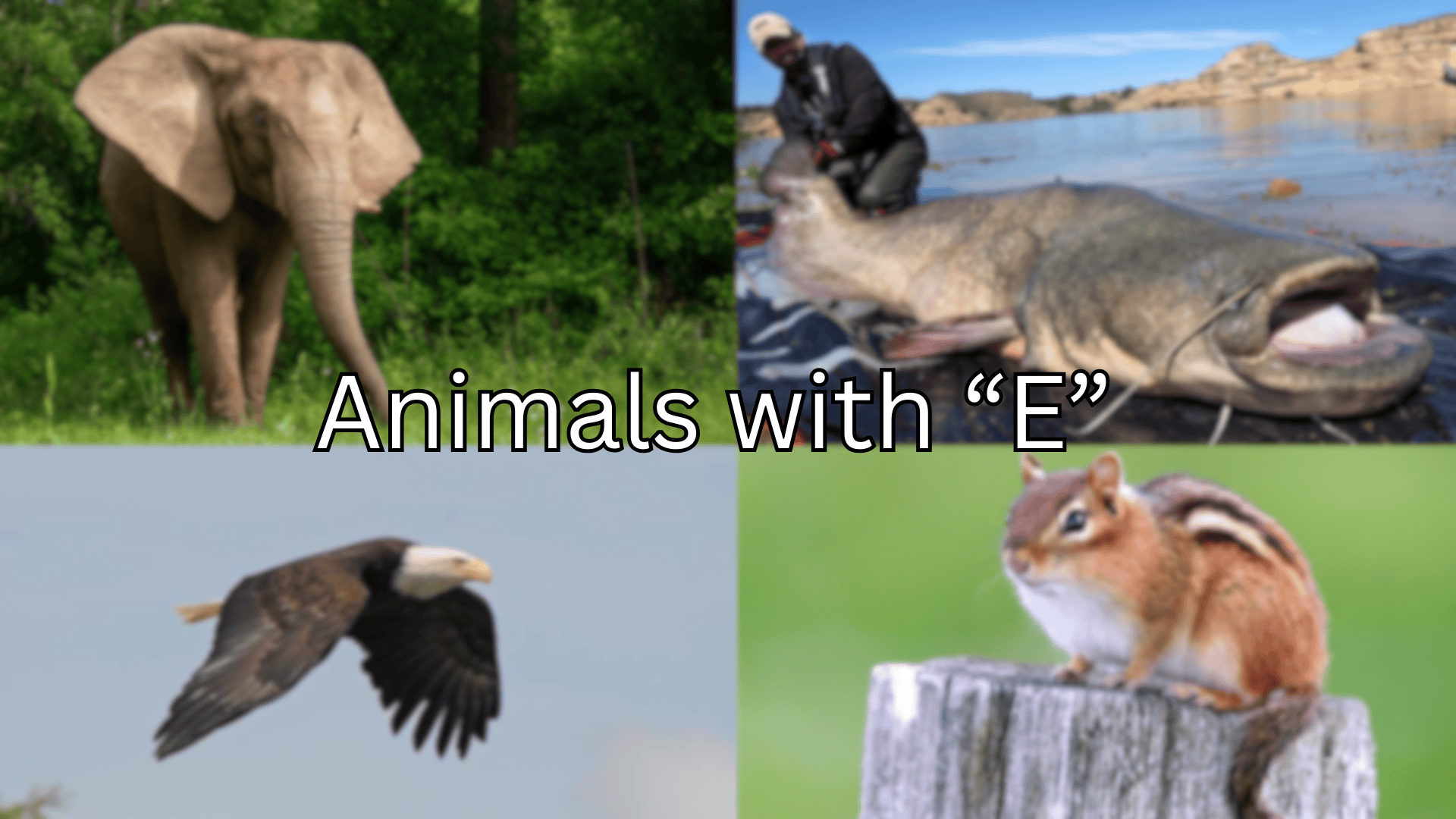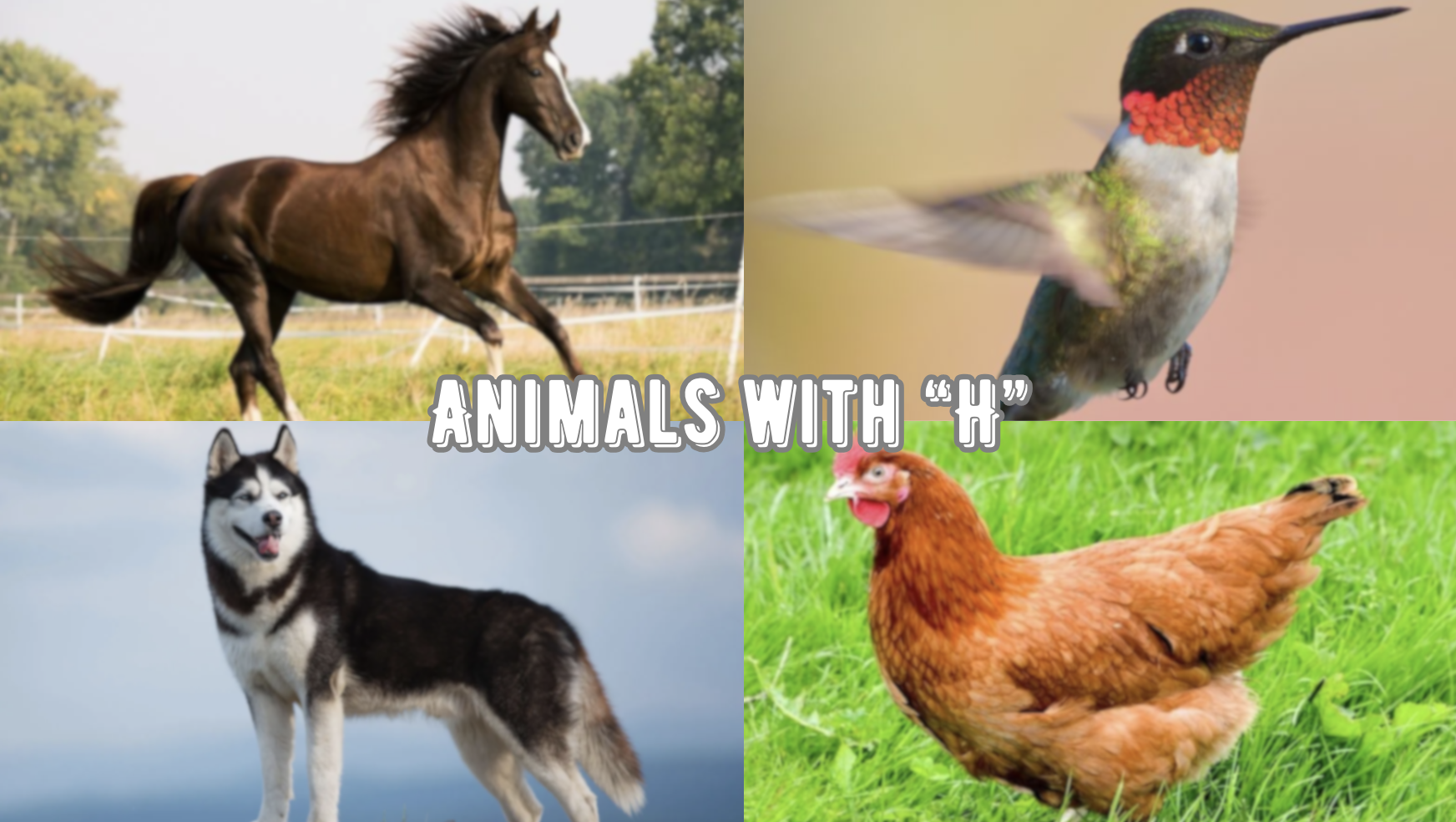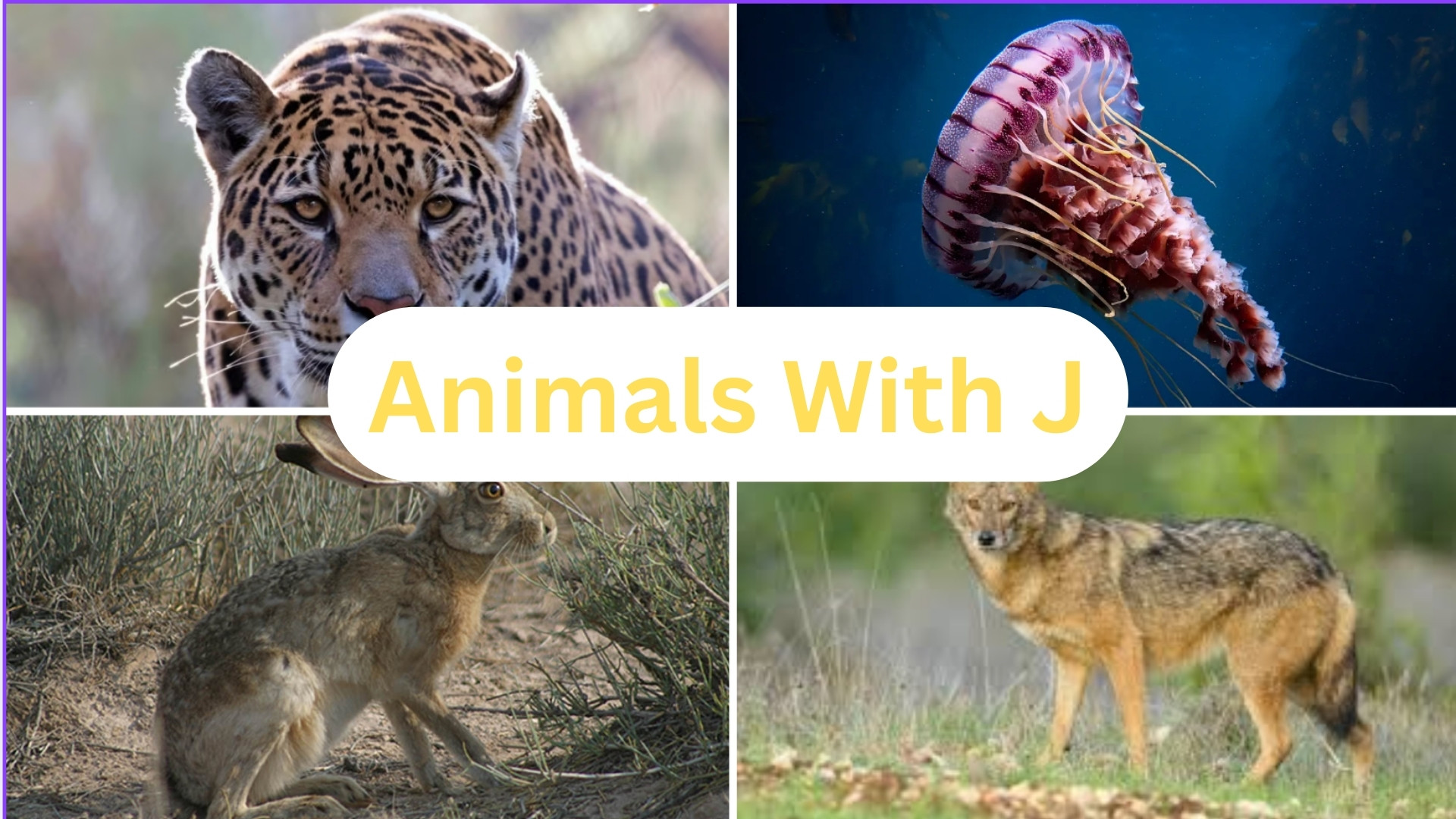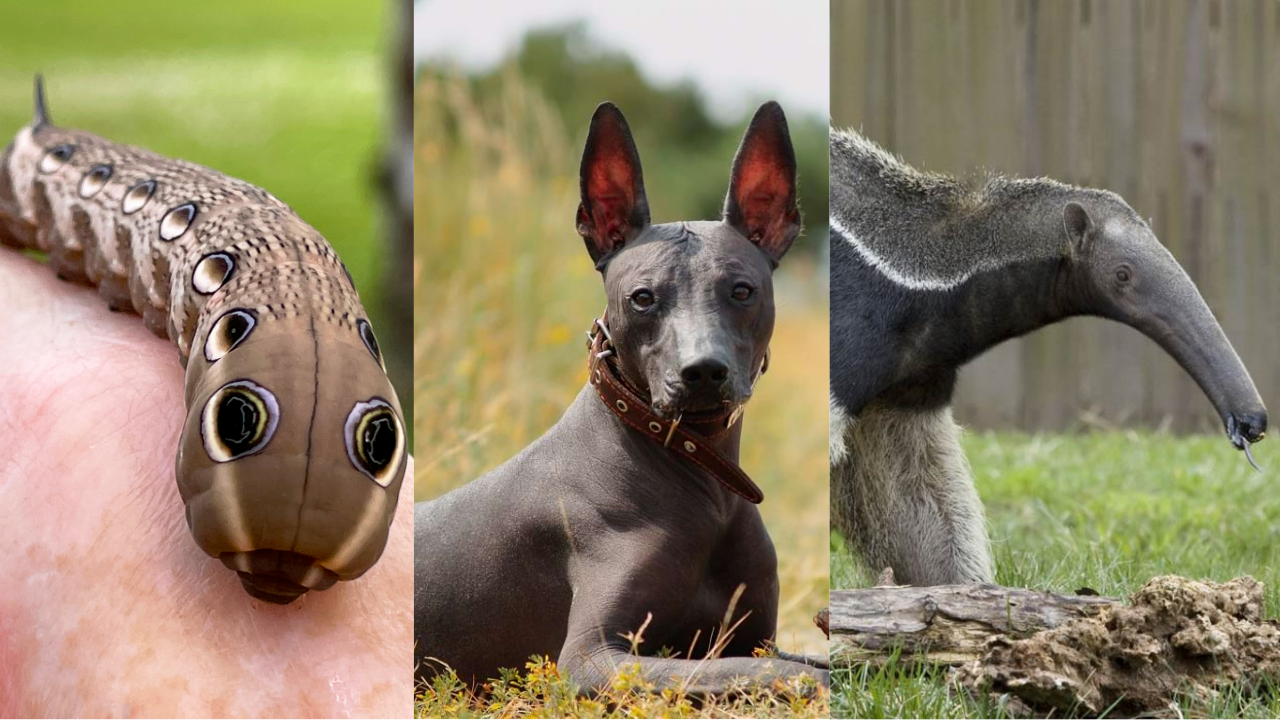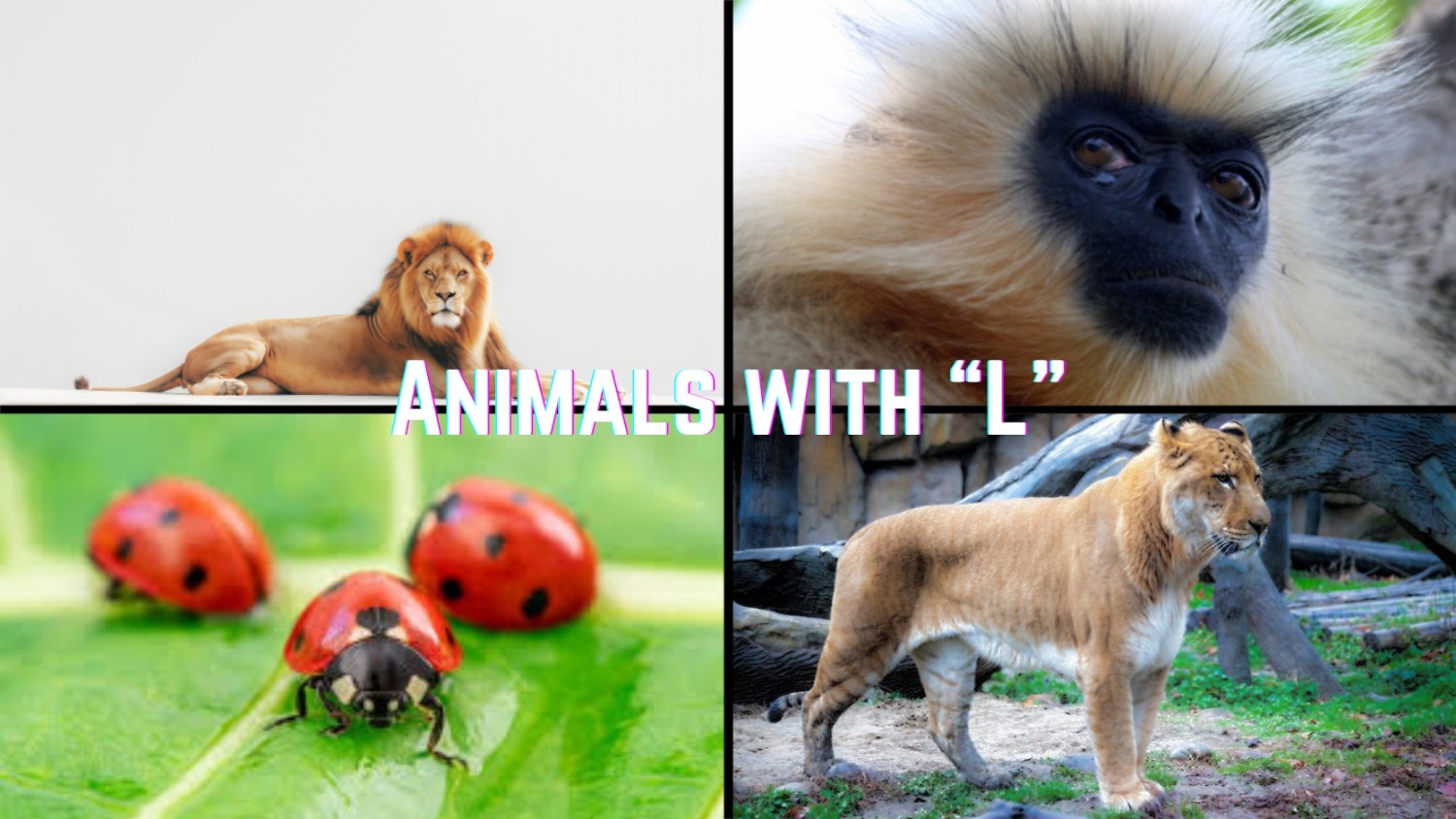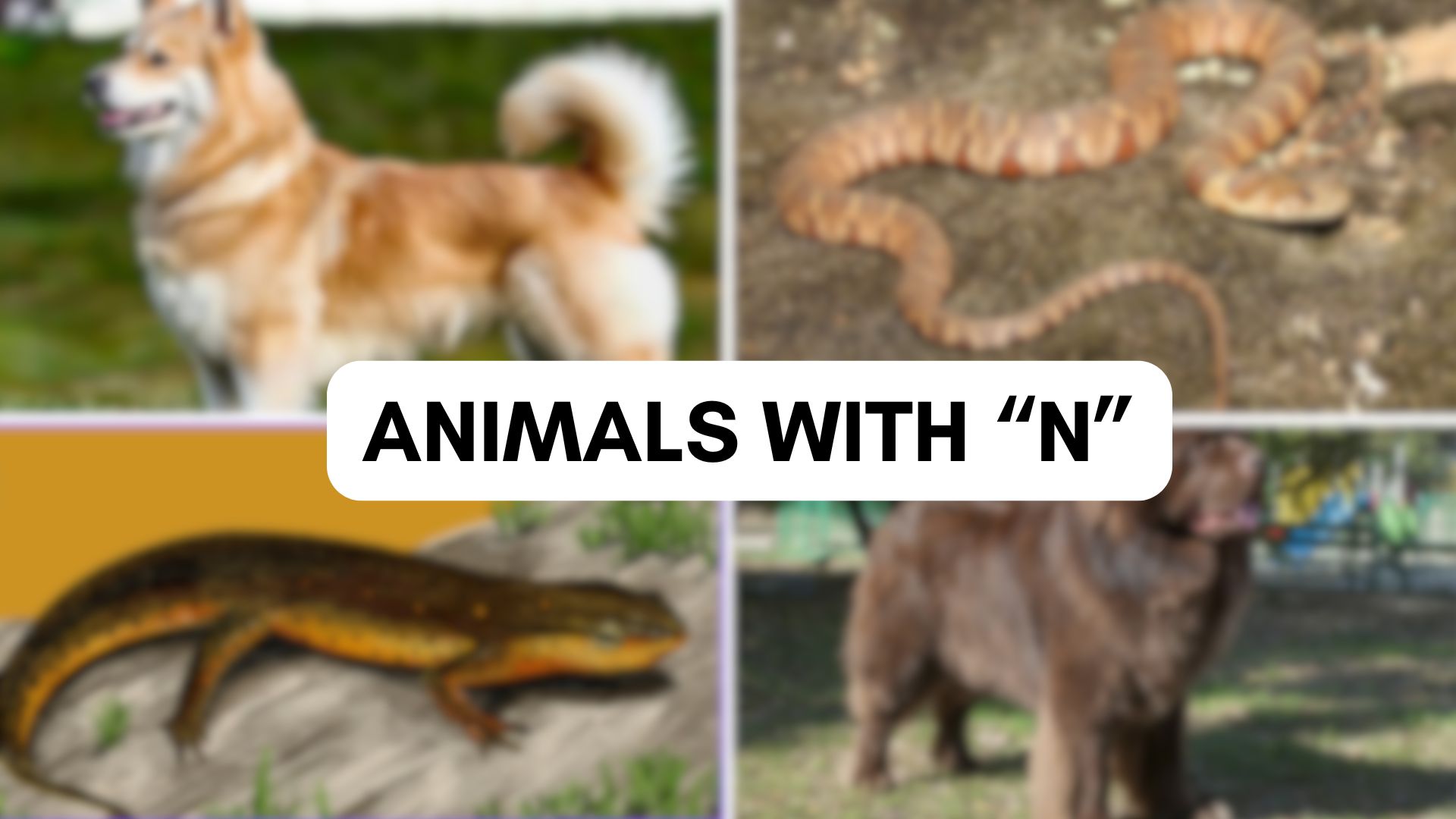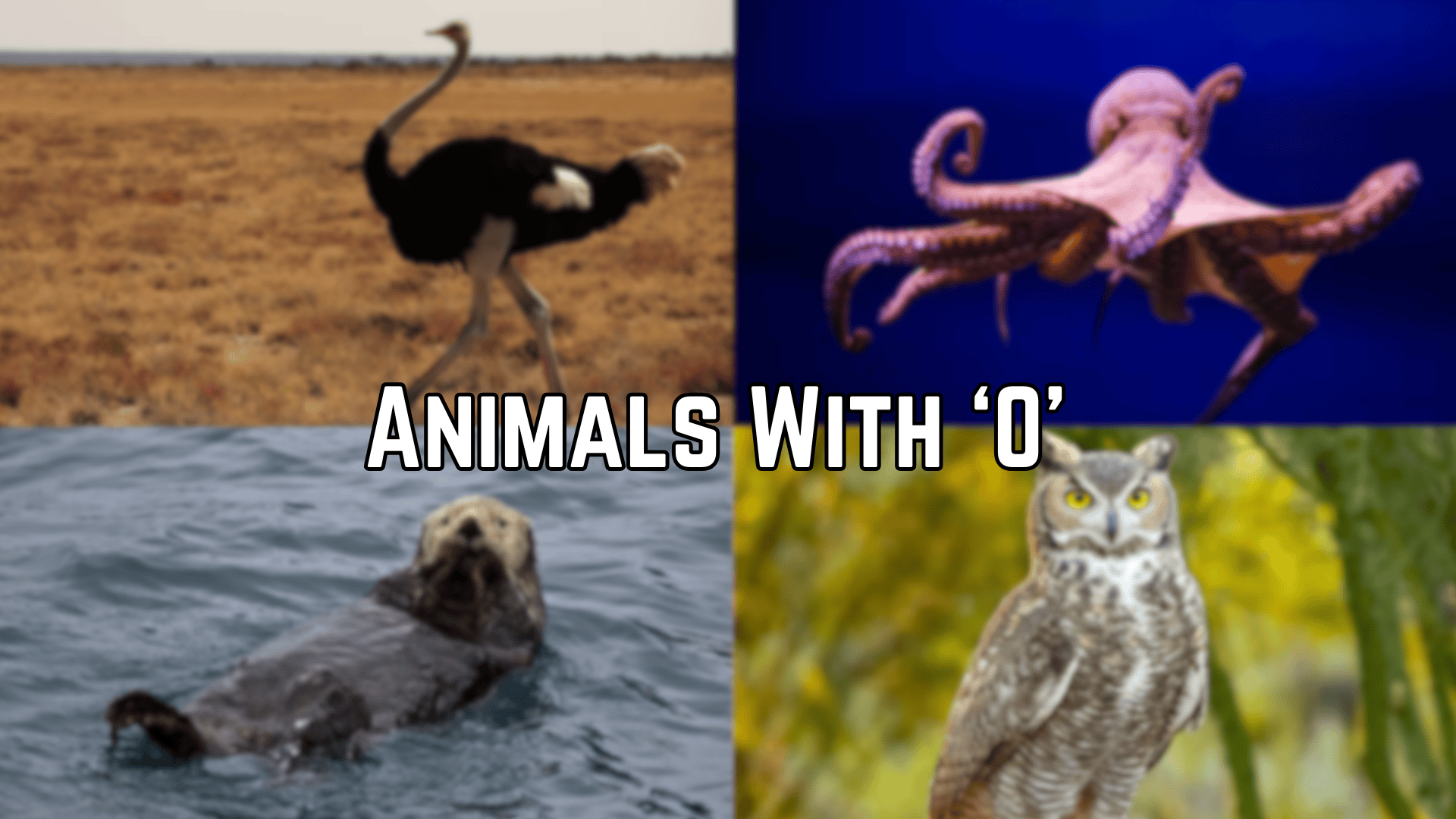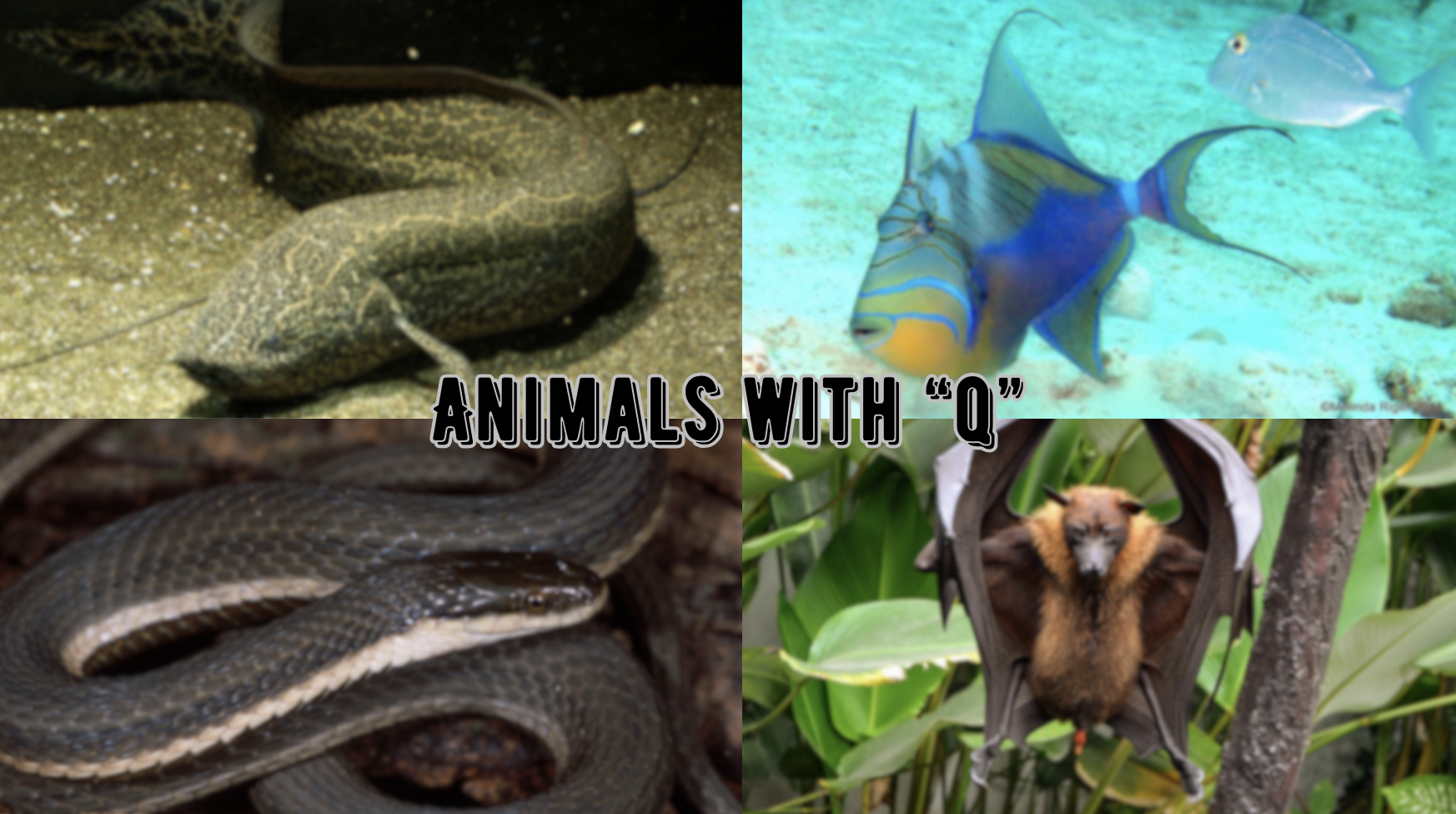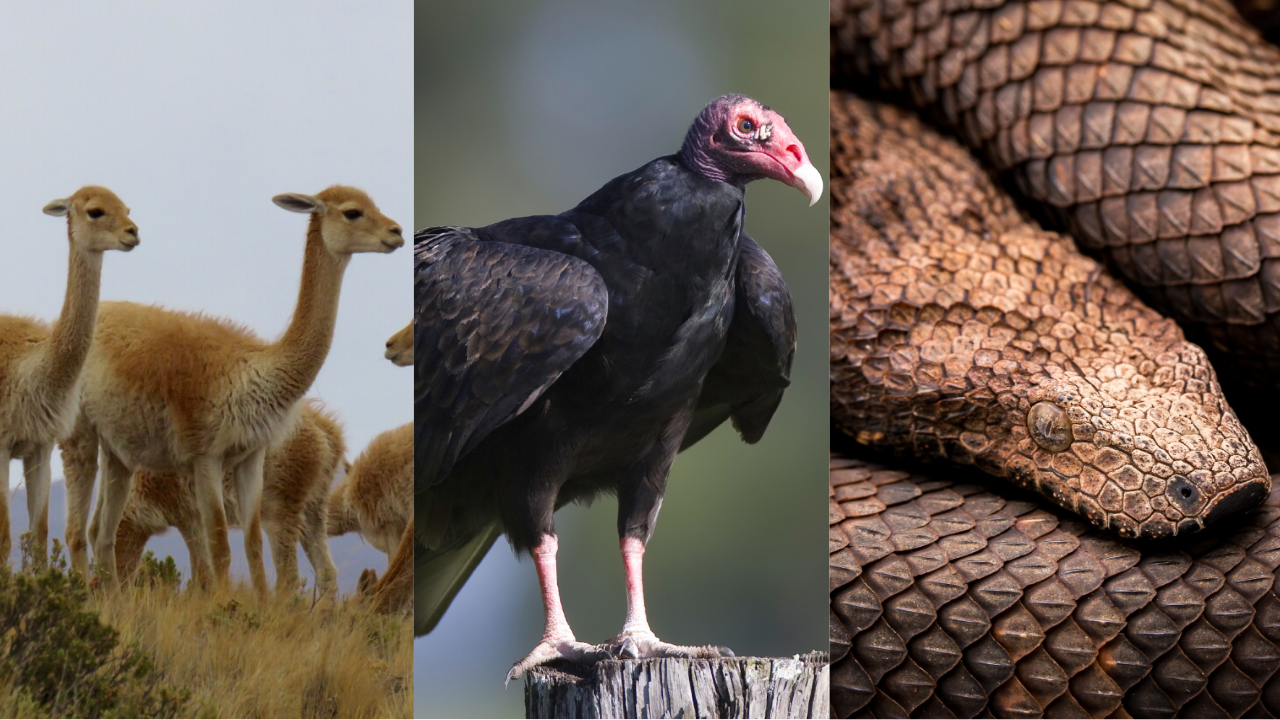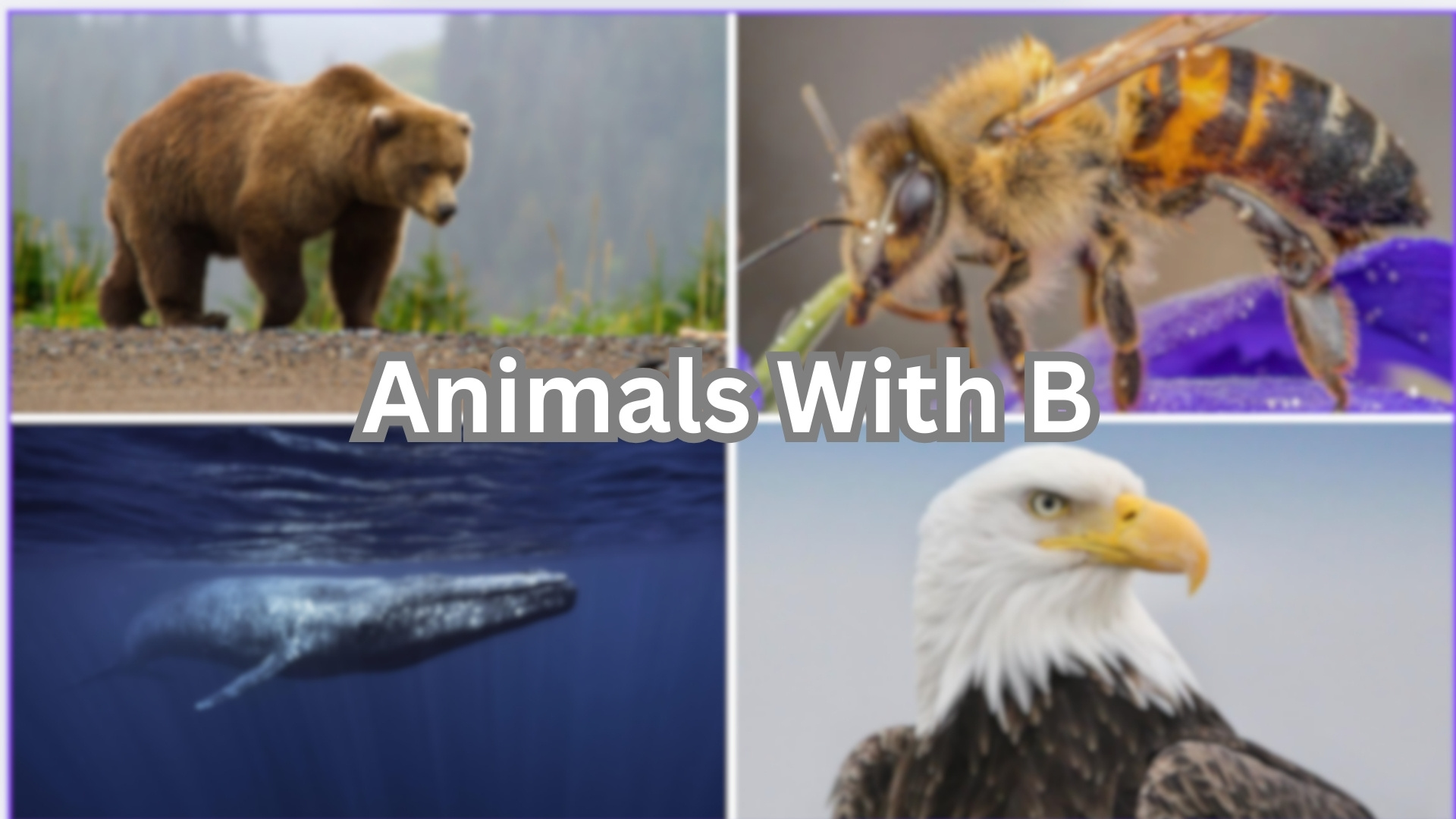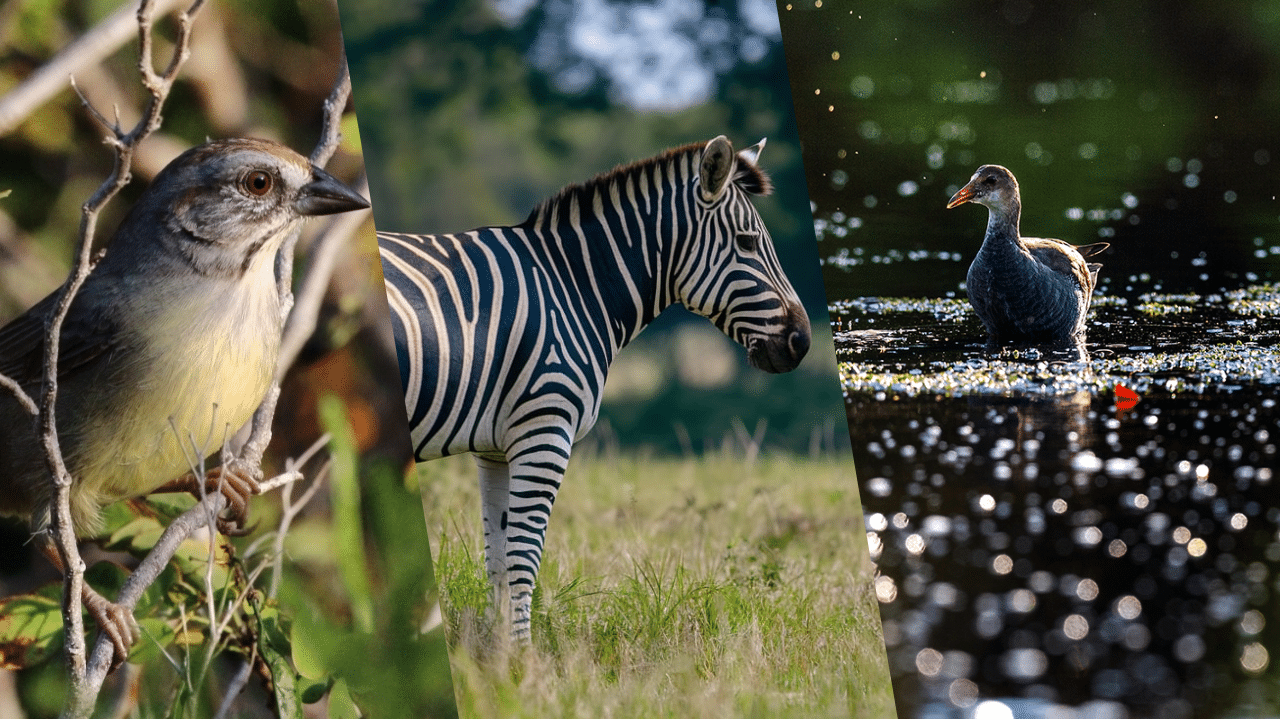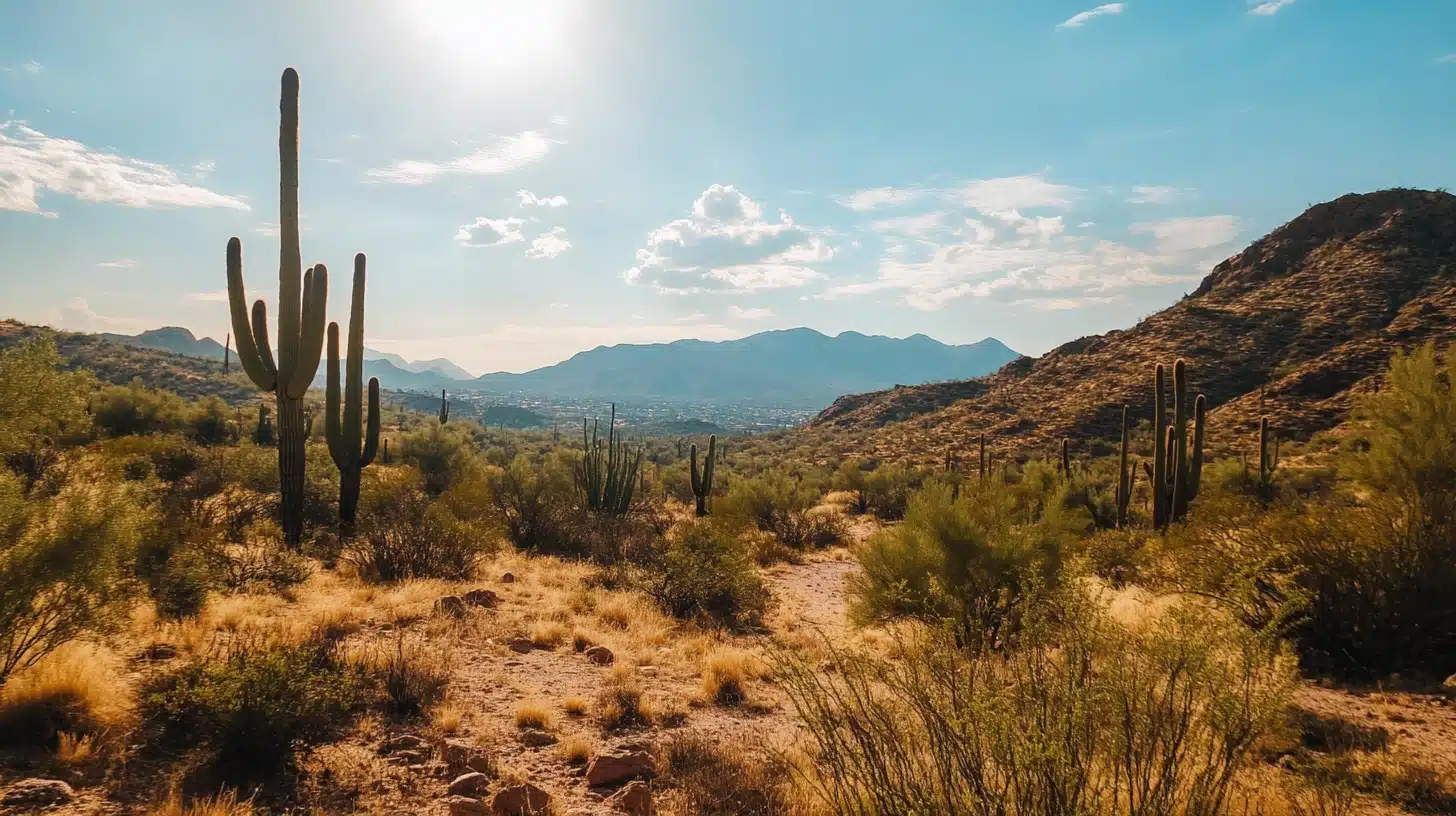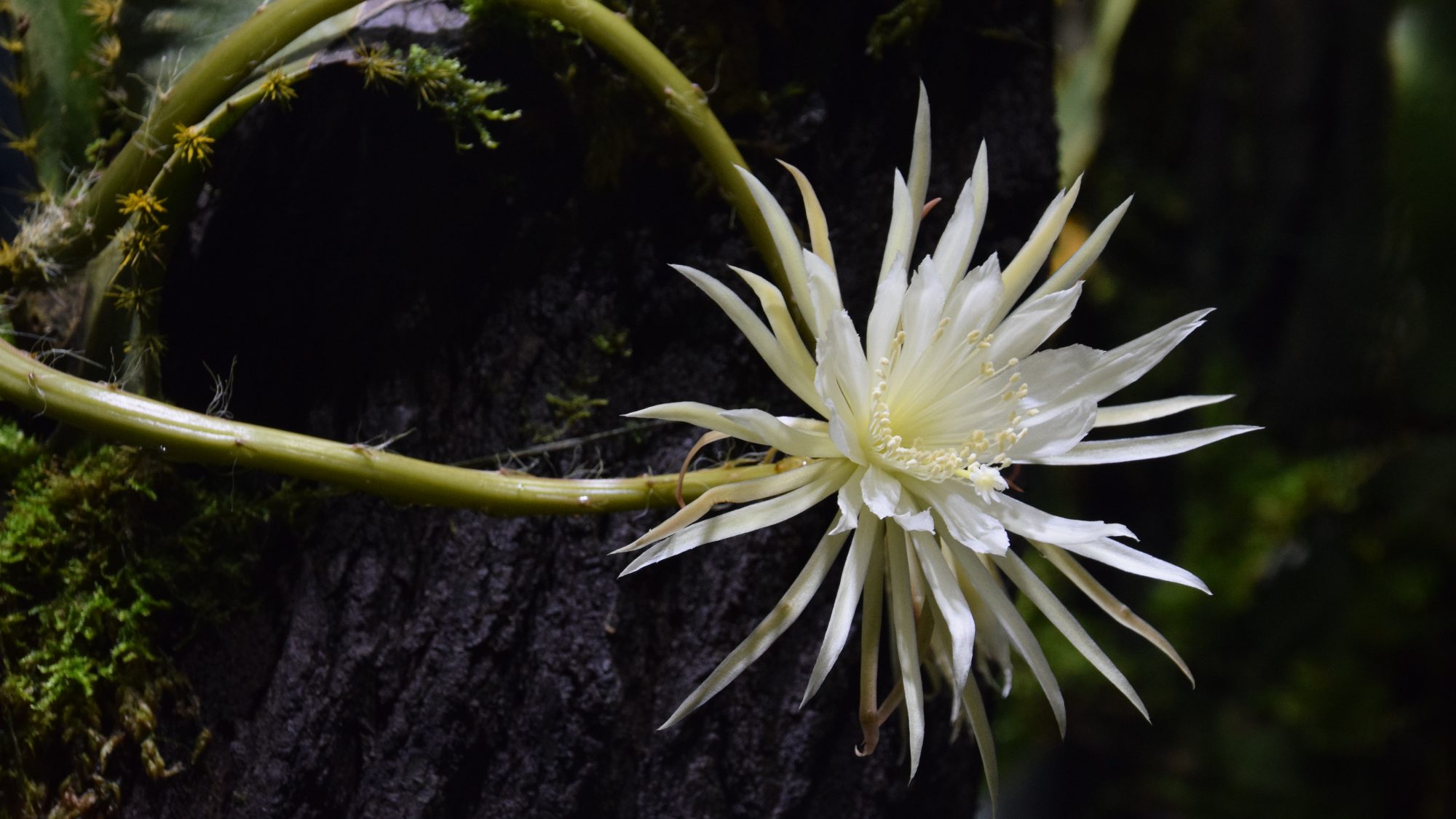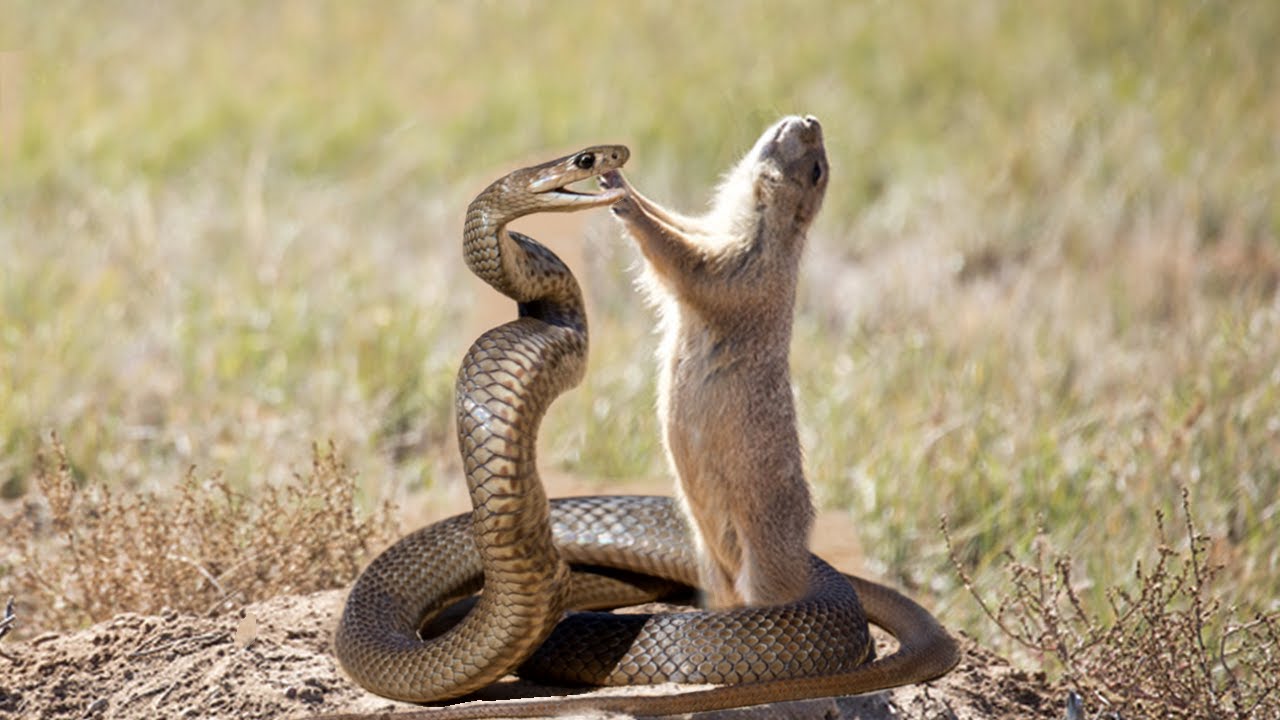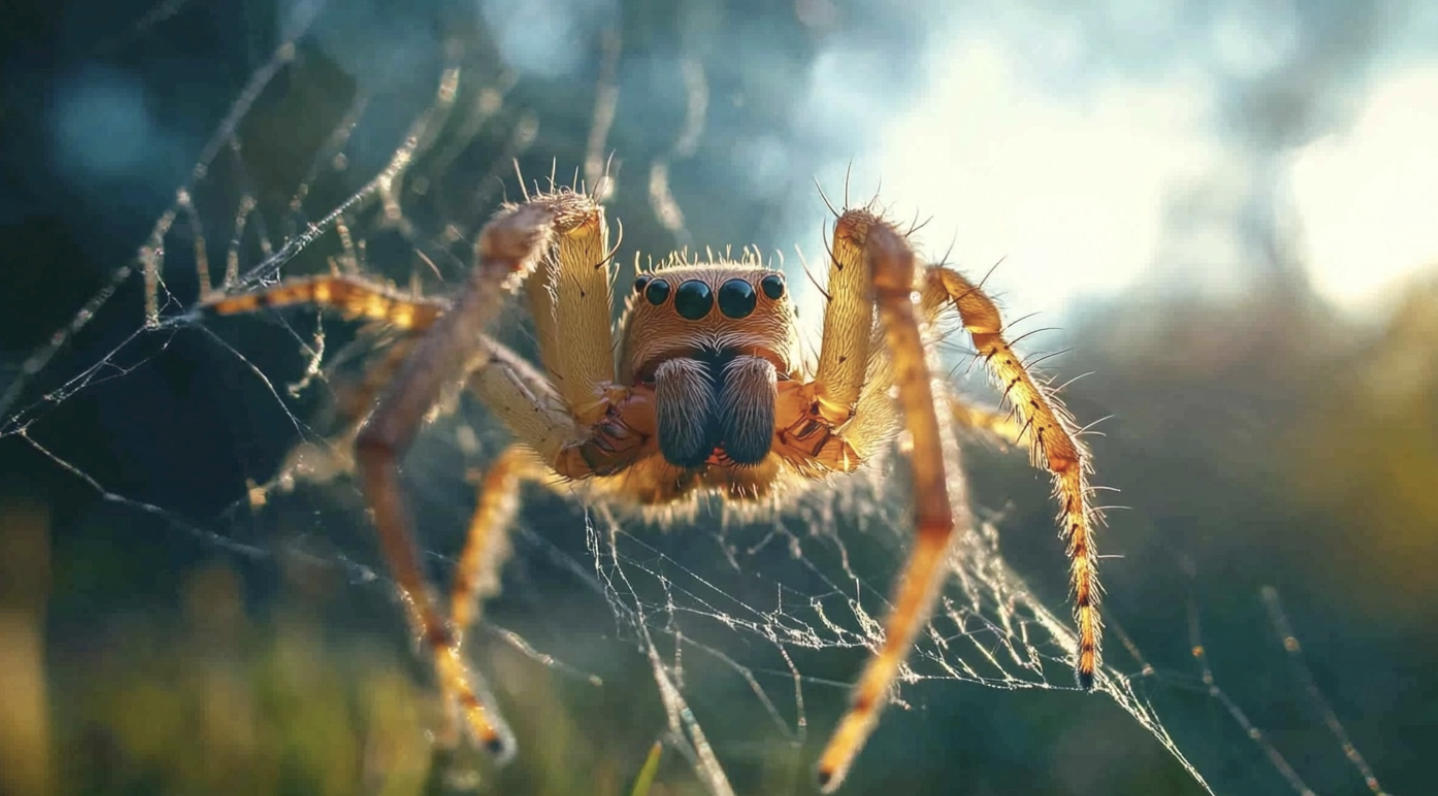
Venture into the wild world of “N” named mammals—a spellbinding trip through nature’s diversity.
From the mystical narwhal with its spiraling tusk to the deep-diving northern bottlenose whale, these creatures showcase evolution’s remarkable adaptations.
Uncover the cancer-resistant naked mole rat’s underground colonies and the nilgai’s impressive leaping abilities.
Marvel at the endangered numbat’s specialized termite-hunting techniques and the night monkey’s nocturnal lifestyle.
Scour on how the northern elephant seal conquers ocean depths and the nimble Nubian ibex scales impossible cliffs.
Each species tells a unique story of survival, adaptation, and resilience in its distinct habitat—from Arctic waters to African deserts, tropical forests to ocean depths.
Join us as we uncover the extraordinary lives of these remarkable “N” mammals that roam our planet.
Common Mammals That Begin With The Letter ‘N’
1. Narwhal
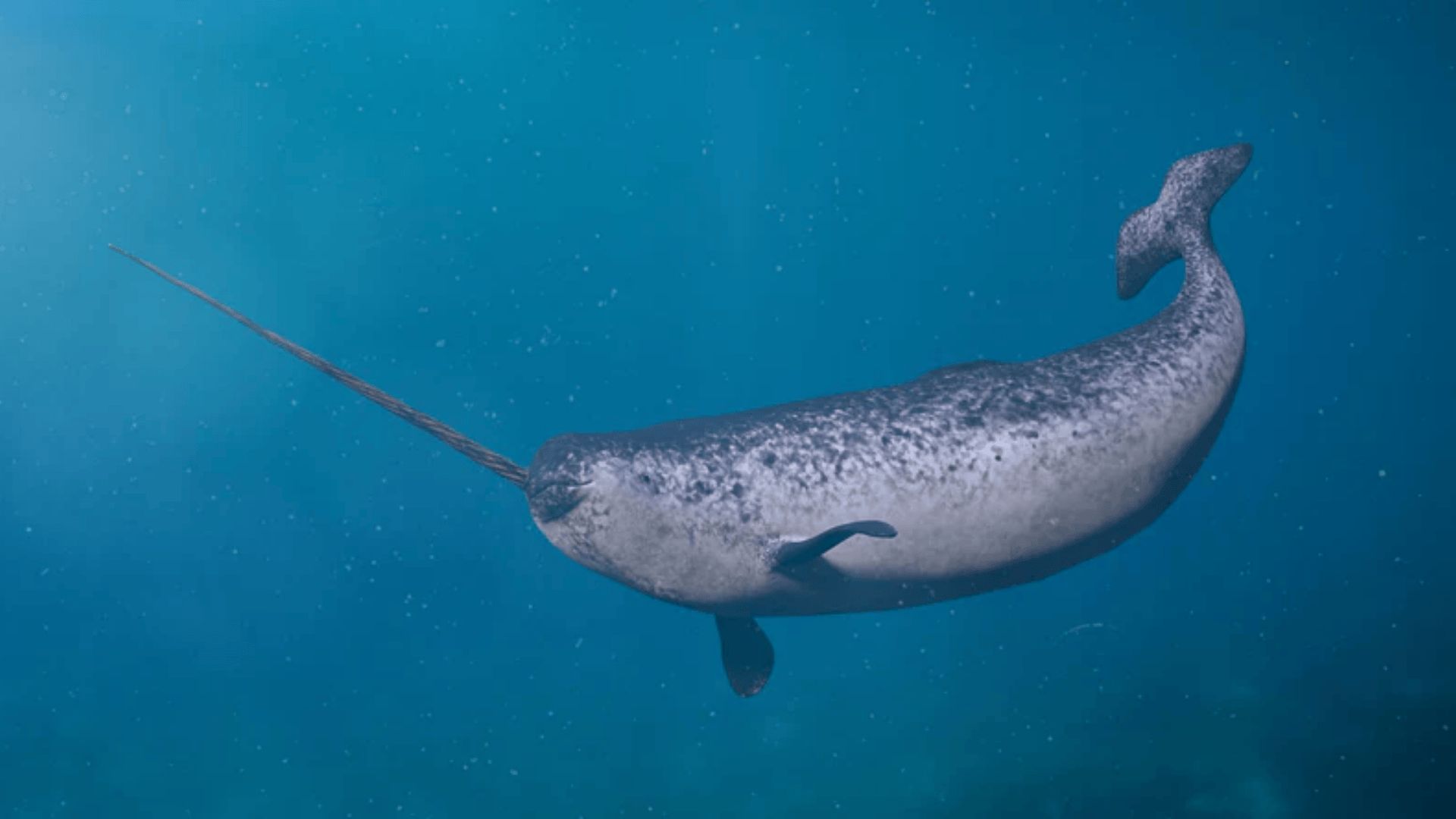
The narwhal is a medium-sized toothed whale that possesses a large “tusk” from a protruding canine tooth.
These marine mammals primarily inhabit Arctic waters around Greenland, Canada, and Russia, and are known for their distinctive spiral tusks which can grow up to 10 feet long.
- Region of Habitat: Arctic and sub-Arctic waters surrounding northern Canada, Greenland, Russia, and Norway
- Scientific Name: Monodon monoceros
- Feeding Habits: Carnivorous, feeding primarily on fish, squid, and shrimp
- What Sound They Make: Clicks, whistles, and knocks for echolocation
Fun Facts
The narwhal’s tusk is actually an elongated left canine tooth that can grow through the upper lip.
Despite popular belief, they don’t use their tusks for fighting or breaking ice. Still, research suggests they may use them as sensory organs to detect changes in water temperature, pressure, and particle gradients.
2. Naked Mole Rat
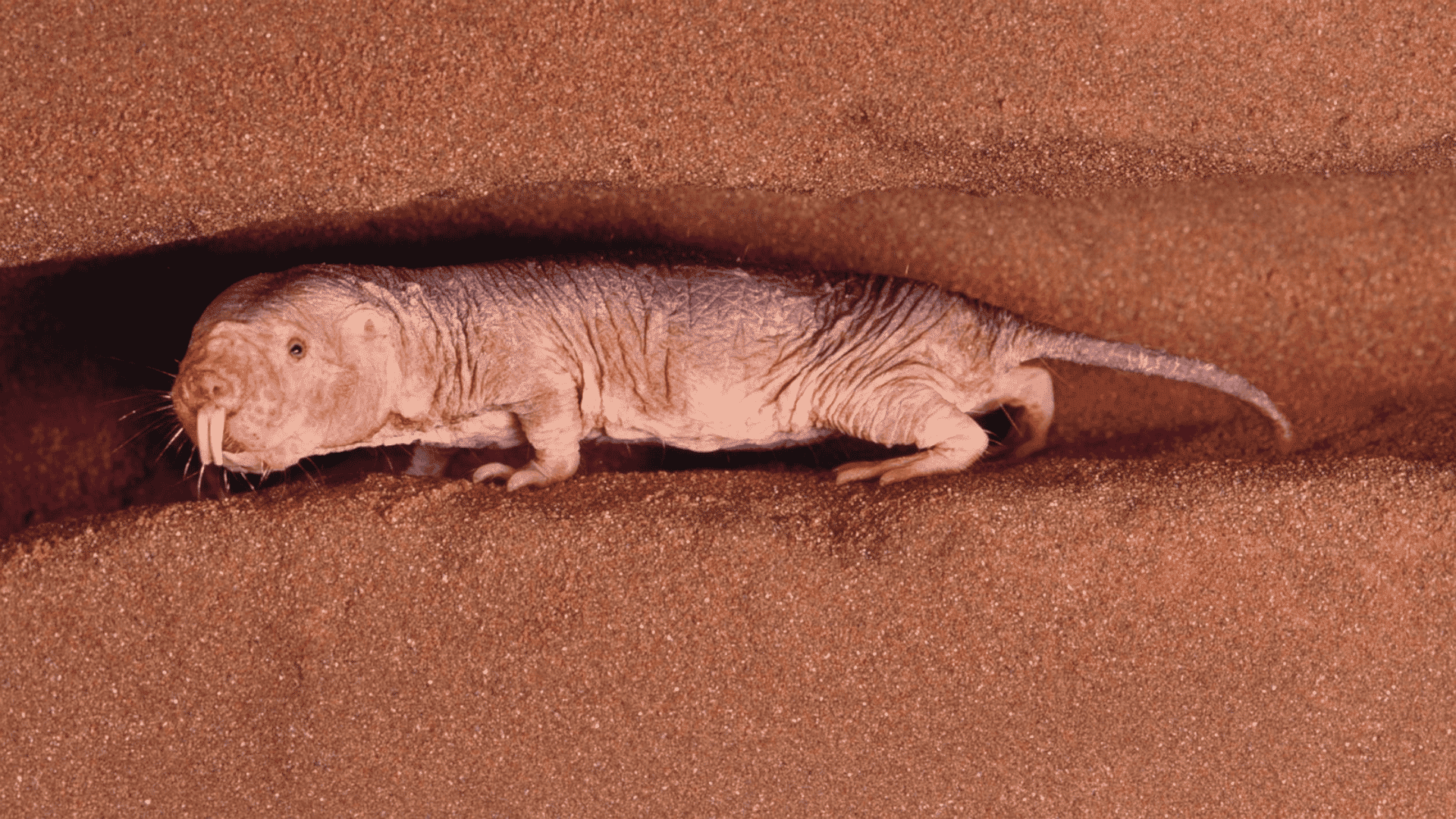
The naked mole rat is a hairless, underground-dwelling rodent native to parts of East Africa. These eusocial mammals live in colonies with a queen and workers similar to bees, and they are known for their remarkable longevity and resistance to cancer.
- Region of Habitat: Arid parts of East Africa, particularly Kenya, Ethiopia, and Somalia
- Scientific Name: Heterocephalus glaber
- Feeding Habits: Herbivorous, feeding on large tubers and roots
- What Sound They Make: Chirps, squeaks, and grunts for communication within colonies
Fun Facts
Naked mole rats can survive with incredibly low oxygen levels, living up to 18 minutes without oxygen by switching their metabolism to run on fructose like plants.
They also show negligible senescence (they don’t age conventionally) and can live over 30 years, exceptionally long for a rodent of their size.
3. Nutria (Coypu)
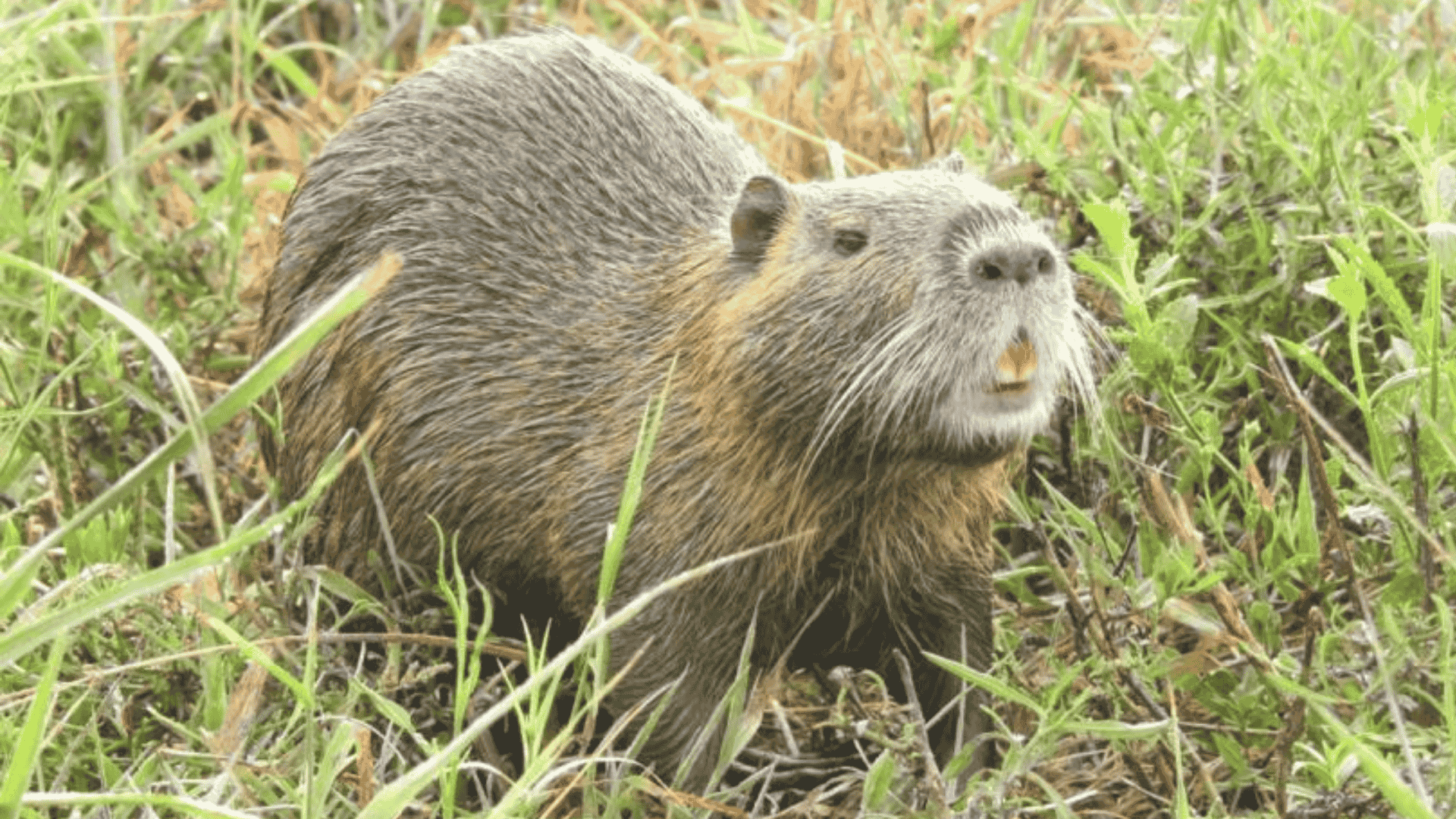
The nutria is a large, semi-aquatic rodent that resembles a beaver with a rat-like tail. Originally native to South America, it has been introduced to many parts of North America, Europe, and Asia, where it has become invasive, often causing significant damage to wetland ecosystems.
- Region of Habitat: Native to South America; introduced to North America, Europe, Africa, and Asia
- Scientific Name: Myocastor coypus
- Feeding Habits: Herbivorous, consuming aquatic vegetation, crops, and tree bark
- What Sound They Make: Whines, squeaks, and purrs
Fun Facts
Nutria have distinctive orange-yellow incisor teeth that contain iron compounds, making them incredibly strong for gnawing tough vegetation.
Their mammary glands are located high on their sides rather than on their bellies, allowing them to nurse their young while swimming.
4. Nilgai
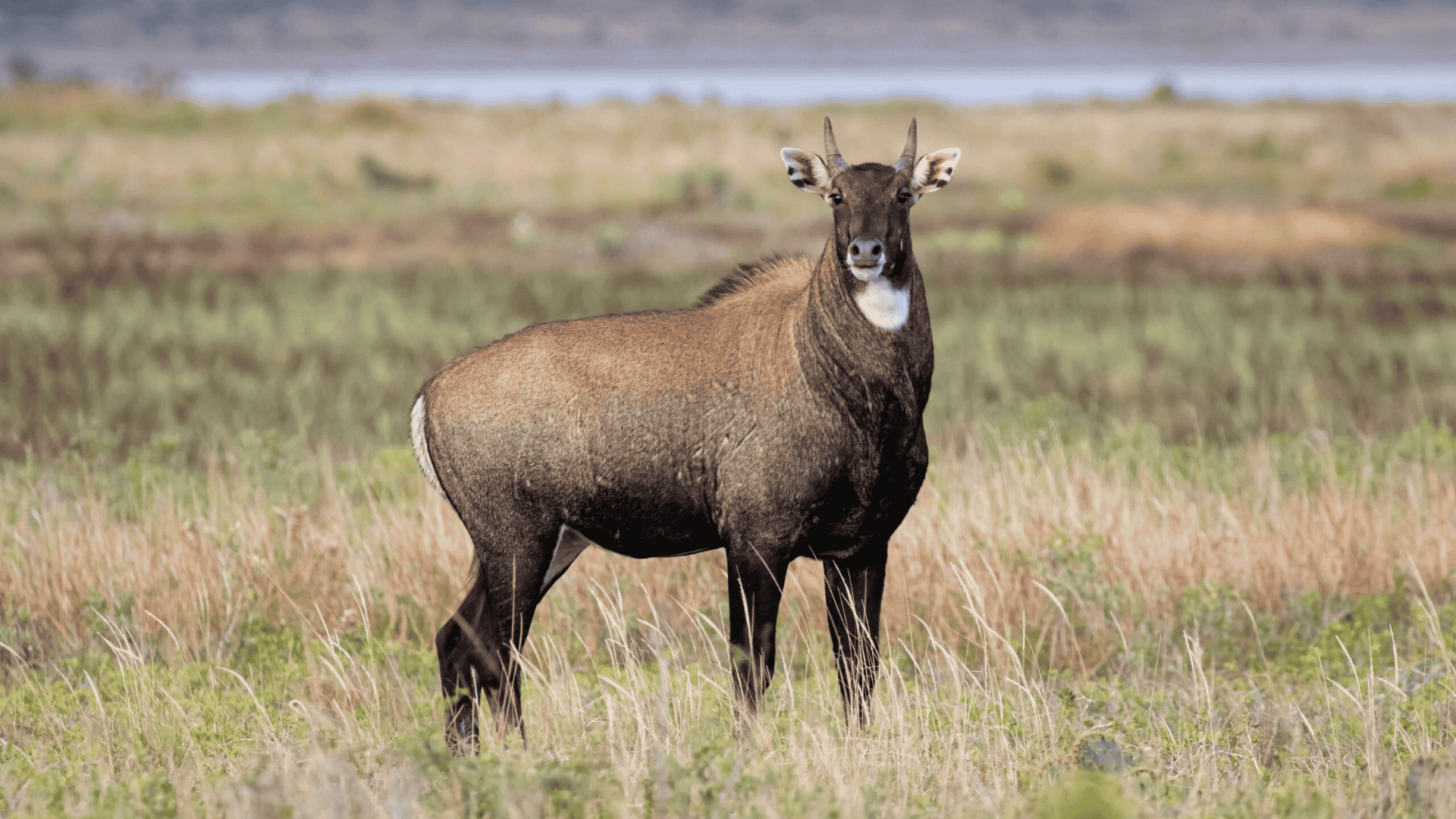
The nilgai is the largest Asian antelope, with males exhibiting a distinctive blue-gray coloration. These powerful antelopes are known for their impressive leaping ability and are considered sacred in parts of India due to their association with cows.
- Region of Habitat: Northern Indian subcontinent; introduced to Texas, USA
- Scientific Name: Boselaphus tragocamelus
- Feeding Habits: Herbivorous, grazing on grasses and browsing on leaves and fruits
- What Sound They Make: Bellowing roars and short, sharp barks
Fun Facts
Despite their large size (males can weigh up to 300 kg), nilgai can jump over 2 meters high from a standing position.
Their name literally means “blue cow” in Hindi, reflecting both their coloration and their significance in Hindu culture, where they’re often protected from hunting.
5. Numbat
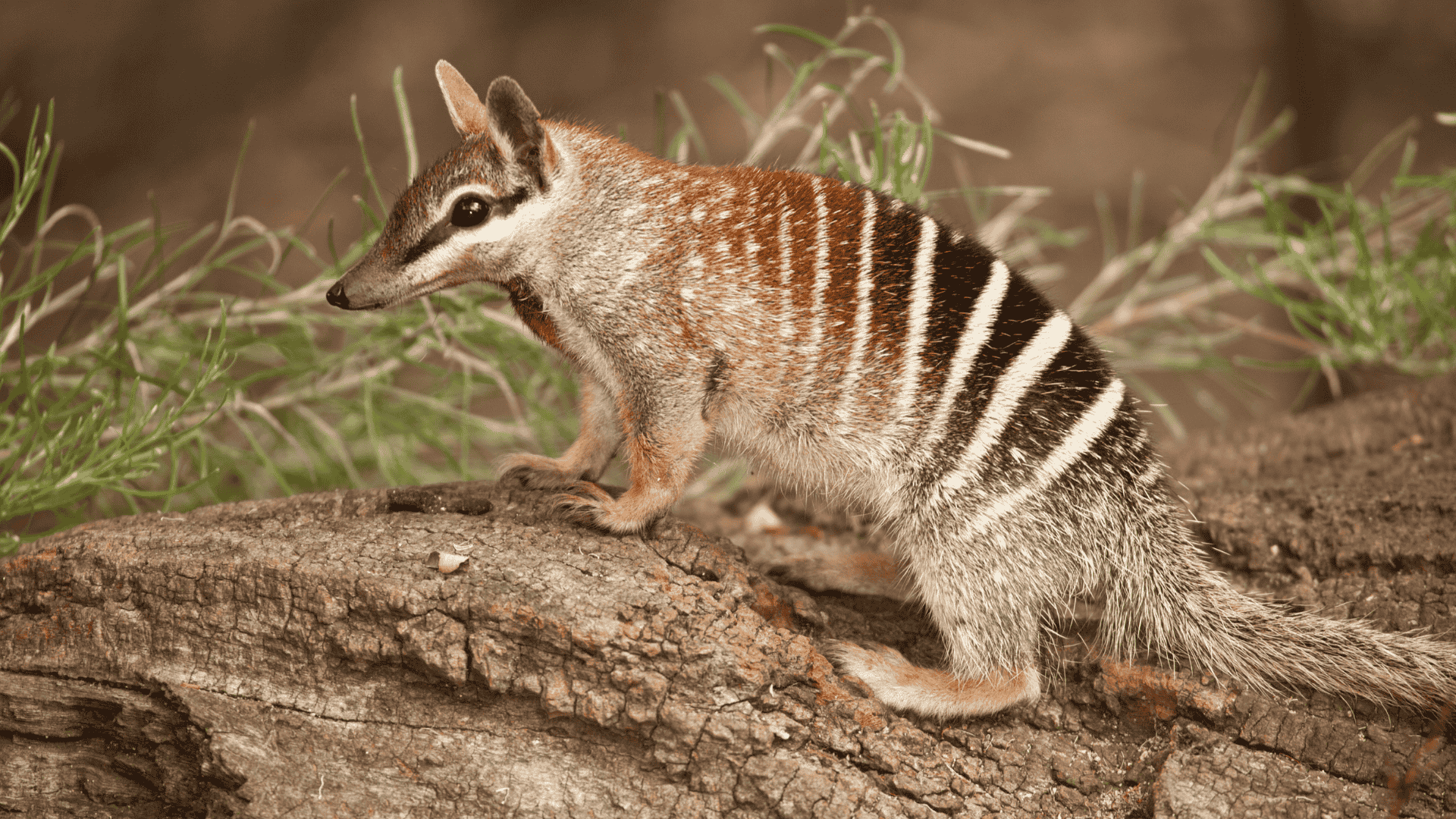
The numbat is a small, striped marsupial native to Western Australia that specializes in eating termites.
With distinctive horizontal stripes across its back and a long, sticky tongue, this endangered mammal is highly adapted for its insectivorous lifestyle.
- Region of Habitat: Eucalyptus forests in Western Australia
- Scientific Name: Myrmecobius fasciatus
- Feeding Habits: Insectivorous, specializing in termites (up to 20,000 daily)
- What Sound They Make: Soft chirps and hisses
Fun Facts
Unlike most marsupials, the numbat is diurnal (active during the day), so it can hunt termites when they’re active.
It’s one of the few marsupials that doesn’t have a true pouch; instead, the young attach to the mother’s nipples and are dragged along as she moves, protected only by the surrounding fur.
6. Nyala
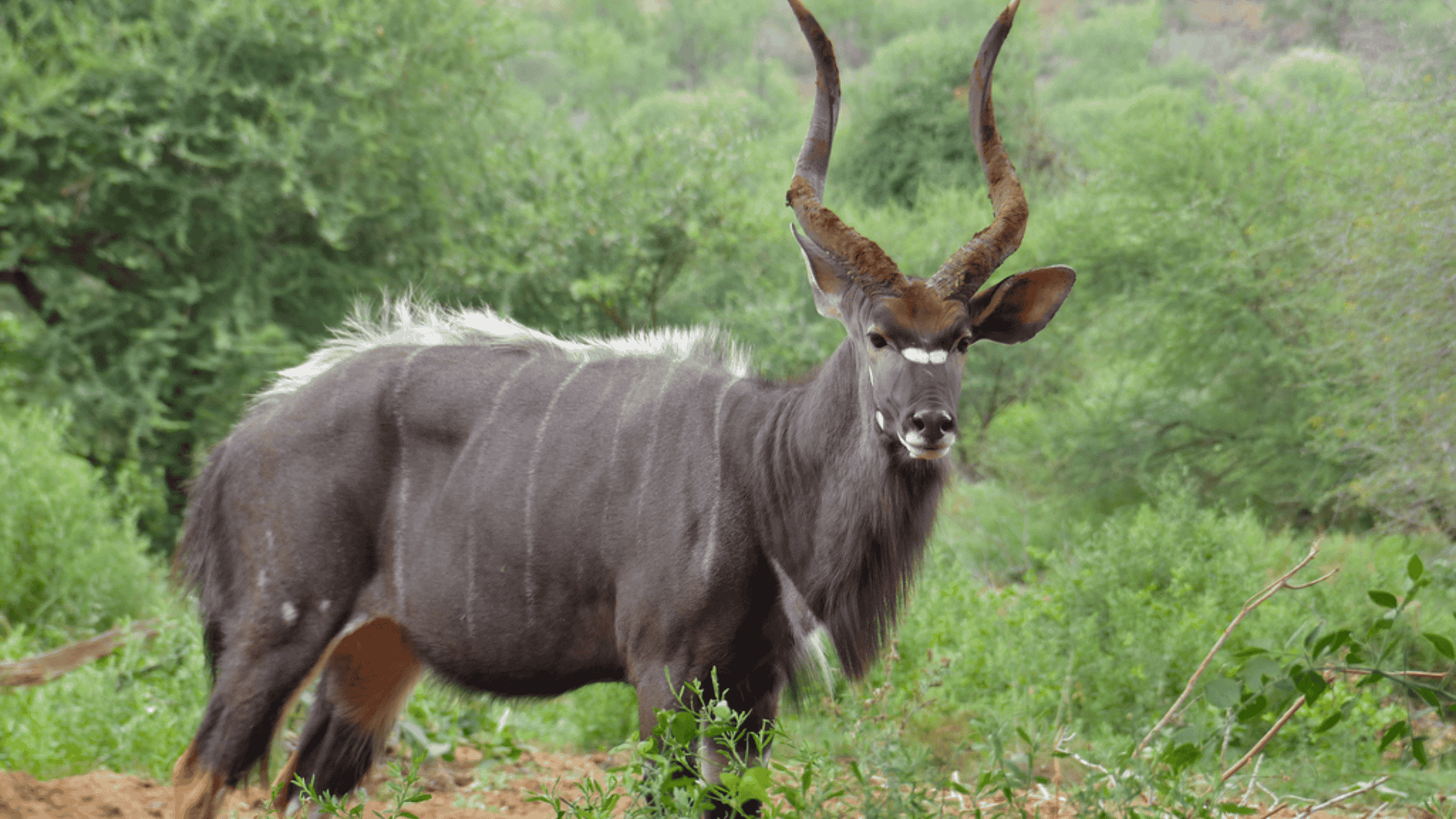
The nyala is a spiral-horned antelope native to southern Africa, known for its pronounced sexual dimorphism.
Males have striking dark gray-brown coats with white stripes, spiral horns, and manes, while females are reddish-brown without horns.
- Region of Habitat: Southern Africa, particularly Malawi, Mozambique, South Africa, and Zimbabwe
- Scientific Name: Tragelaphus angasii
- Feeding Habits: Mixed feeder, browsing on leaves, fruits, and flowers, and occasionally grazing
- What Sound They Make: Barks when alarmed and soft grunts
Fun Facts
The Nyala has specialized adaptations for browsing, including an upper lip that extends beyond the lower lip to help pull leaves from branches.
During courtship, males perform a distinctive lateral display: They walk stiffly with an arched back, making their body appear larger to impress females.
7. Night Monkey
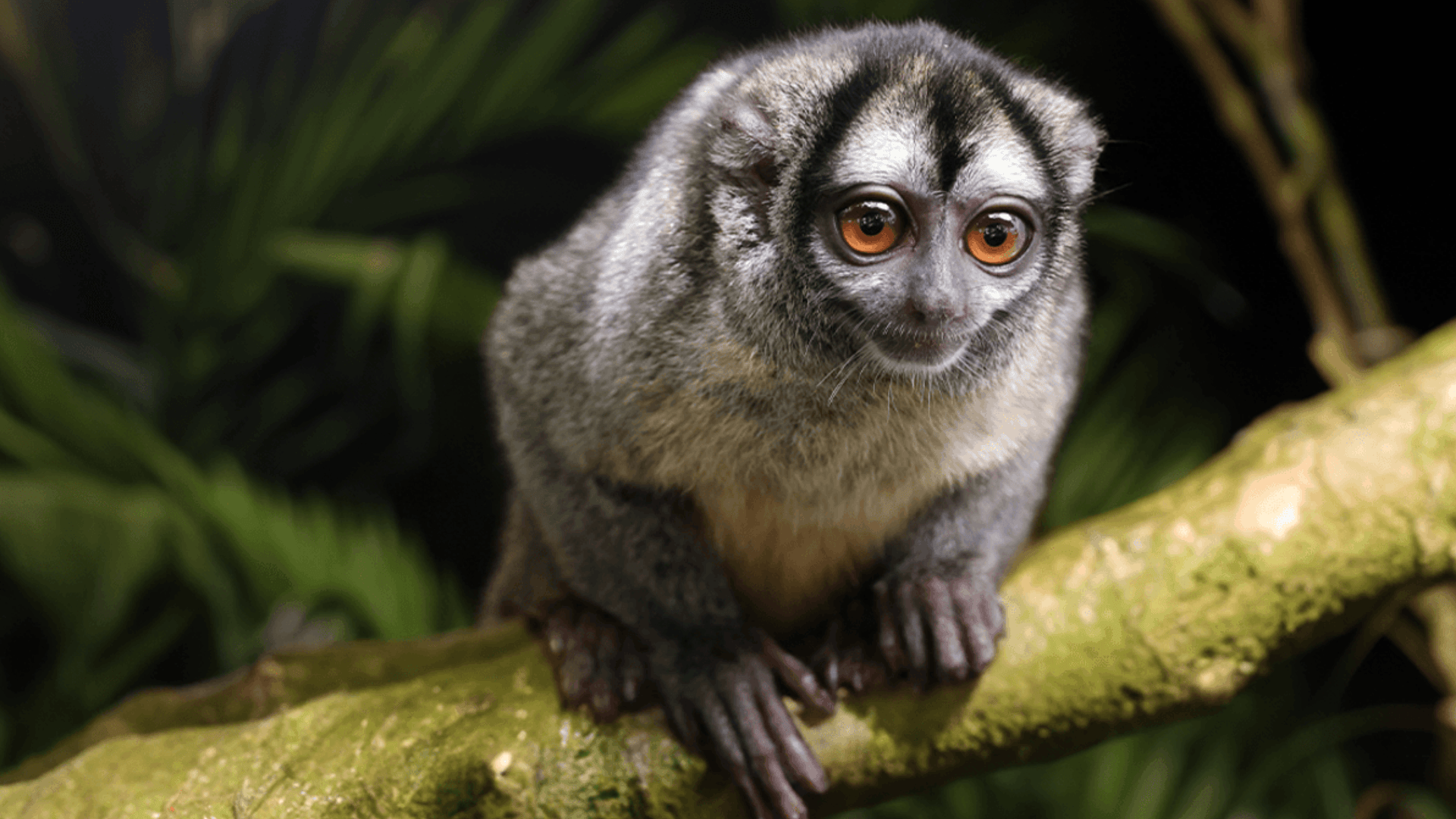
The night monkey, also known as the owl monkey or douroucouli, is the only truly nocturnal monkey species.
With their enormous eyes adapted for night vision and distinctive hooting calls, these small primates are well-adapted to their nighttime lifestyle in the forests of Central and South America.
- Region of Habitat: Tropical forests of Central and South America
- Scientific Name: Aotus species (genus)
- Feeding Habits: Omnivorous, eating fruits, leaves, insects, bird eggs, and small vertebrates
- What Sound They Make: Resonant hooting calls, whistles, and trills
Fun Facts
Night monkeys are one of the few monogamous primate species, forming strong pair bonds with a single partner.
The male is the primary caregiver for infants, carrying them on his back most of the time and only passing them to the mother for nursing.
Note: Night monkey refers to several species in the genus Aotus, all with similar nocturnal adaptations.
8. Noctule Bat
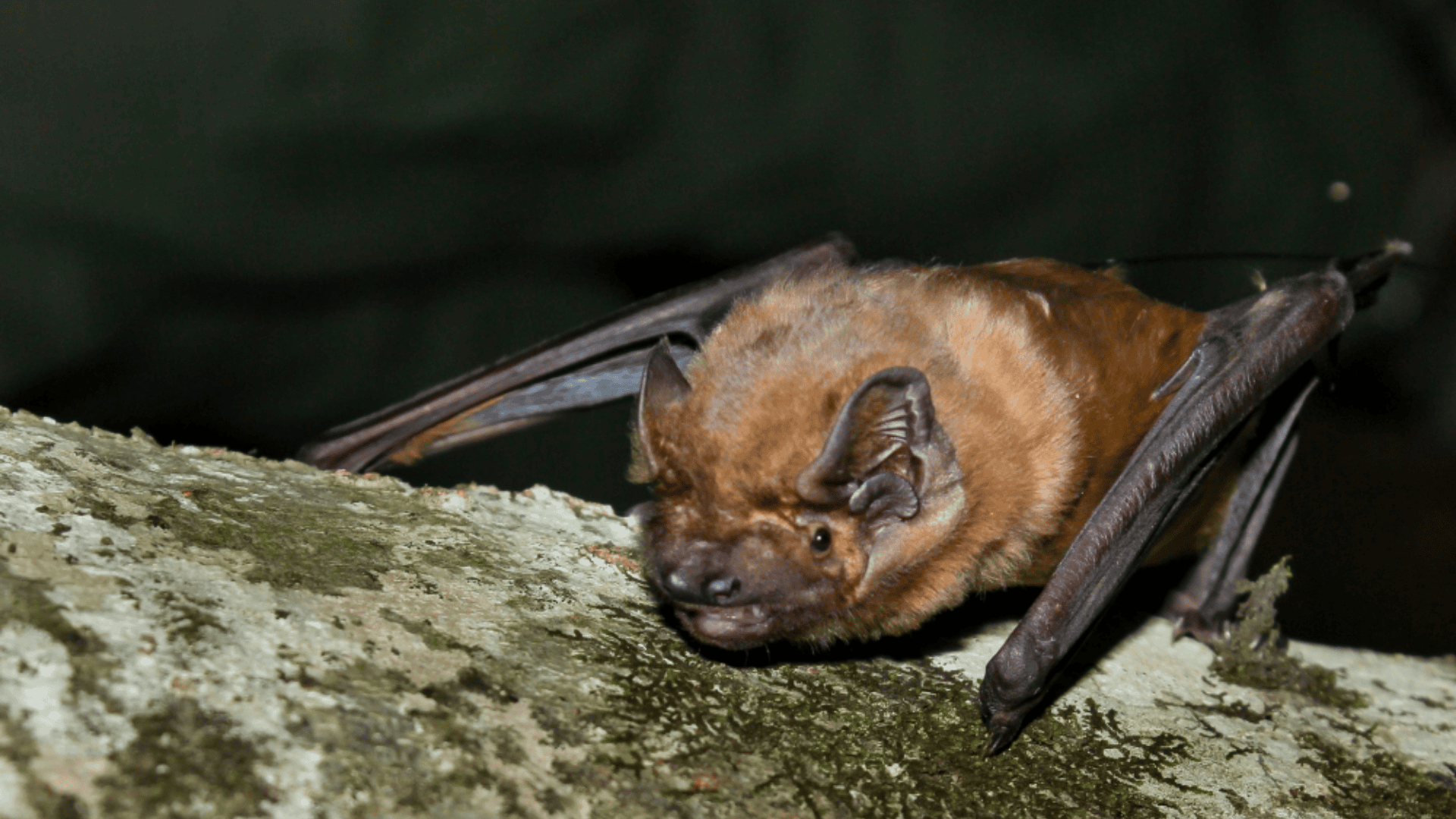
The noctule bat is one of Europe’s largest bat species, known for its early evening flights and distinctive call.
These fast-flying mammals can reach speeds of up to 50 km/h as they hunt insects on the wing, often flying high above the forest canopy.
- Region of Habitat: Europe, Asia, and North Africa
- Scientific Name: Nyctalus noctula
- Feeding Habits: Insectivorous, catching large moths, beetles, and flies in flight
- What Sound They Make: Loud, audible social chattering and echolocation calls
Fun Facts
Noctule bats are one of the earliest bats to emerge in the evening, sometimes flying before sunset, which makes them easier to observe than many other bat species.
They can migrate over 1,500 km between summer and winter roosts, making them one of Europe’s most mobile bat species.
9. Narina Mongoose
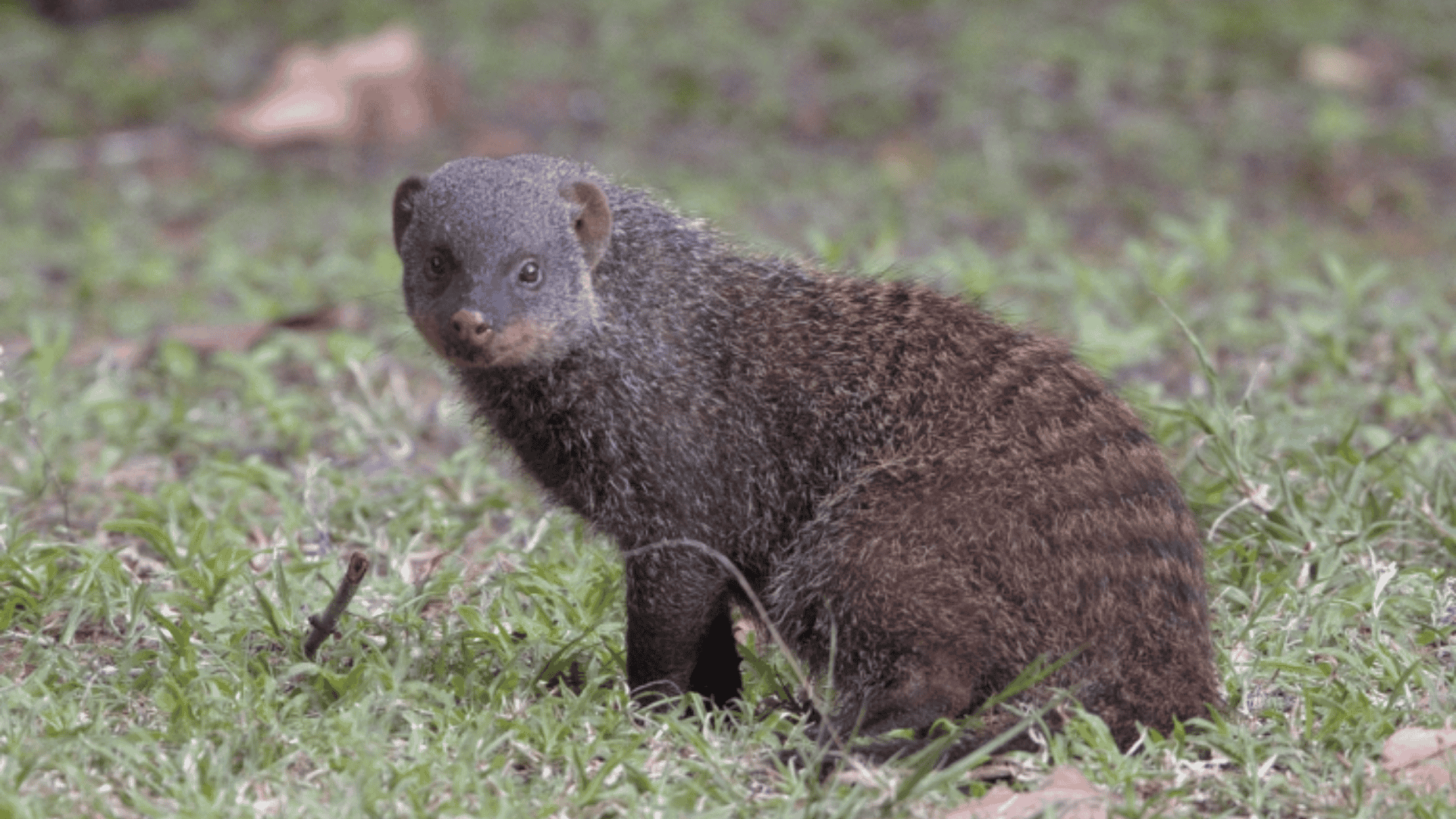
The Narina mongoose is a slender, small carnivore with a distinctive reddish-brown coat found in forested regions of Eastern Africa.
These elusive mammals are known for their exceptional agility and skill at hunting small prey in dense vegetation.
- Region of Habitat: Forested regions of Eastern Africa
- Scientific Name: Herpestes narina
- Feeding Habits: Carnivorous, feeding on small mammals, birds, eggs, reptiles, and insects
- What Sound They Make: Soft chirps, chattering, and growls when threatened
Fun Facts
The Narina mongoose has specialized hunting techniques, including a famous behavior of standing on its hind legs to scan its surroundings for both prey and predators.
Their name comes from the Narina trogon, a bird that shares the same habitat. Both species were found around the same time.
Note: This is a less common mongoose species and sometimes classified under different taxonomic arrangements.
10. Northern Right Whale
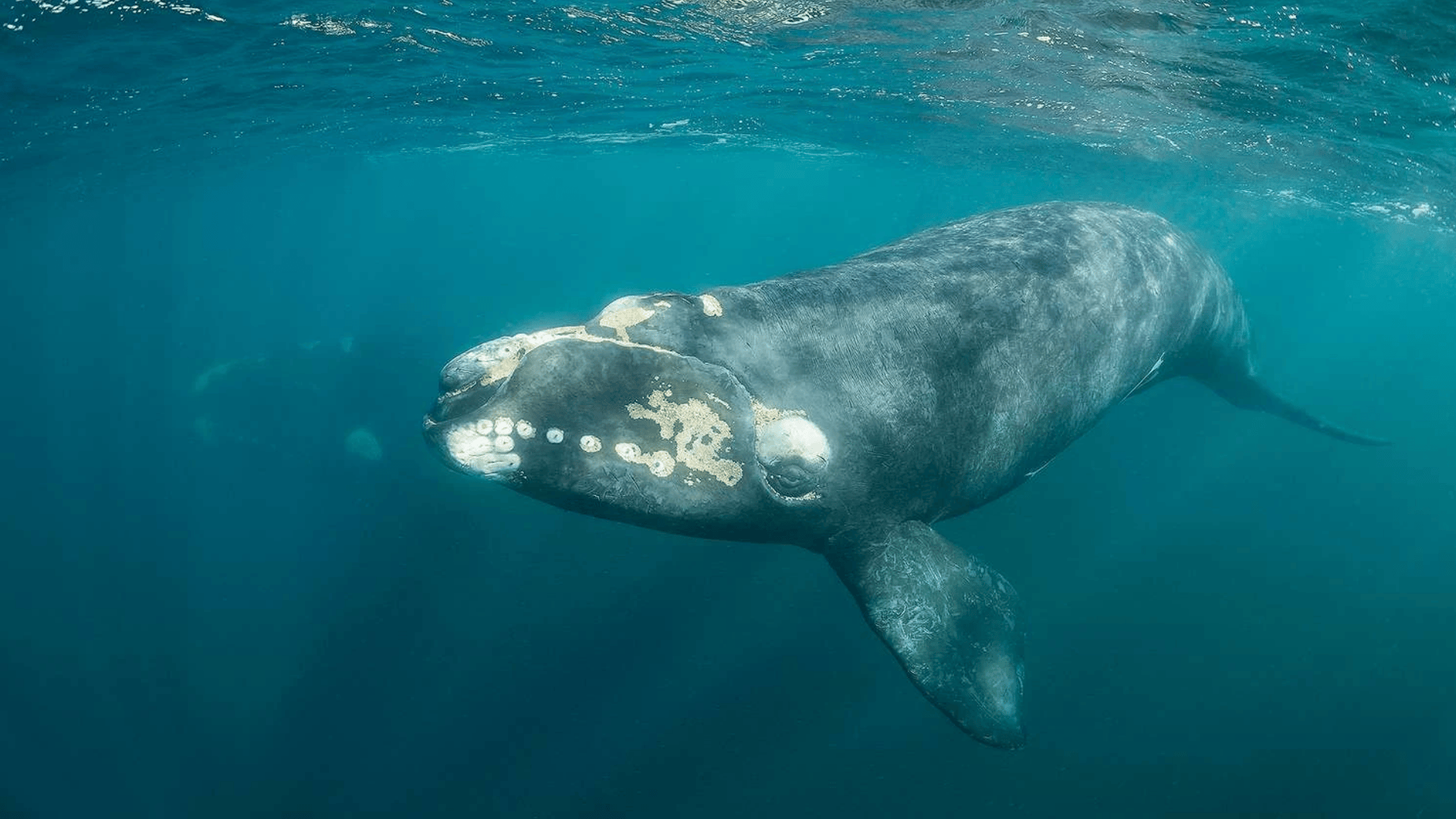
The Northern right whale is one of the most endangered whale species, with fewer than 400 individuals remaining.
These massive marine mammals can be identified by the callosities (rough patches of skin) on their heads and their lack of a dorsal fin.
- Region of Habitat: North Atlantic Ocean, from Canada and the U.S. to Europe
- Scientific Name: Eubalaena glacialis
- Feeding Habits: Filter feeder, consuming zooplankton and small crustaceans by skimming through water with open mouth
- What Sound They Make: Low frequency moans, groans, and belches for communication
Fun Facts
The name “right whale” comes from whalers who considered them the “right” whales to hunt because they swim slowly, stay close to shore, and float when killed.
They have the thickest blubber of any whale (up to 50 cm thick) and can have callosities on their heads that are unique to each individual, like a human fingerprint.
11. Northern Elephant Seal
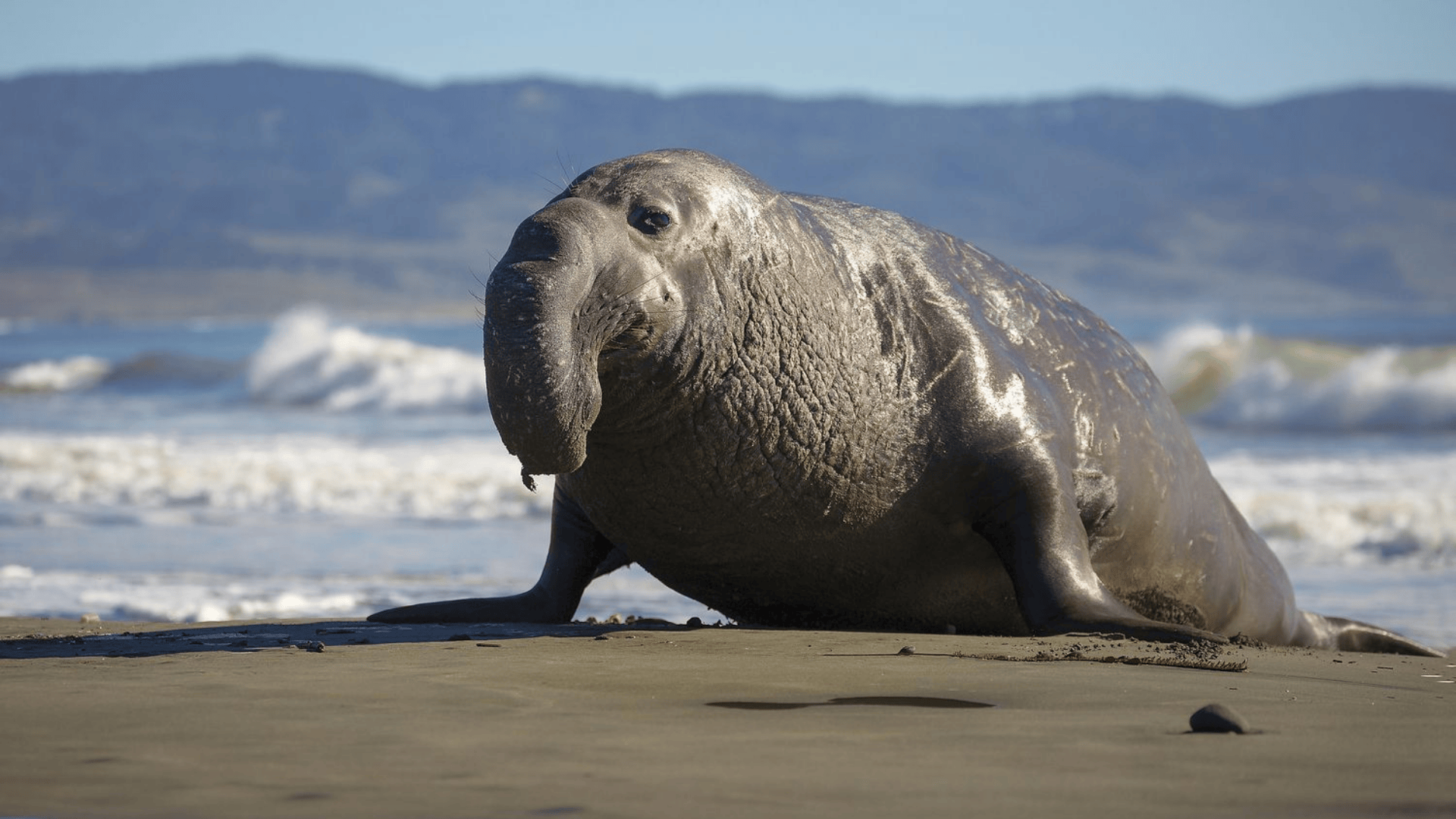
The northern elephant seal is the largest of all pinnipeds. Males develop a distinctive proboscis (elongated snout) that resembles an elephant’s trunk.
These marine mammals spend most of their lives at sea, coming ashore only to breed, give birth, and molt.
- Region of Habitat: Eastern Pacific Ocean from Alaska to Mexico
- Scientific Name: Mirounga angustirostris
- Feeding Habits: Carnivorous, feeding primarily on deep-water fish, sharks, rays, and squid
- What Sound They Make: Loud, resonant bellowing and roaring from males; softer calls from females
Fun Facts
Northern elephant seals are incredible divers. They routinely reach depths of 1,500 meters (nearly a mile) and stay underwater for up to 2 hours.
They have the most extreme sexual dimorphism of any mammal, with males weighing up to 2,300 kg (5,100 lbs) while females weigh only about 700 kg (1,500 lbs).
12. Northern Fur Seal
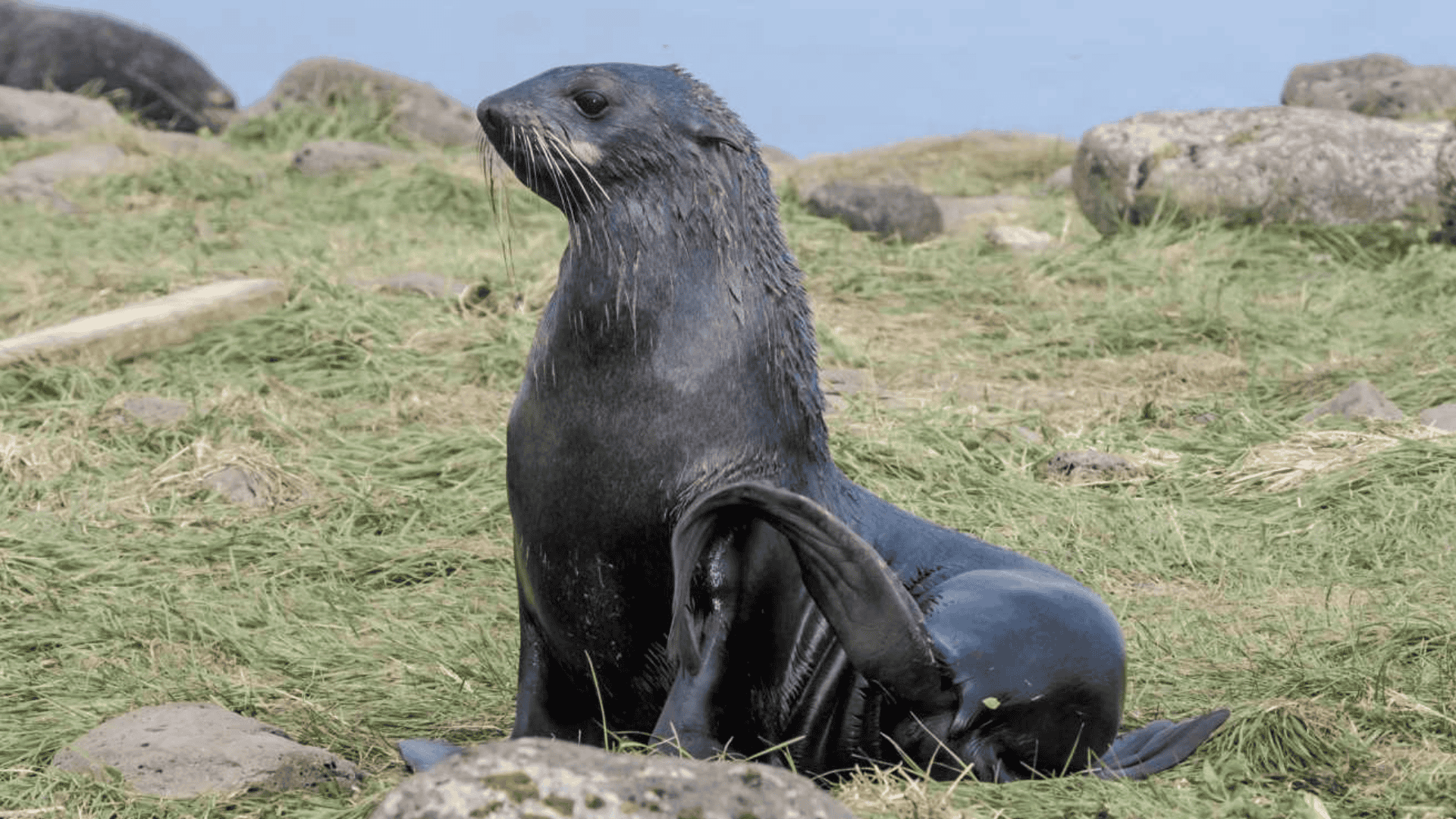
The northern fur seal is a distinctive eared seal with thick fur. It is known for its remarkable navigation abilities and pronounced sexual dimorphism. Males are substantially larger and have a mane-like ruff of fur, while females are smaller and lighter in color.
- Region of Habitat: North Pacific Ocean from Japan to the western United States
- Scientific Name: Callorhinus ursinus
- Feeding Habits: Carnivorous, feeding on fish (particularly walleye pollock), squid, and occasionally birds
- What Sound They Make: Males produce loud, deep roars and growls; females make higher-pitched bleats
Fun Facts
Northern fur seals have an exceptional homing instinct, returning to the same breeding site each year with remarkable precision.
Their dense fur contains up to 300,000 hairs per square inch—one of the thickest fur coats of any animal—which nearly led to their extinction due to the fur trade in the 18th and 19th centuries.
13. Nubian Ibex
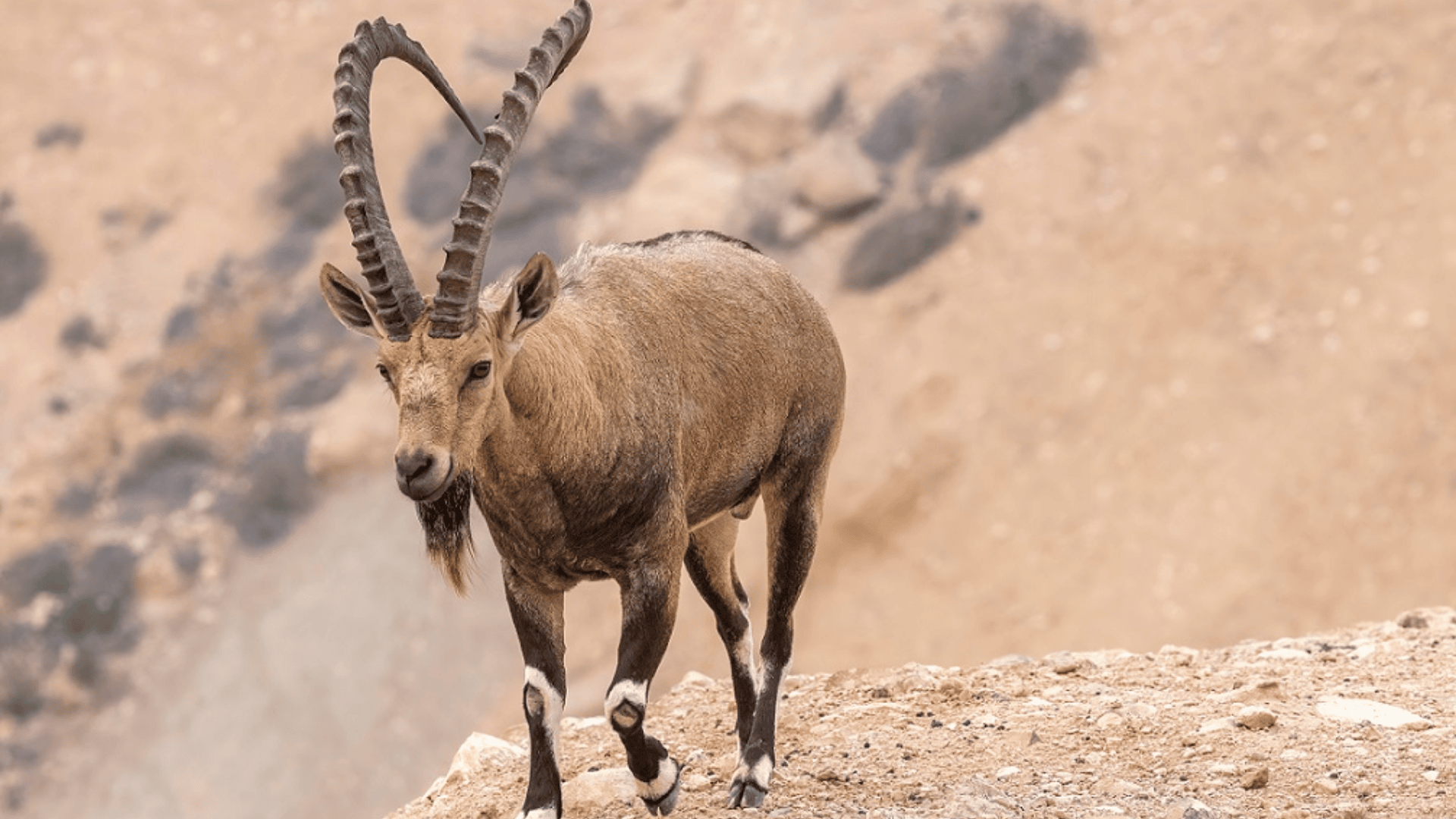
The Nubian ibex is a desert-dwelling goat species with impressive curved horns that can reach up to 120 cm in length. These agile climbers are known for their ability to navigate steep, rocky terrain with remarkable ease and grace.
- Region of Habitat: Mountainous deserts in northeastern Africa and the Arabian Peninsula
- Scientific Name: Capra nubiana
- Feeding Habits: Herbivorous, feeding on grasses, herbs, bushes, and leaves
- What Sound They Make: Bleats, snorts, and whistles during mating season
Fun Facts
Nubian ibexes have incredible balance and climbing abilities. They can scale nearly vertical cliff faces and jump between ledges separated by several meters.
Their specialized concave hooves have soft rubbery cores surrounded by hard sharp edges, providing them with exceptional grip on rocky surfaces—similar to high-performance climbing shoes.
14. Nile Lechwe
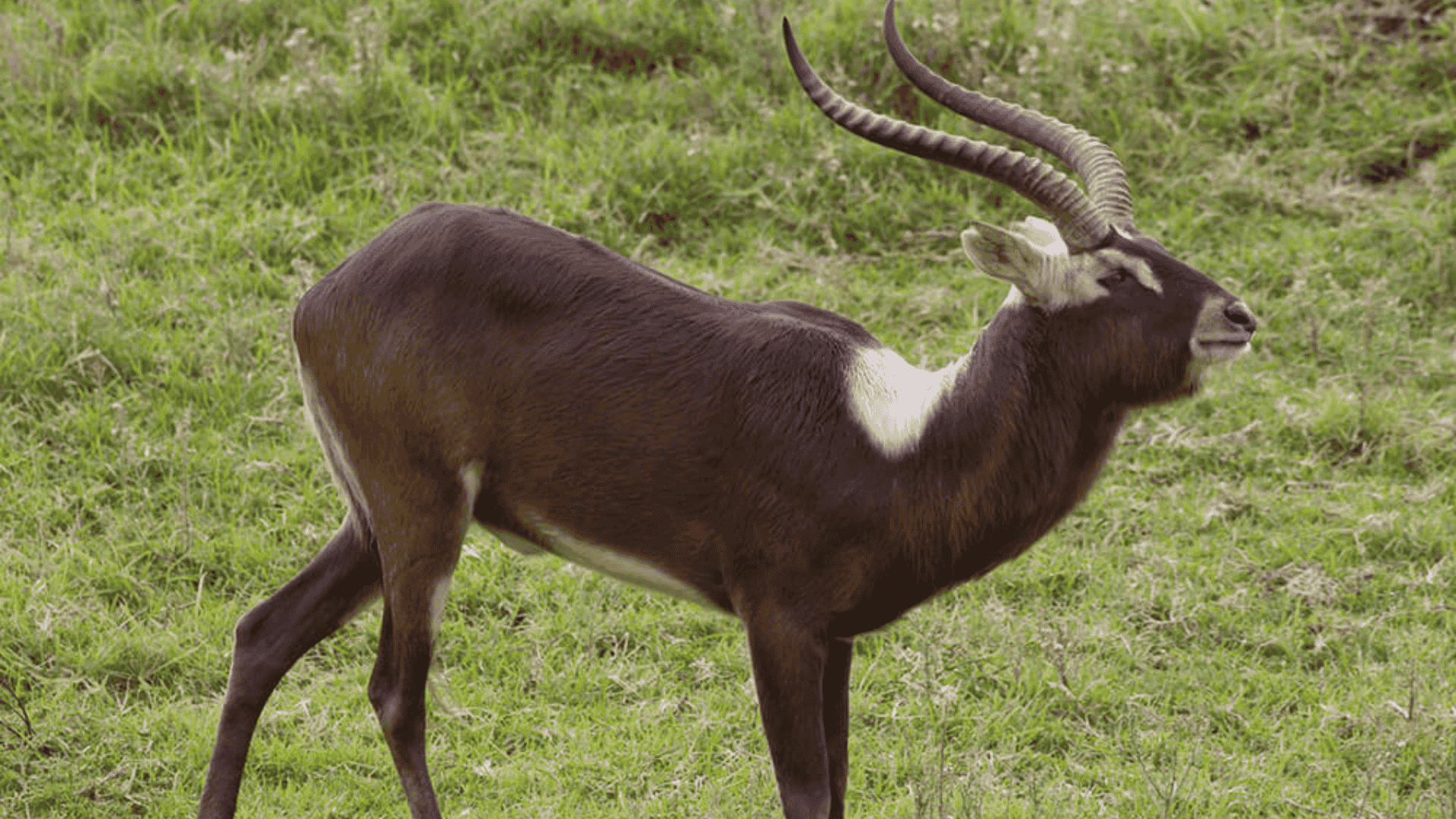
The Nile lechwe is a specialized antelope adapted to wetland environments. Its elongated, splayed hooves prevent it from sinking in marshy ground. Males display a striking dark brown to black coloration with white patches, while females are tawny brown.
- Region of Habitat: Swamps and floodplains of South Sudan and Ethiopia
- Scientific Name: Kobus megaceros
- Feeding Habits: Herbivorous, grazing on aquatic plants, grasses, and sedges
- What Sound They Make: Whistles and snorts, with males making loud grunting sounds during mating season
Fun Facts
The Nile lechwe is one of the few antelopes specially adapted for a semi-aquatic lifestyle. Its coat contains water-repellent oils, and its elongated hooves spread out to provide stability on soft, muddy ground.
During seasonal flooding, they are known to swim long distances between areas of dry land, using their partially webbed feet to move efficiently through water.
15. Northern Bottlenose Whale

The Northern bottlenose whale is a deep-diving beaked whale with a distinctive bulbous forehead and beak-like snout.
These large marine mammals are known for their curiosity toward ships and their remarkable diving capabilities in their deep-ocean habitat.
- Region of Habitat: Cold, deep waters of the North Atlantic Ocean
- Scientific Name: Hyperoodon ampullatus
- Feeding Habits: Carnivorous, feeding primarily on squid, but also fish and invertebrates found in deep water
- What Sound They Make: Clicking and whistling sounds used for echolocation and communication
Fun Facts
Northern bottlenose whales are among the deepest-diving mammals, capable of diving to depths exceeding 1,400 meters (4,600 feet) and staying submerged for over two hours.
Their curiosity toward ships made them easy targets for whalers historically, but this same trait has allowed scientists to study their behavior more closely than many other beached whale species.
Some More Mammals That Begin with the Letter ‘N’
16. Northern Tamandua
17. Nile Bushrat
18. Northern Quoll
19. Norwegian Lemming
20. Northern Tree Shrew
21. Nest Rat
22. Nocturnal Golden Mouse
23. Nepalese Shrew
24. Nuthatch Mouse
25. North American River Otter
26. Neotropical River Otter
27. Northern Flying Squirrel
28. Northern Hairy-nosed Wombat
29. Nicaraguan Long-nosed Bat
30. Nine-banded Armadillo
31. Nara Shrewmouse
32. Namibian Rock Mouse
33. Nelson’s Pocket Mouse
34. North American Deer Mouse
35. Northern Pygmy Mouse
36. Northern Short-tailed Shrew
37. Nile Rat
Ending Notes
These “N” mammals represent just a glimpse into our planet’s incredible biodiversity.
Each species has evolved remarkable adaptations—specialized diets, unique physical features, and fascinating behaviors—that allow them to thrive in their ecological niches.
From the deep ocean realms of the northern right whale to the arid mountains inhabited by the Nubian ibex, these mammals demonstrate nature’s ingenious solutions to environmental challenges.
Many face significant conservation concerns as human activity continues to impact their habitats and populations. Understanding these extraordinary creatures helps us appreciate the fragile balance of our ecosystems and the importance of conservation efforts.
By learning about these mammals, we gain not just knowledge but inspiration from their resilience and a deeper responsibility to protect the natural world for generations to come.
If you’re interested in more informative animal and wildlife content, feel free to click here and explore other blogs that you might enjoy!

